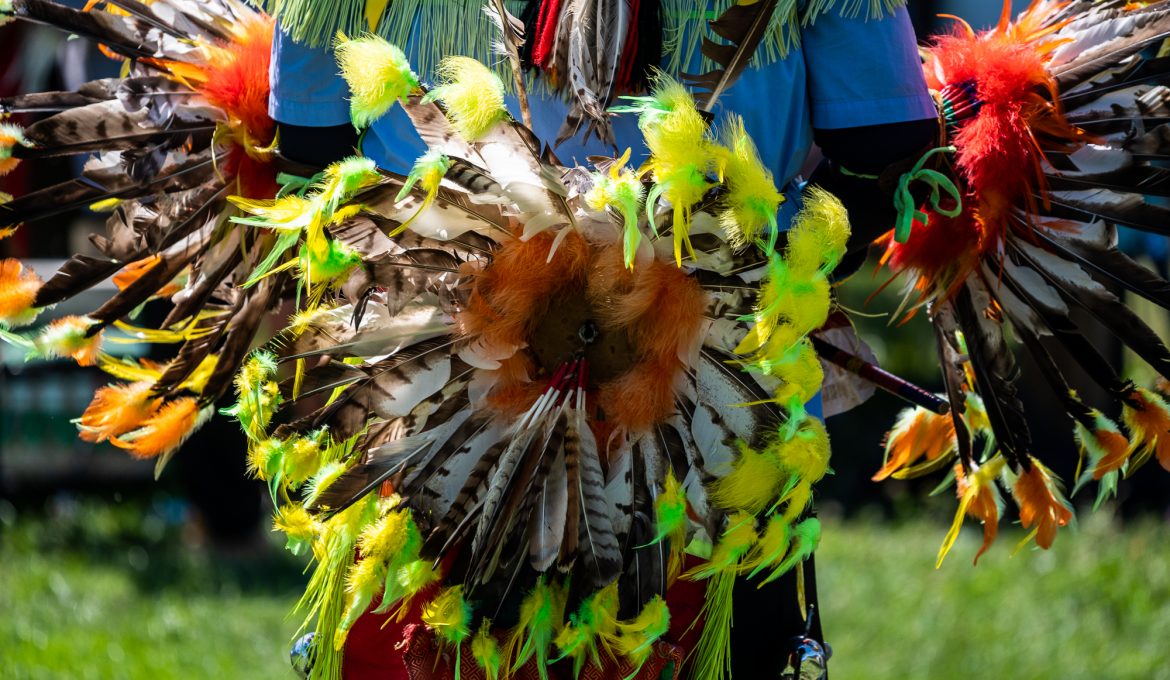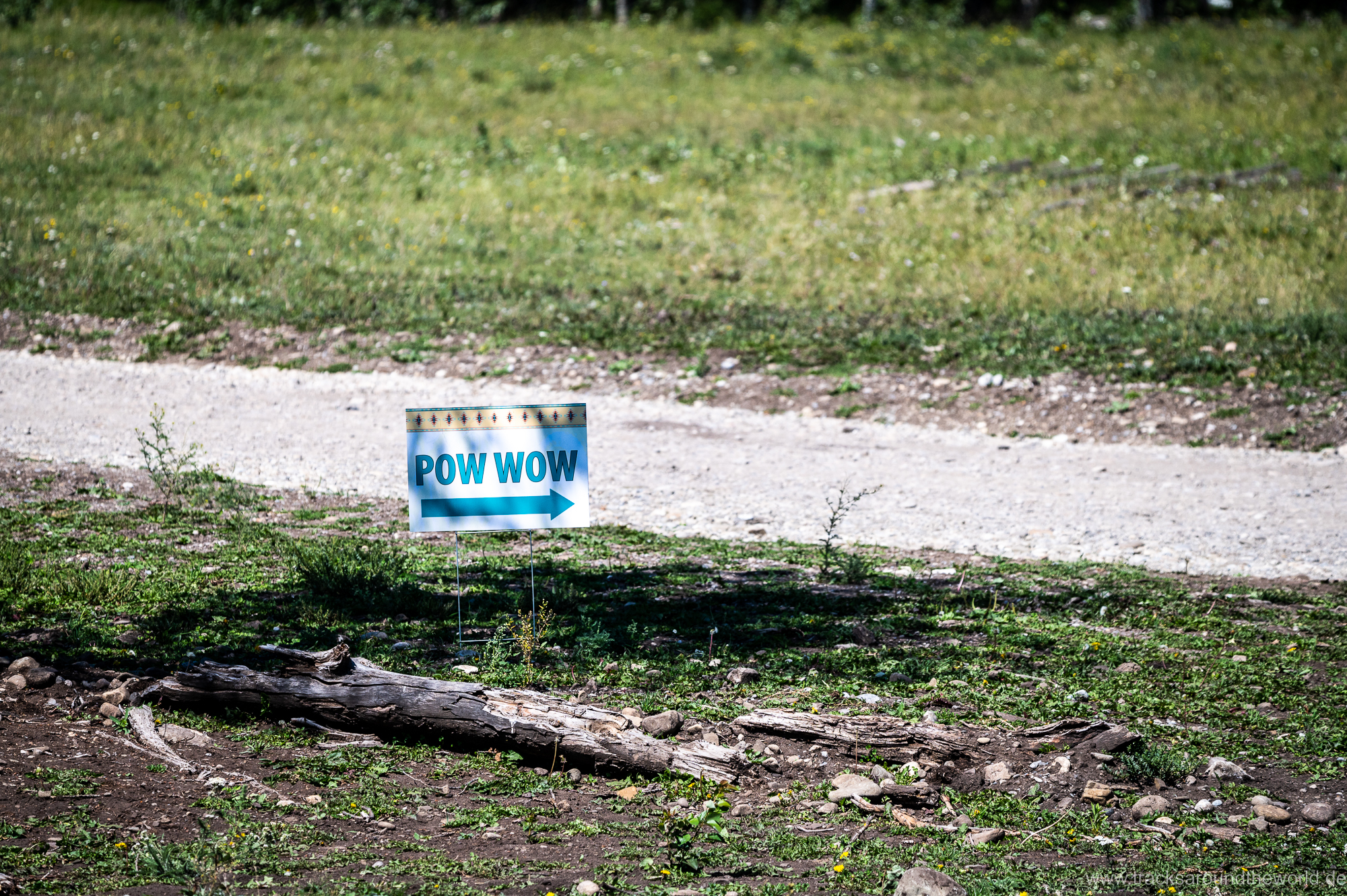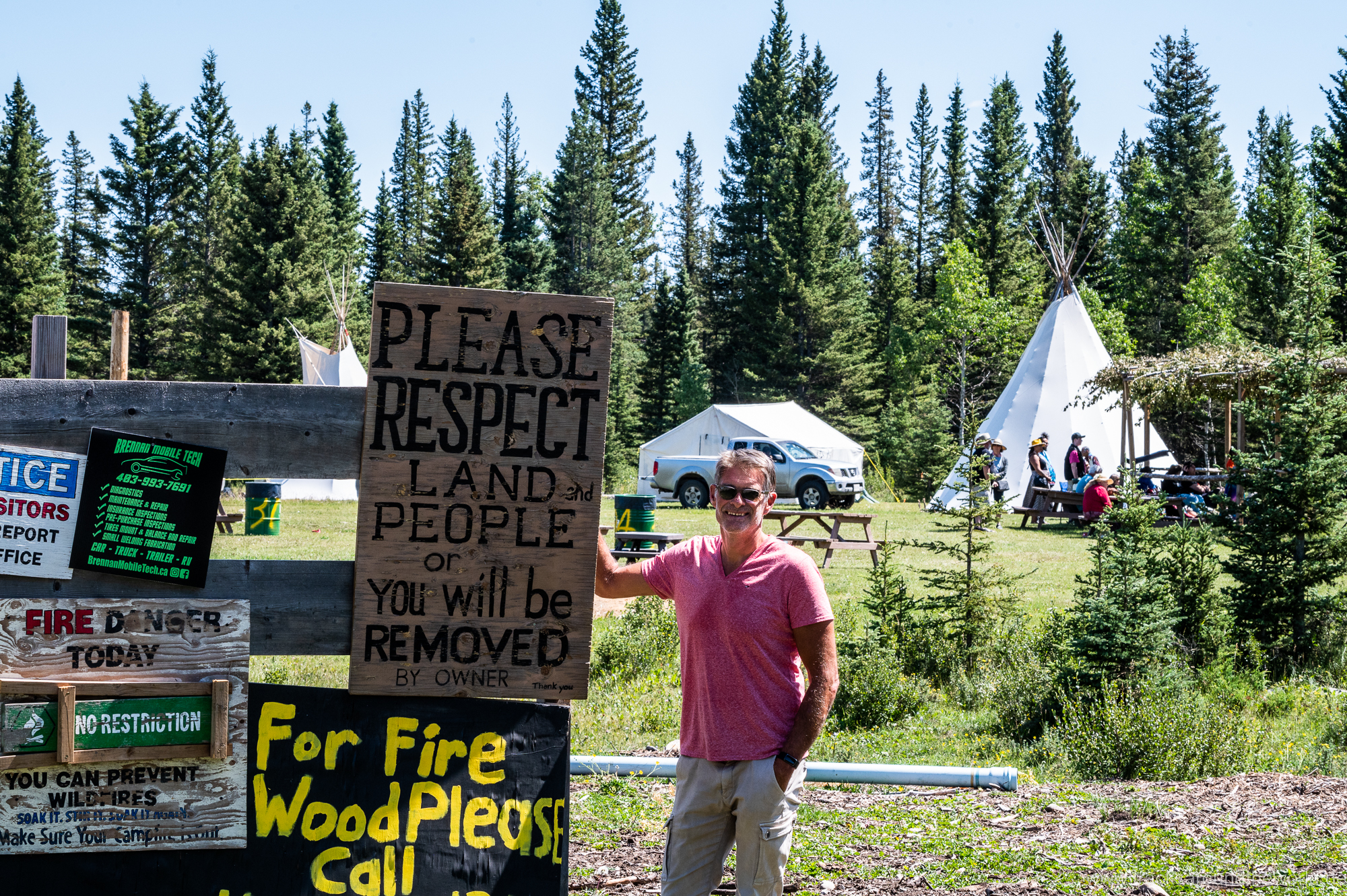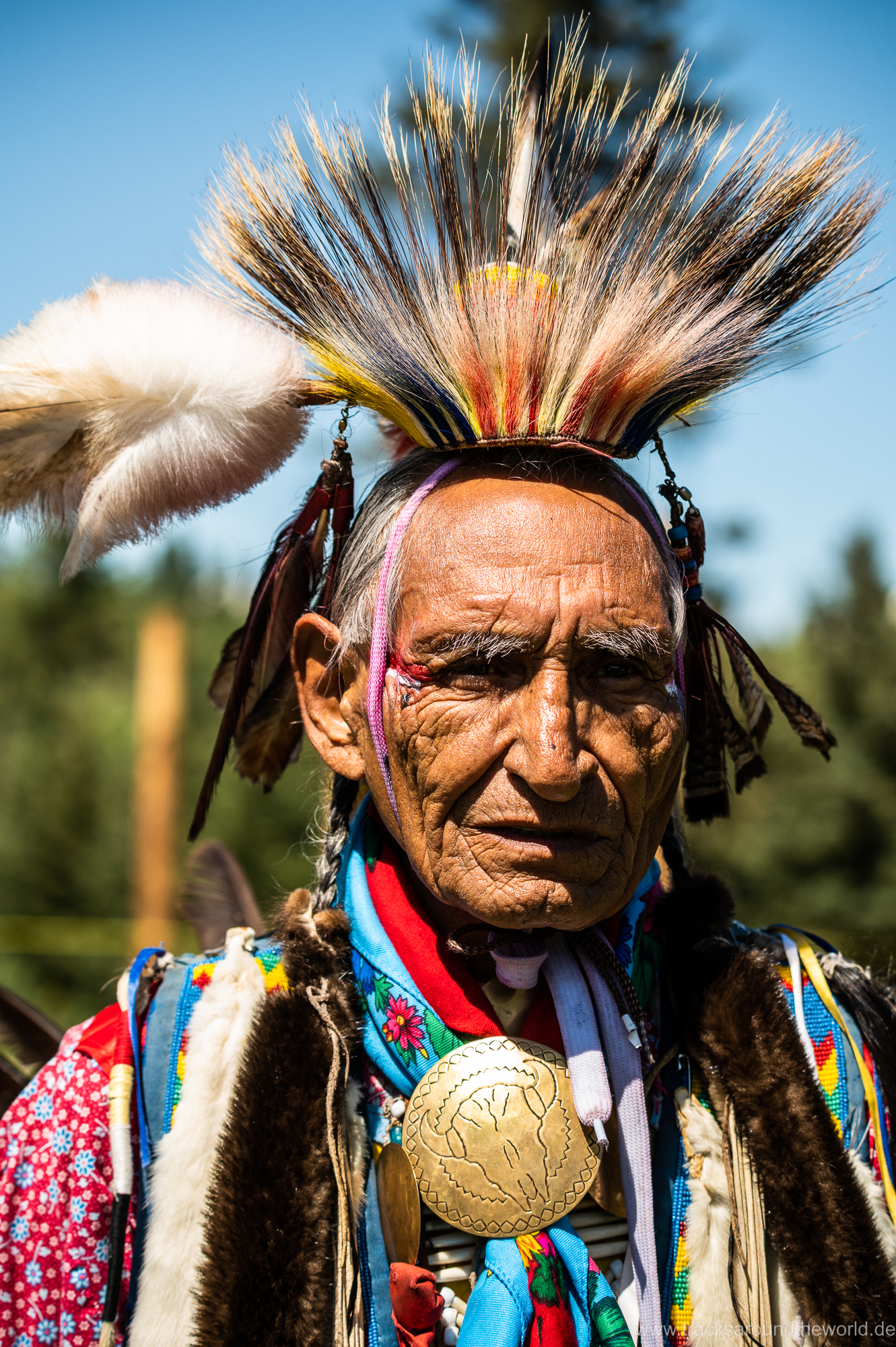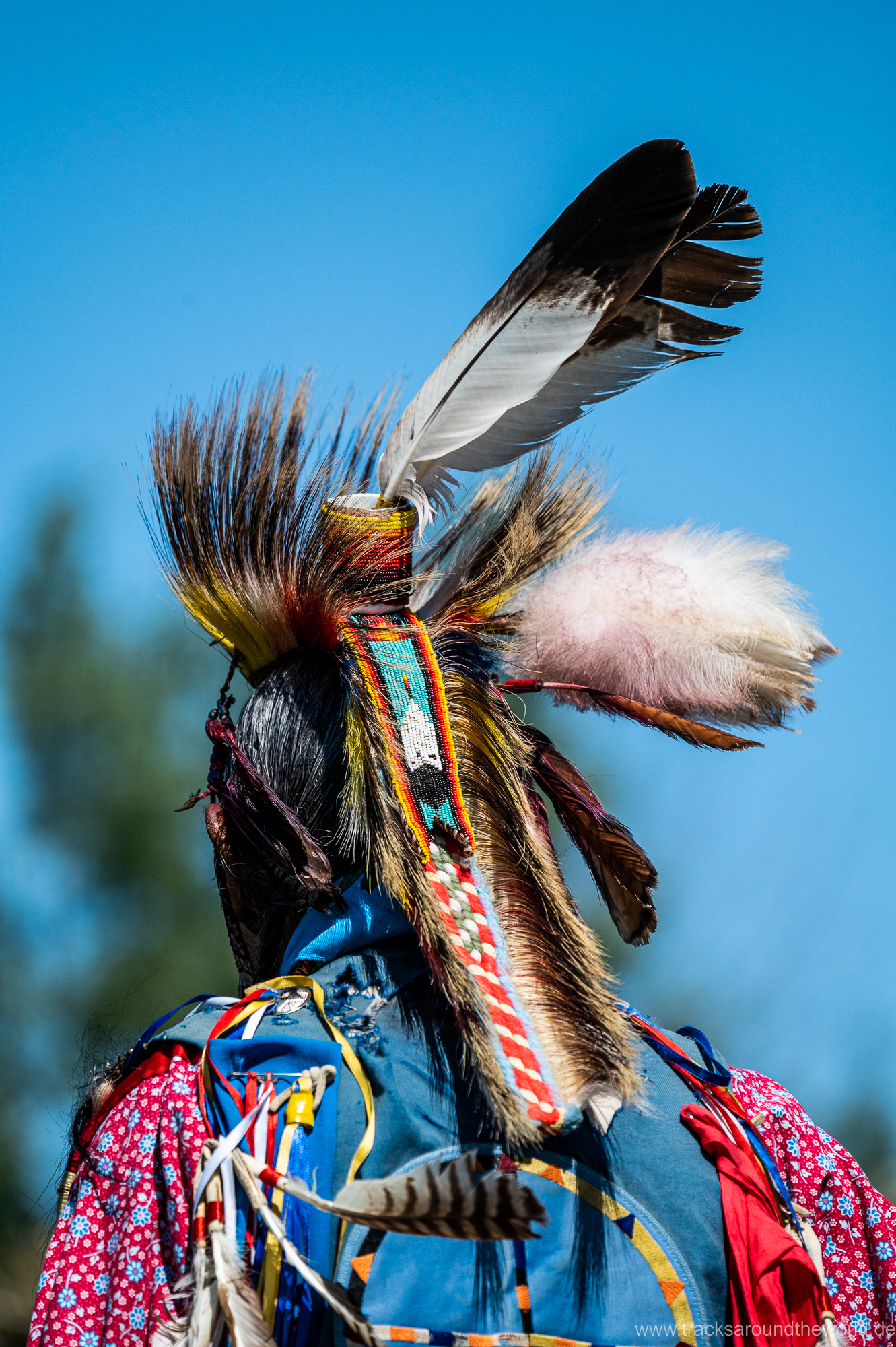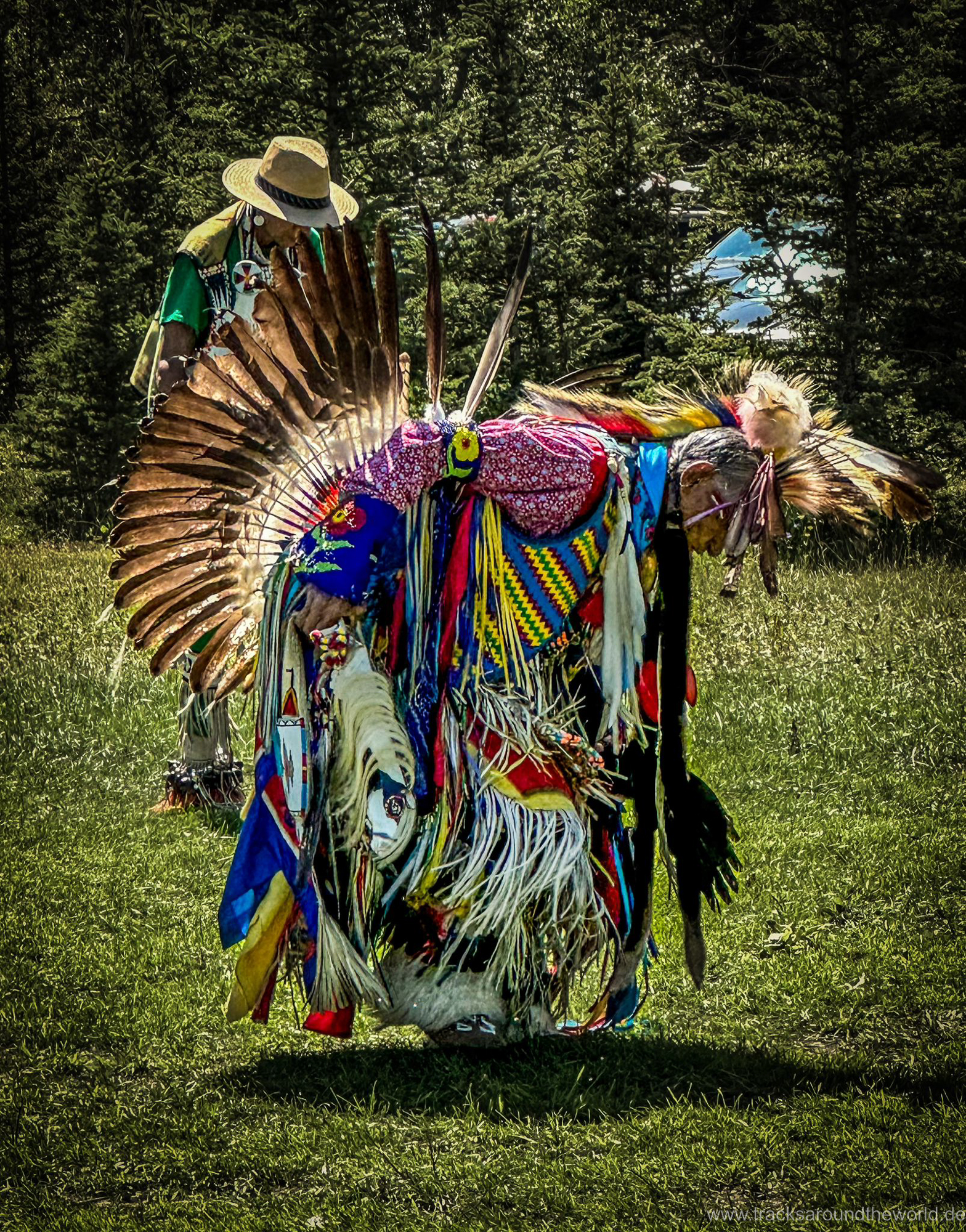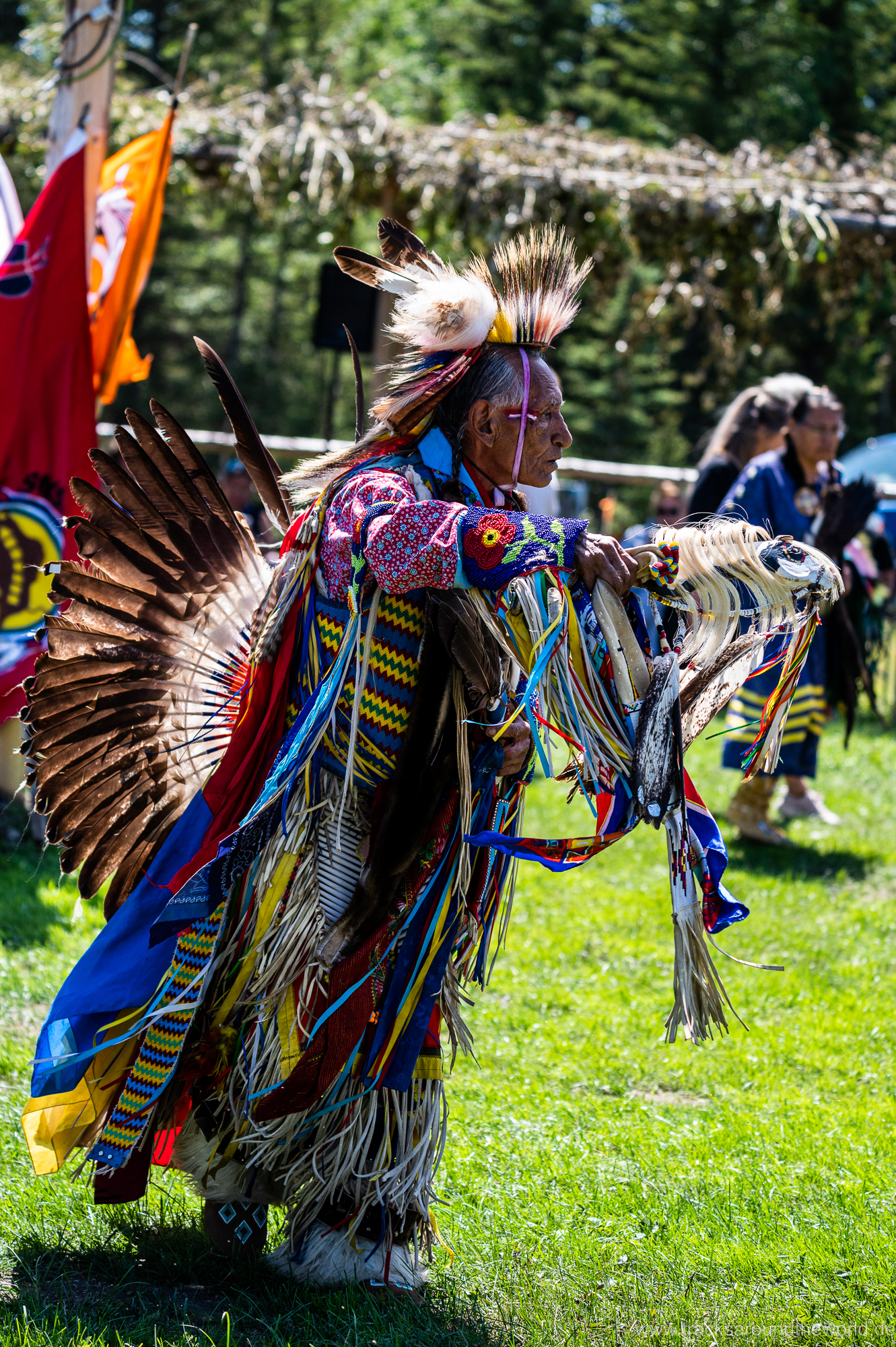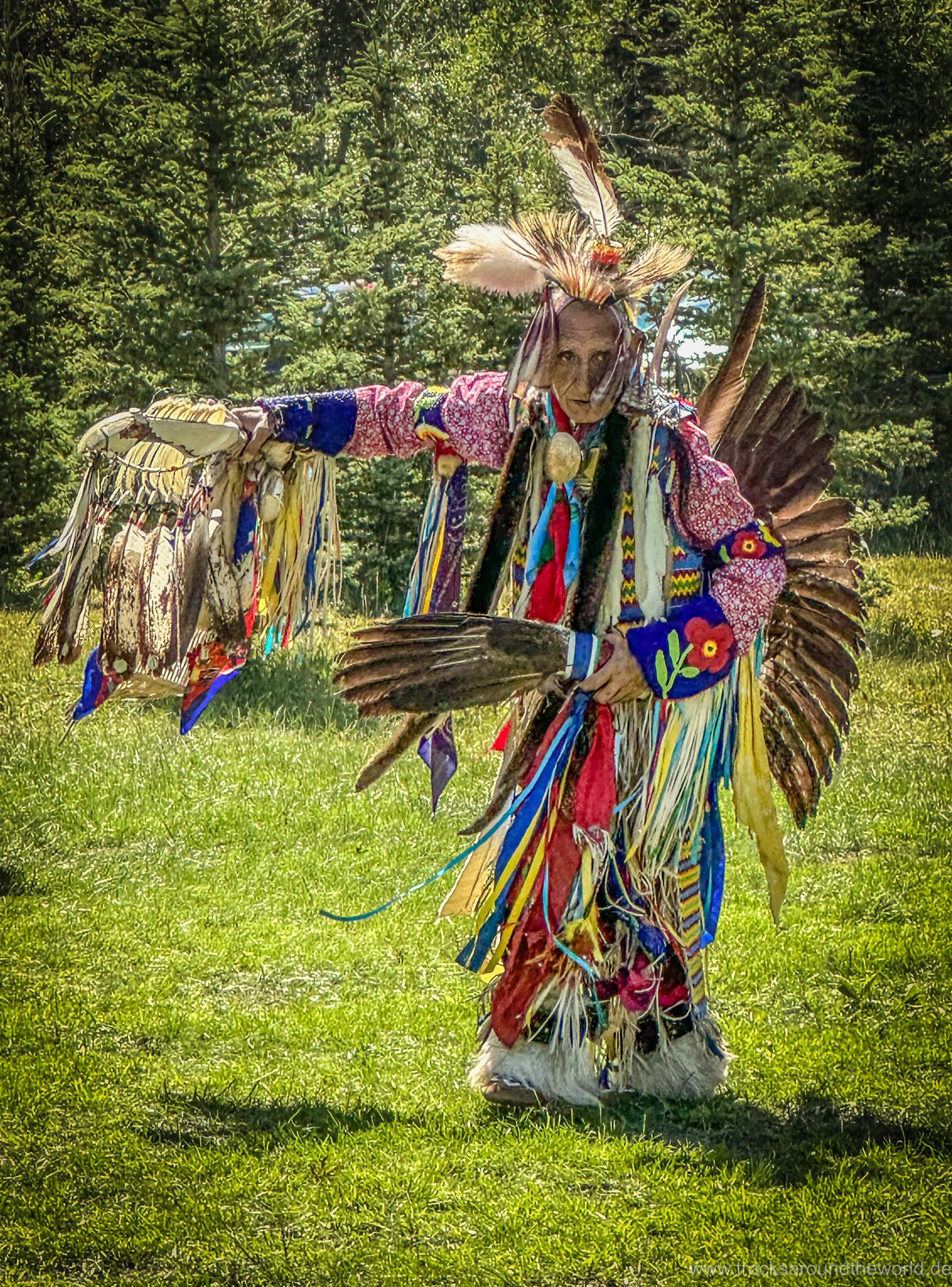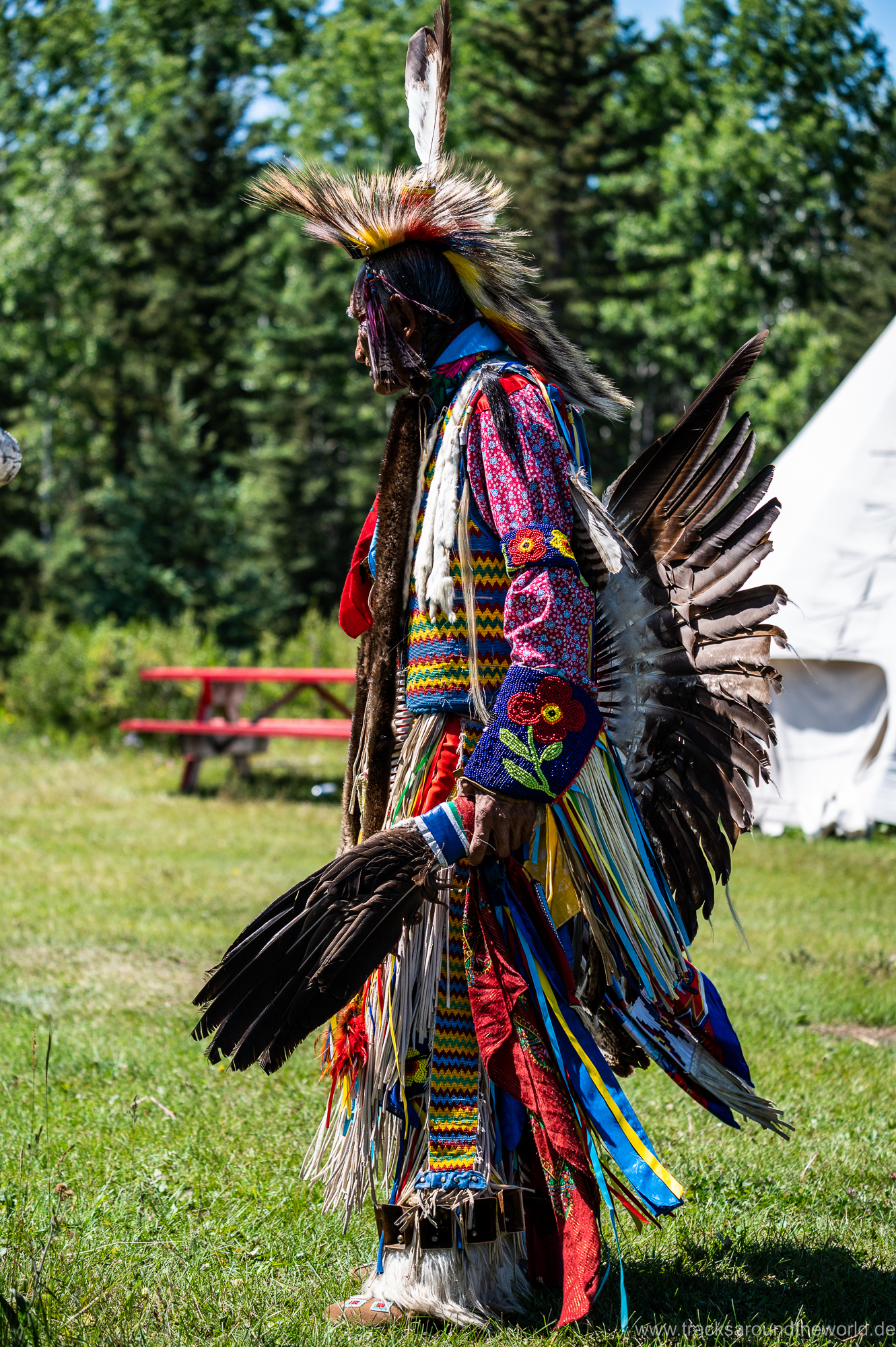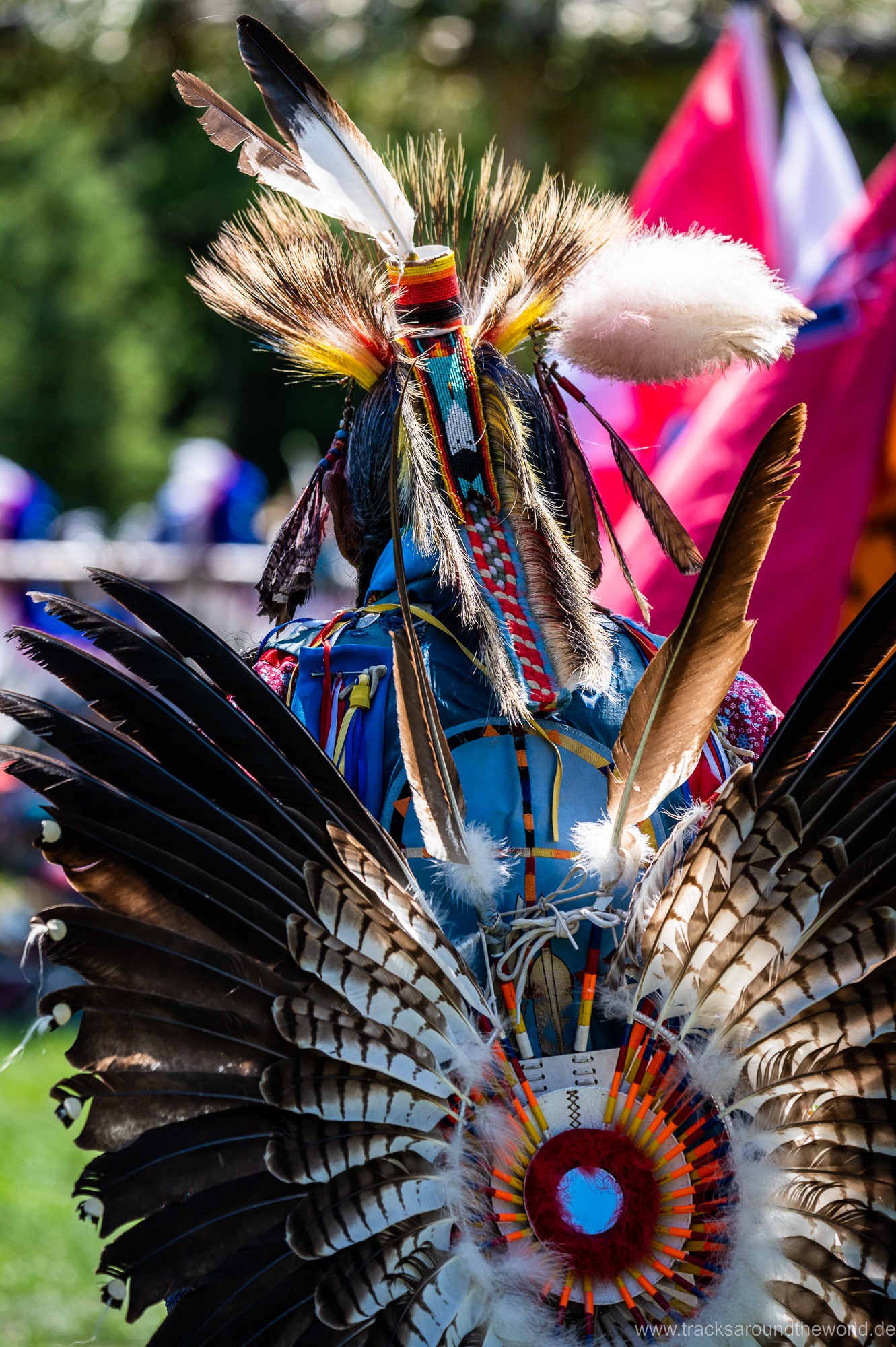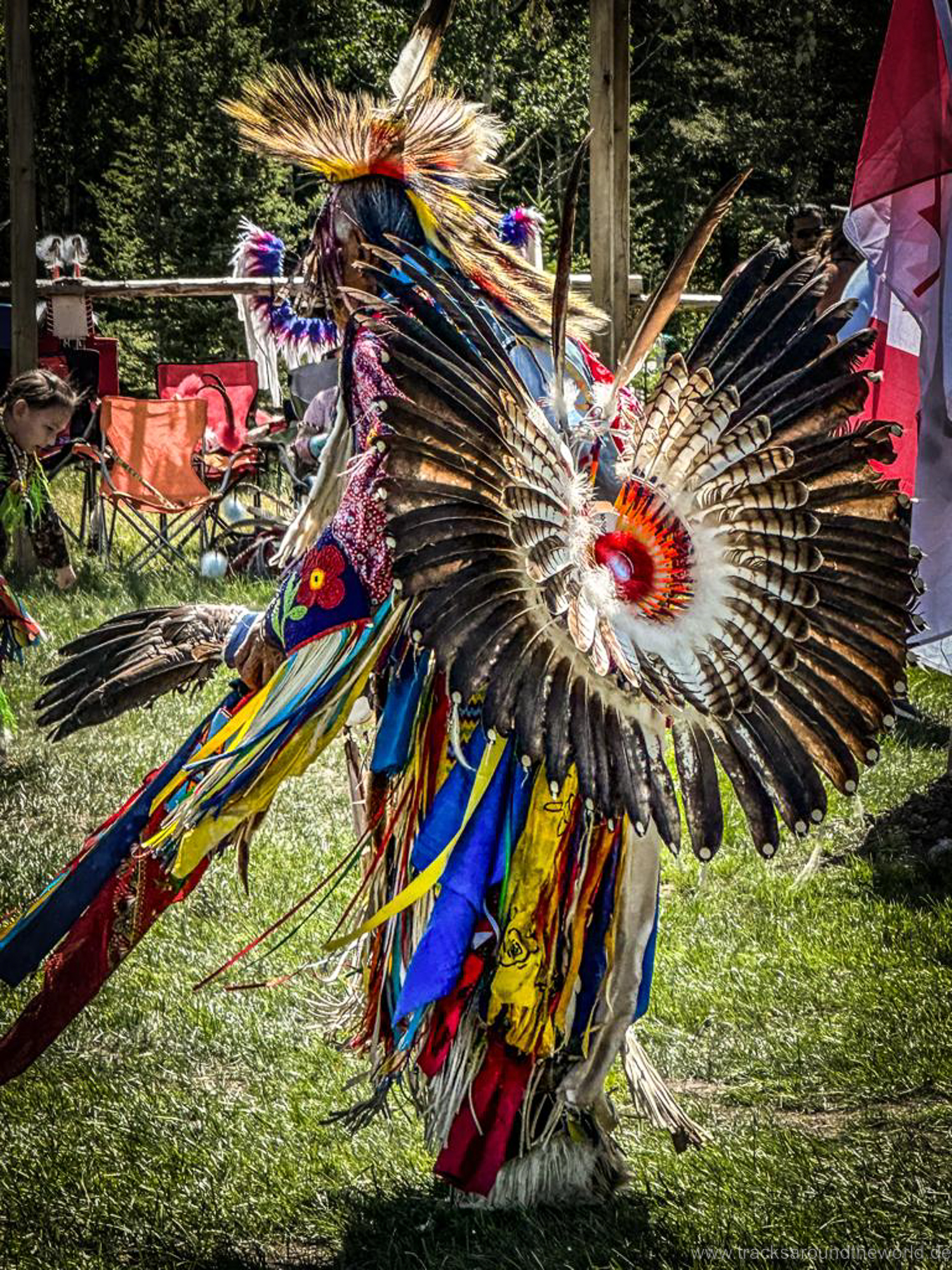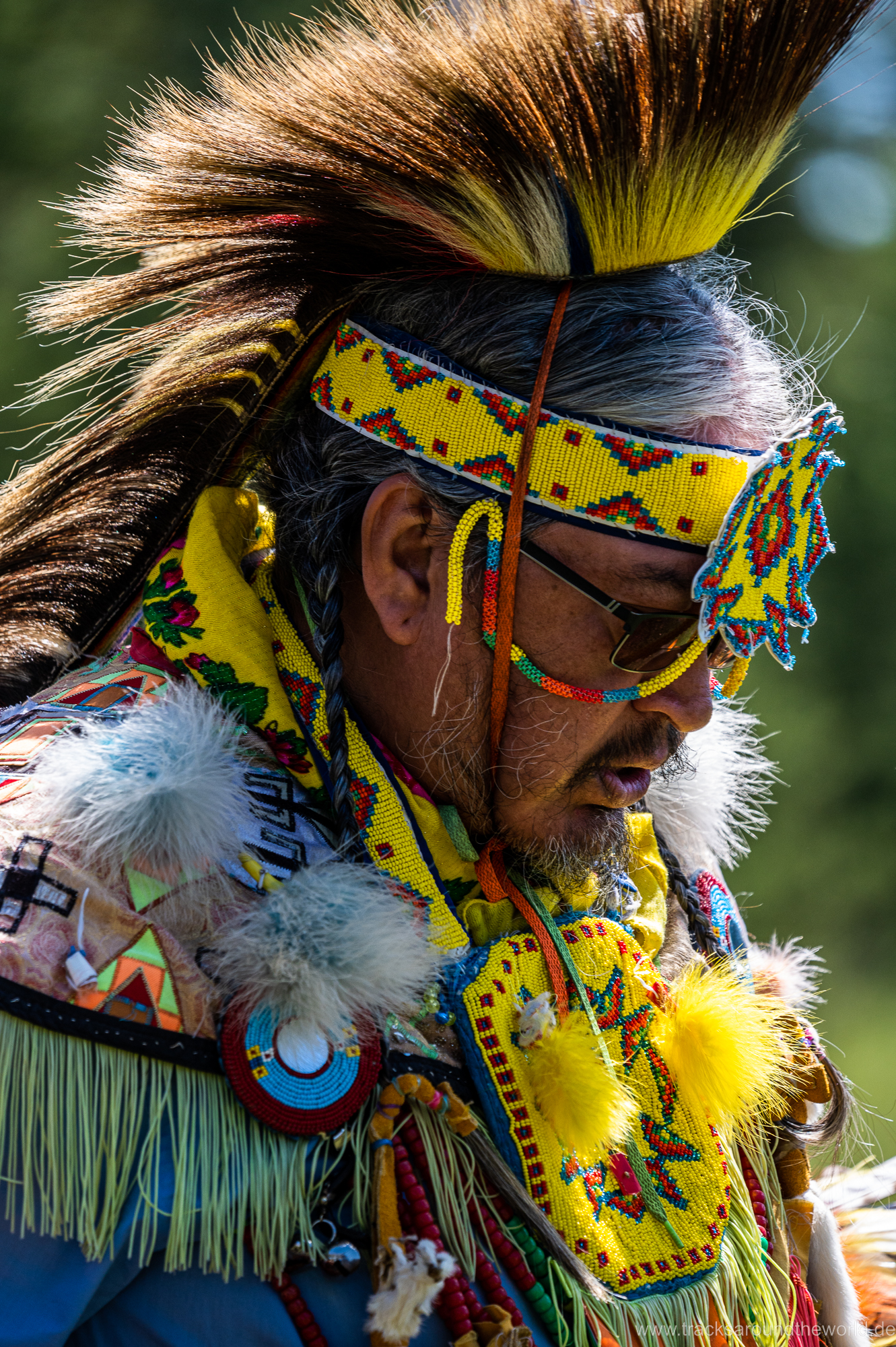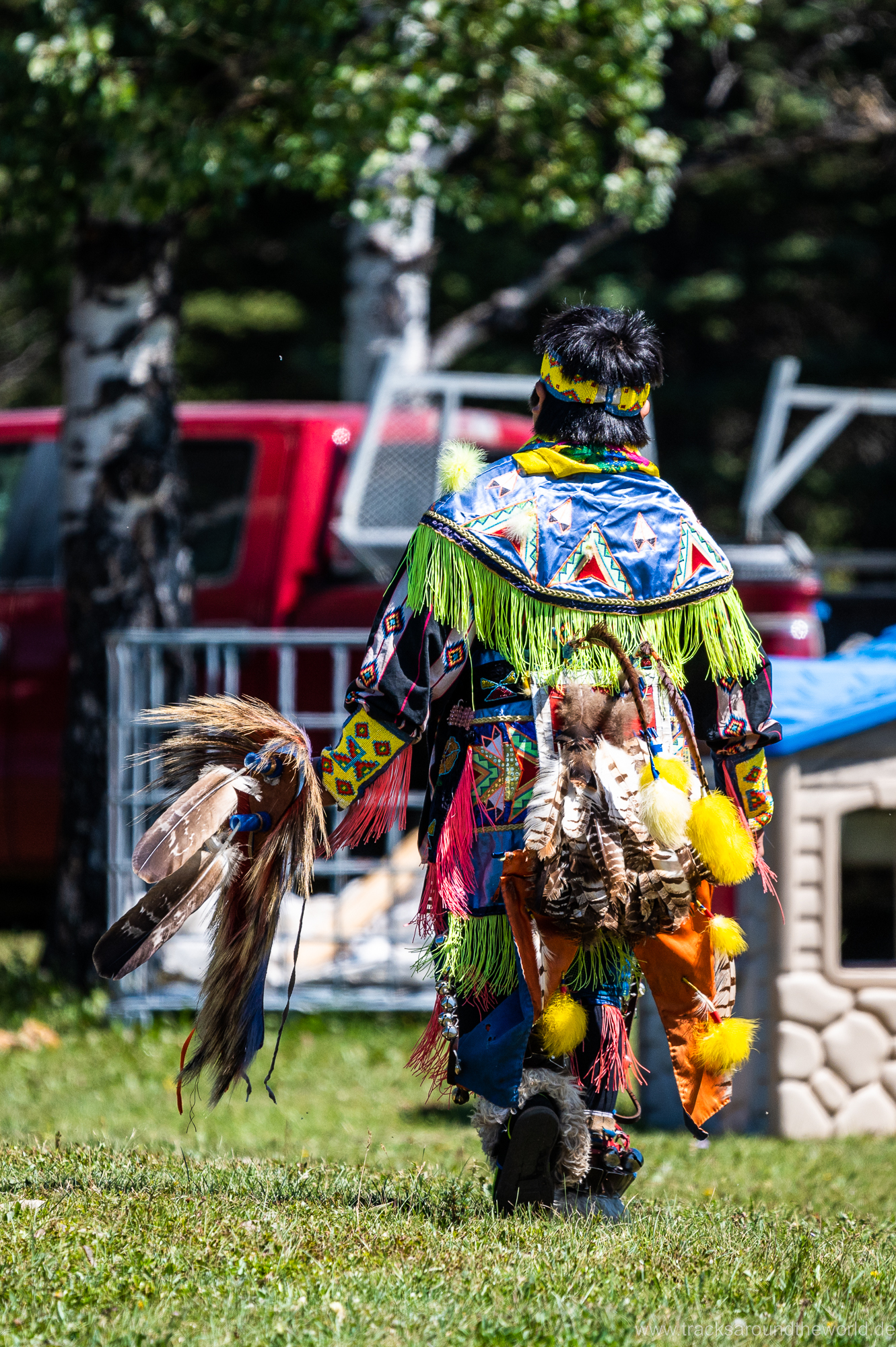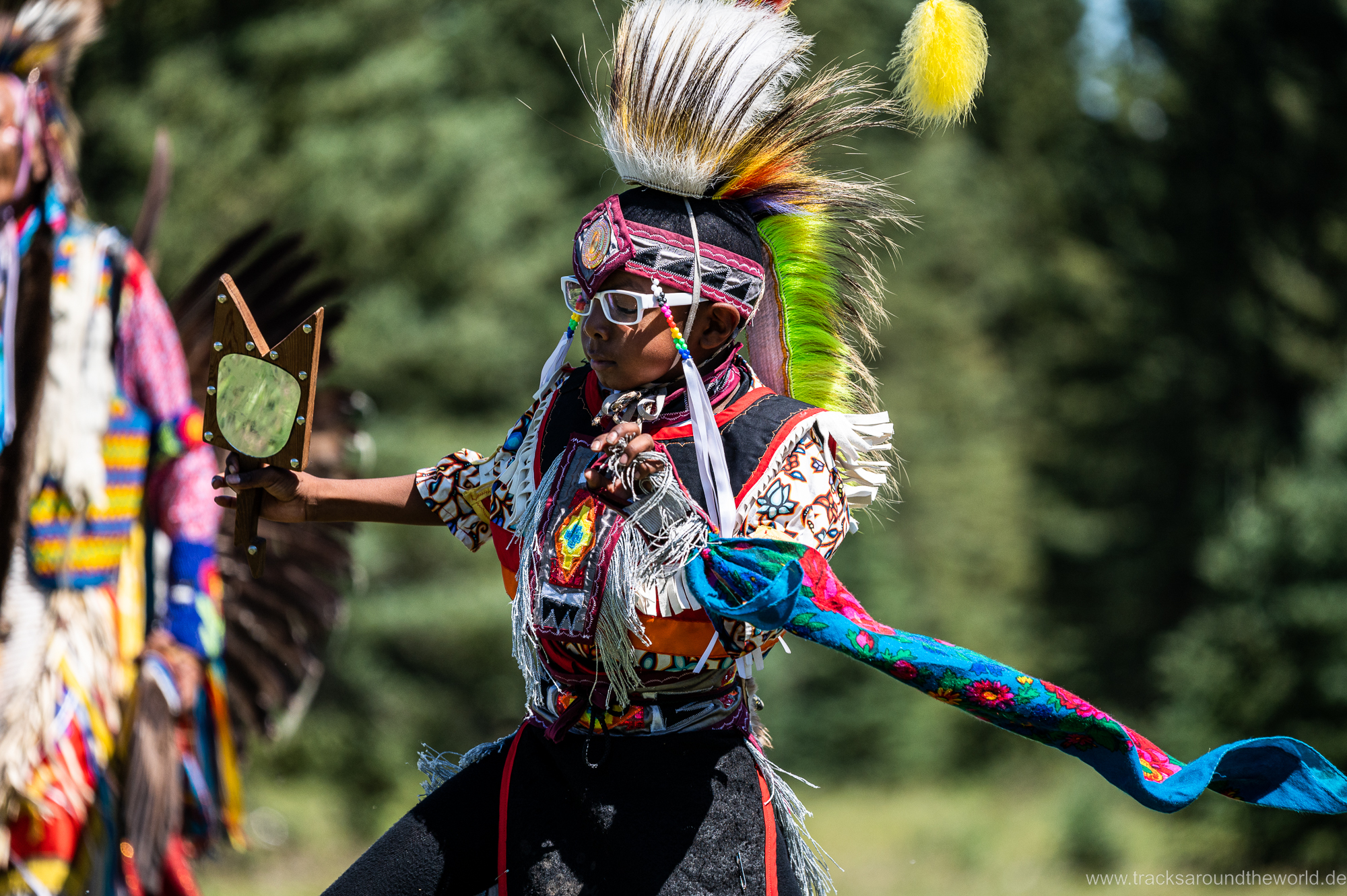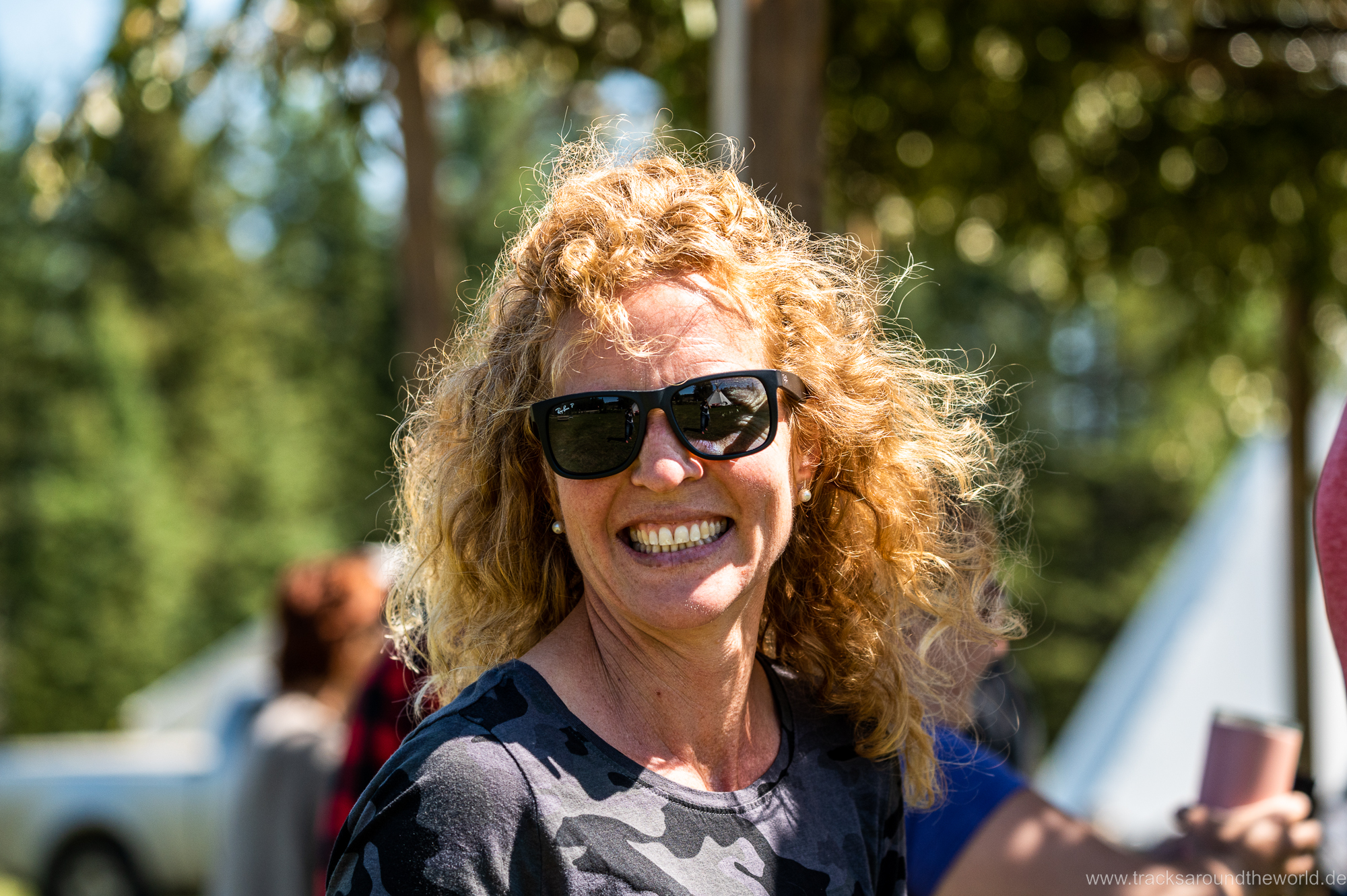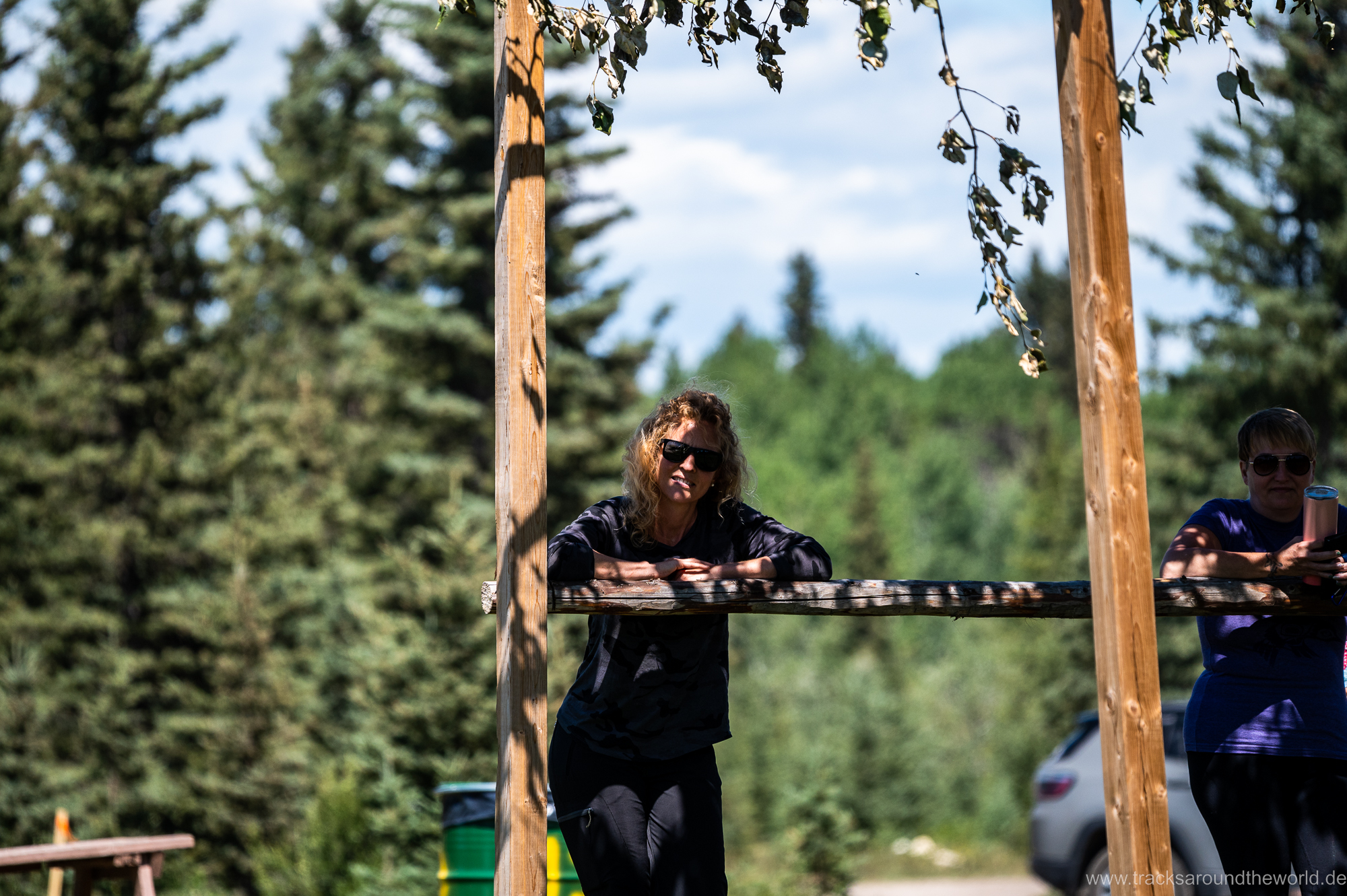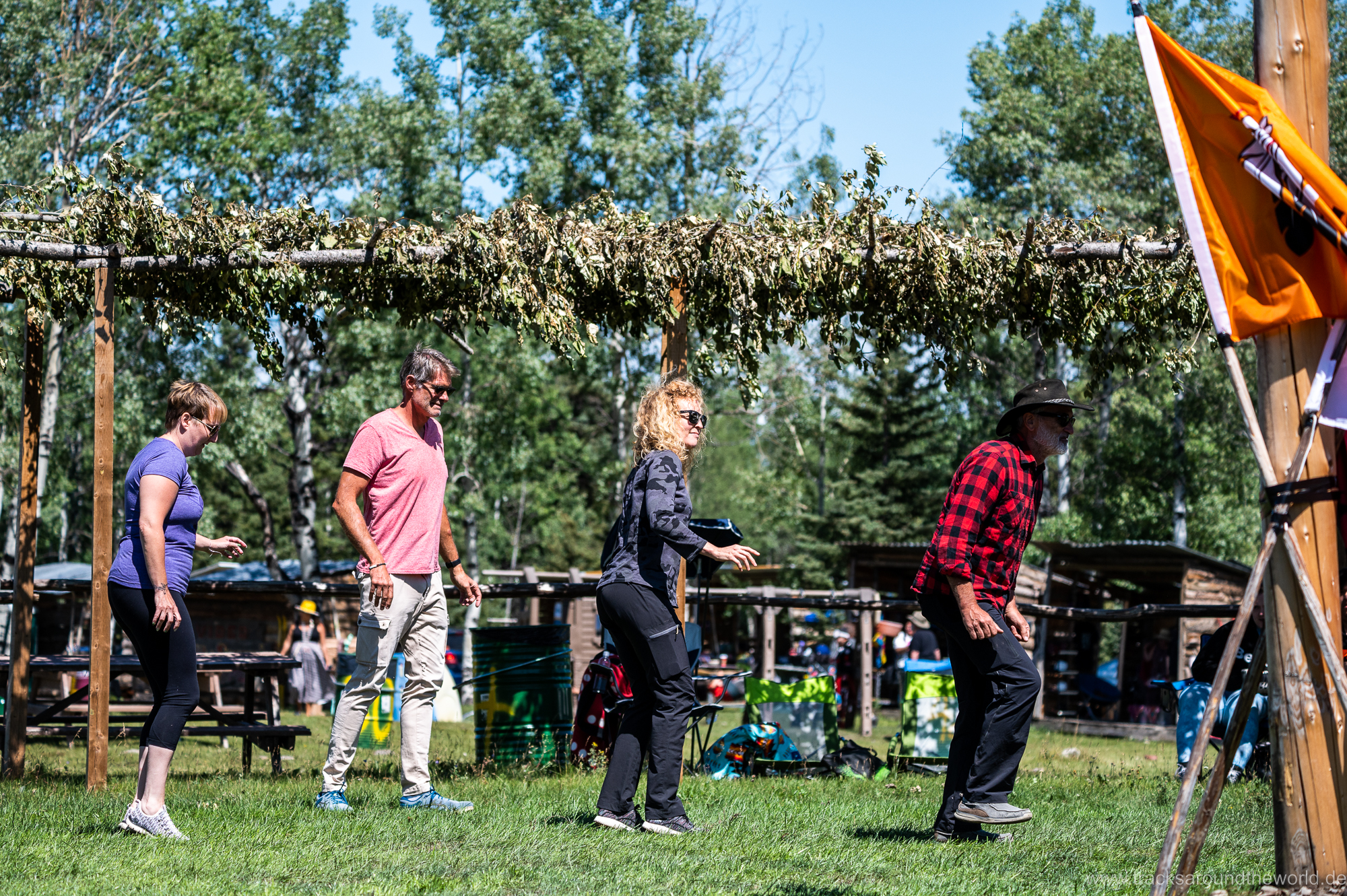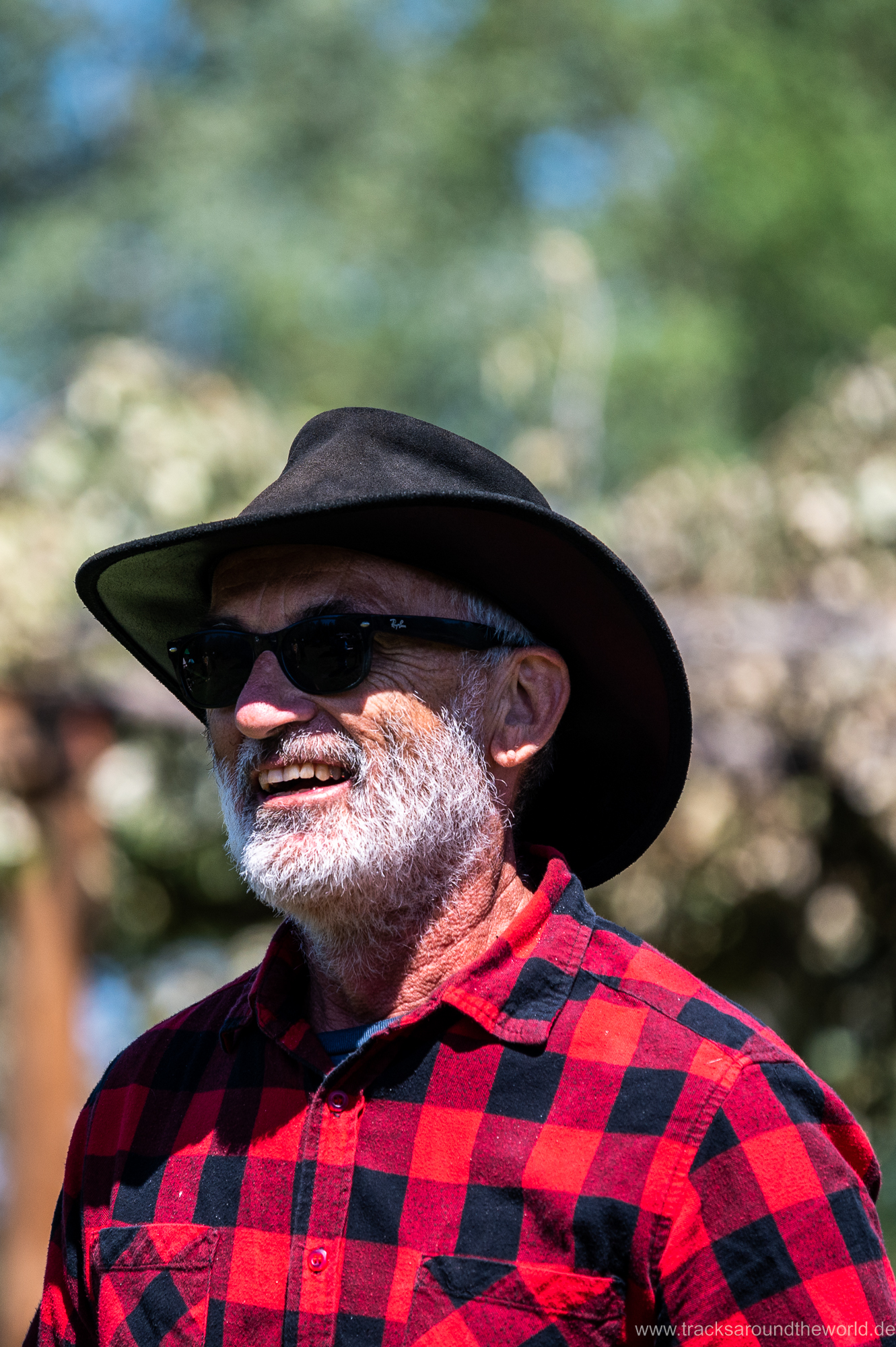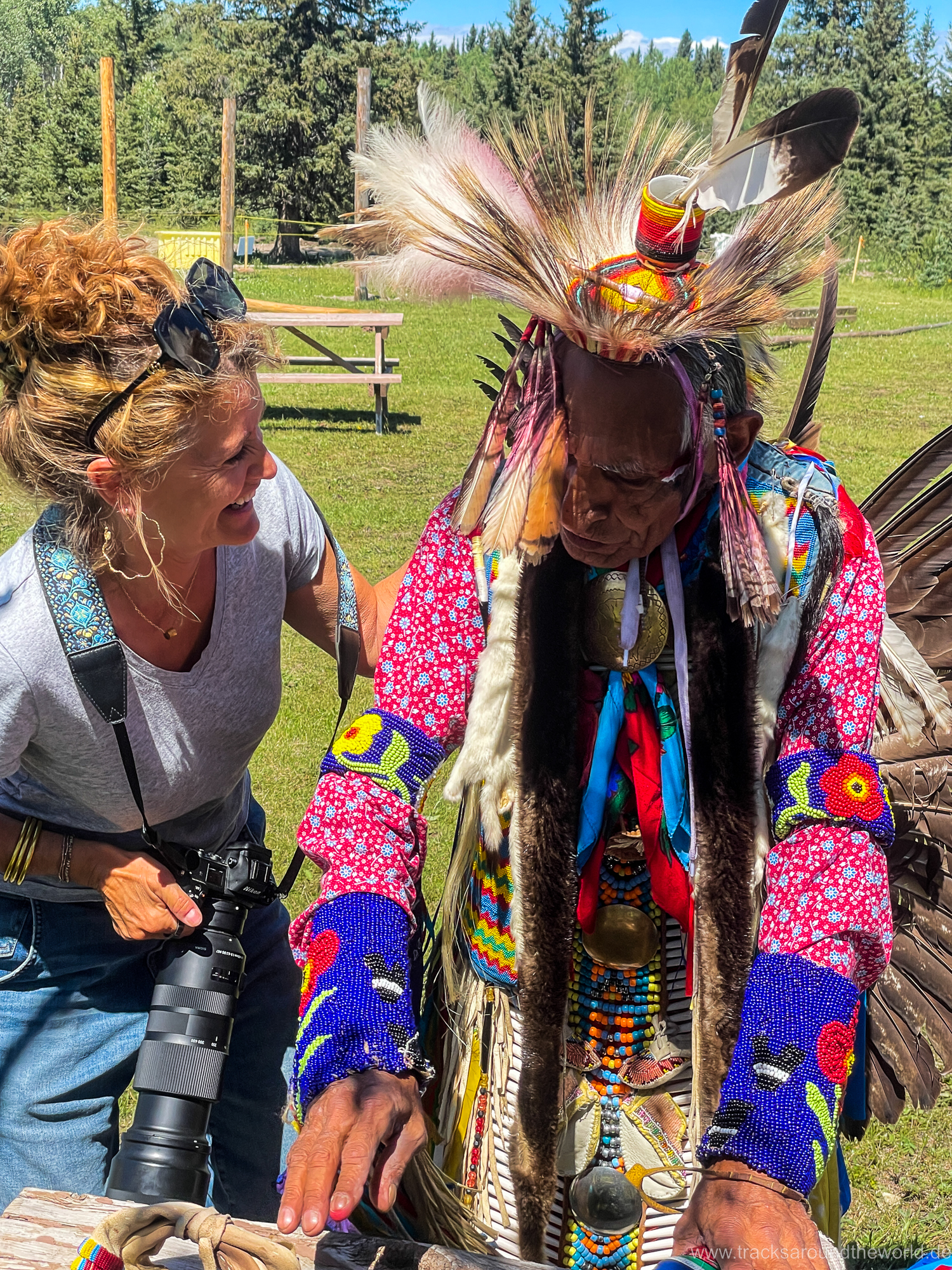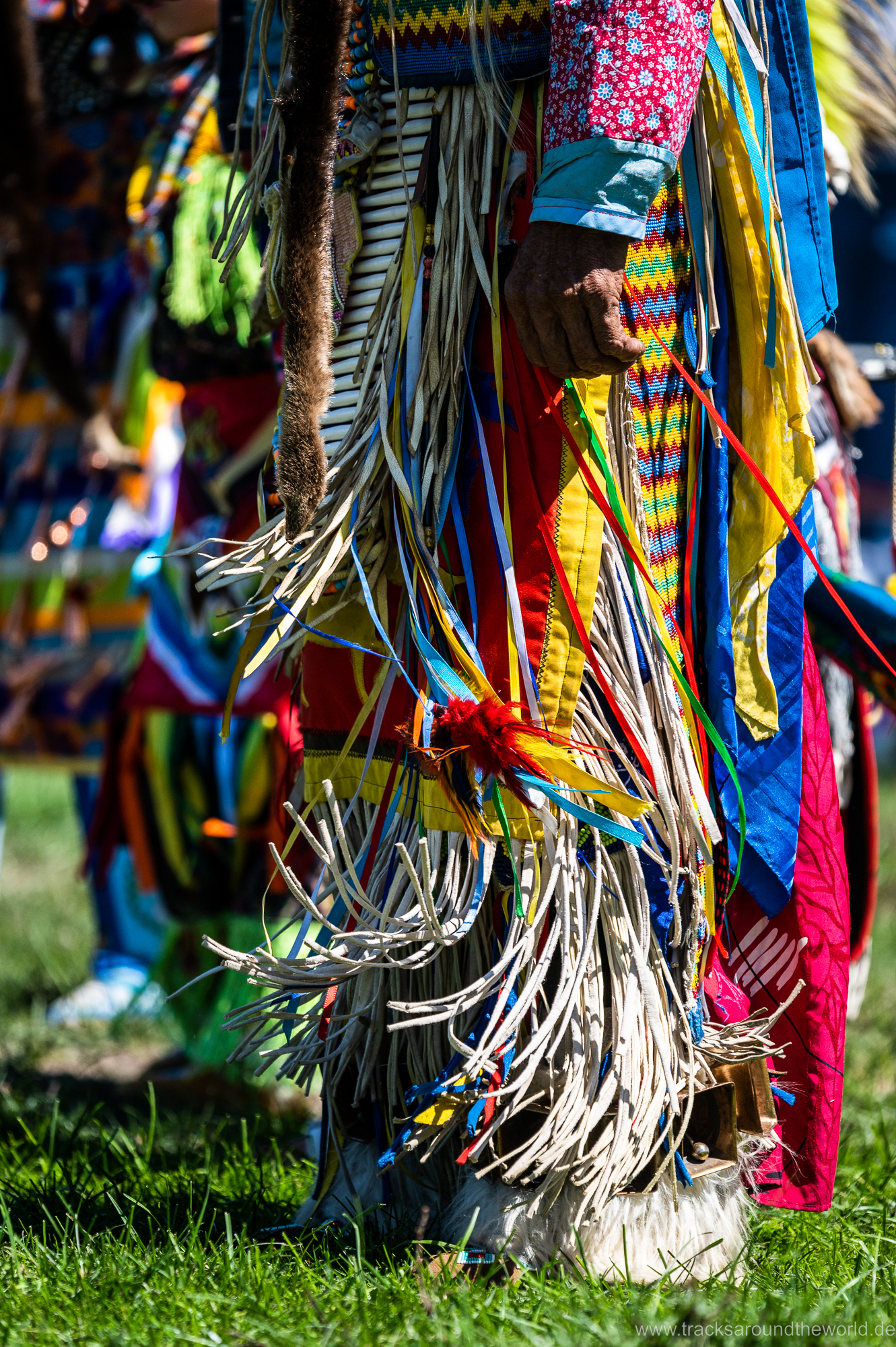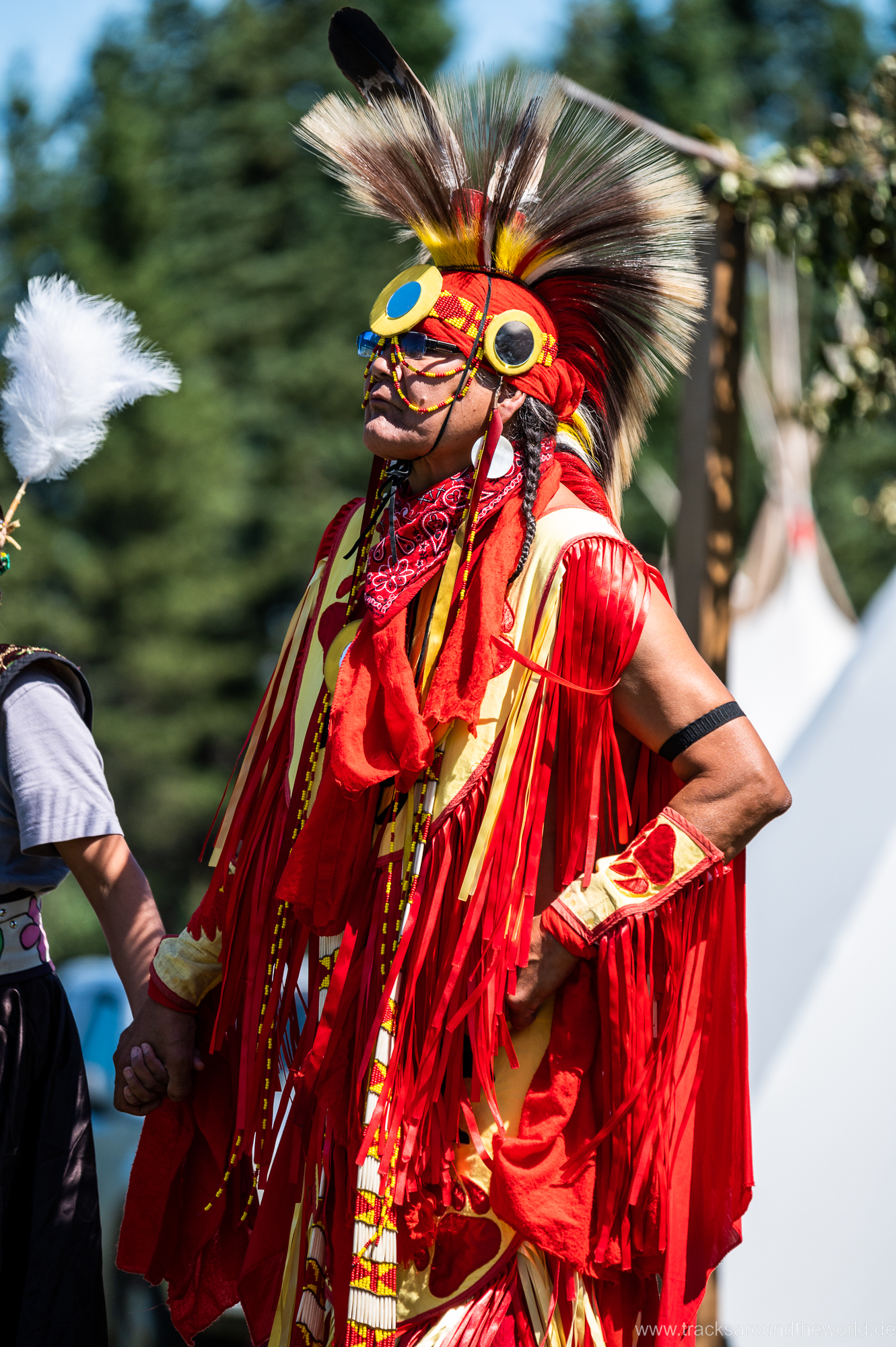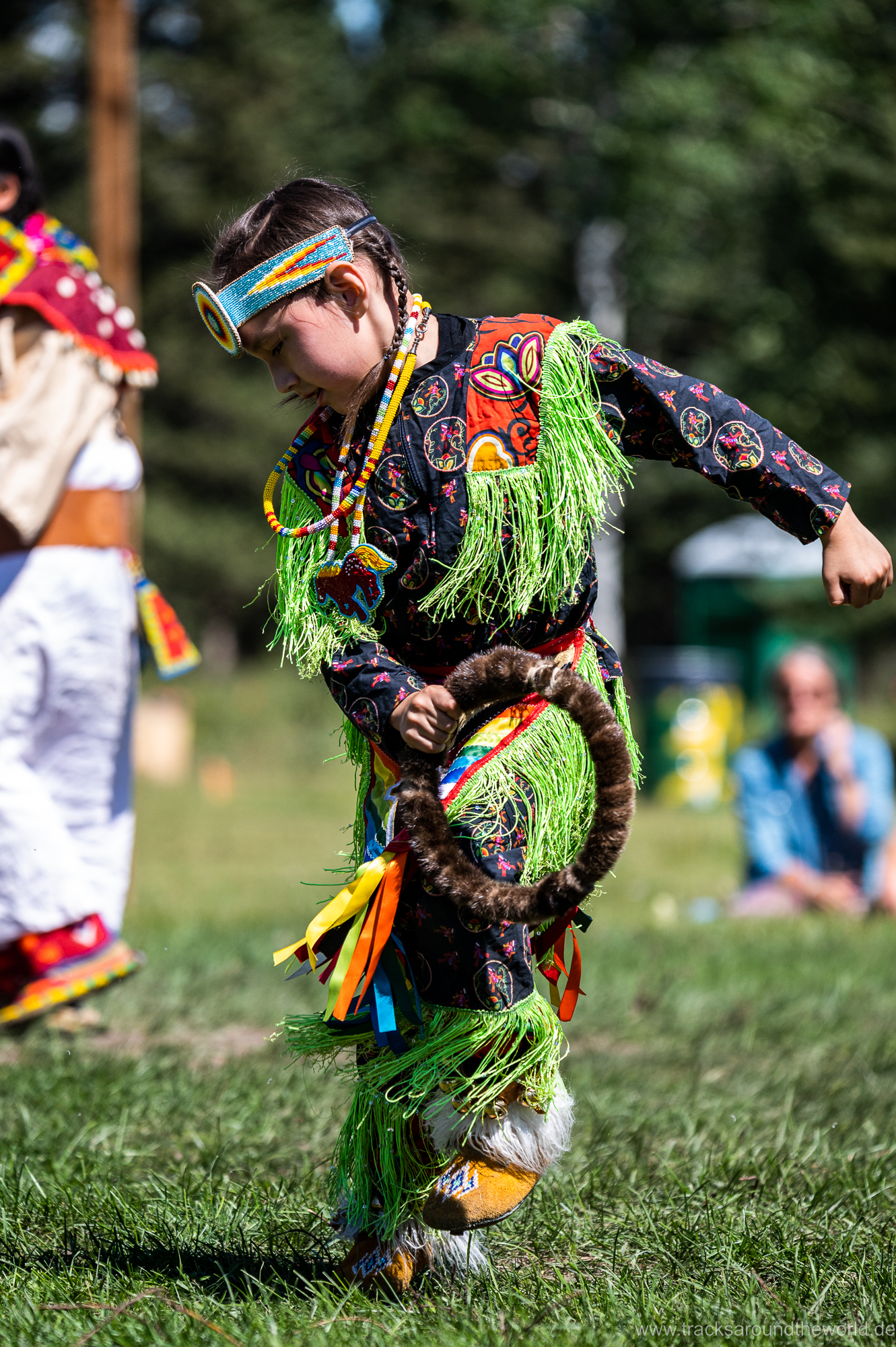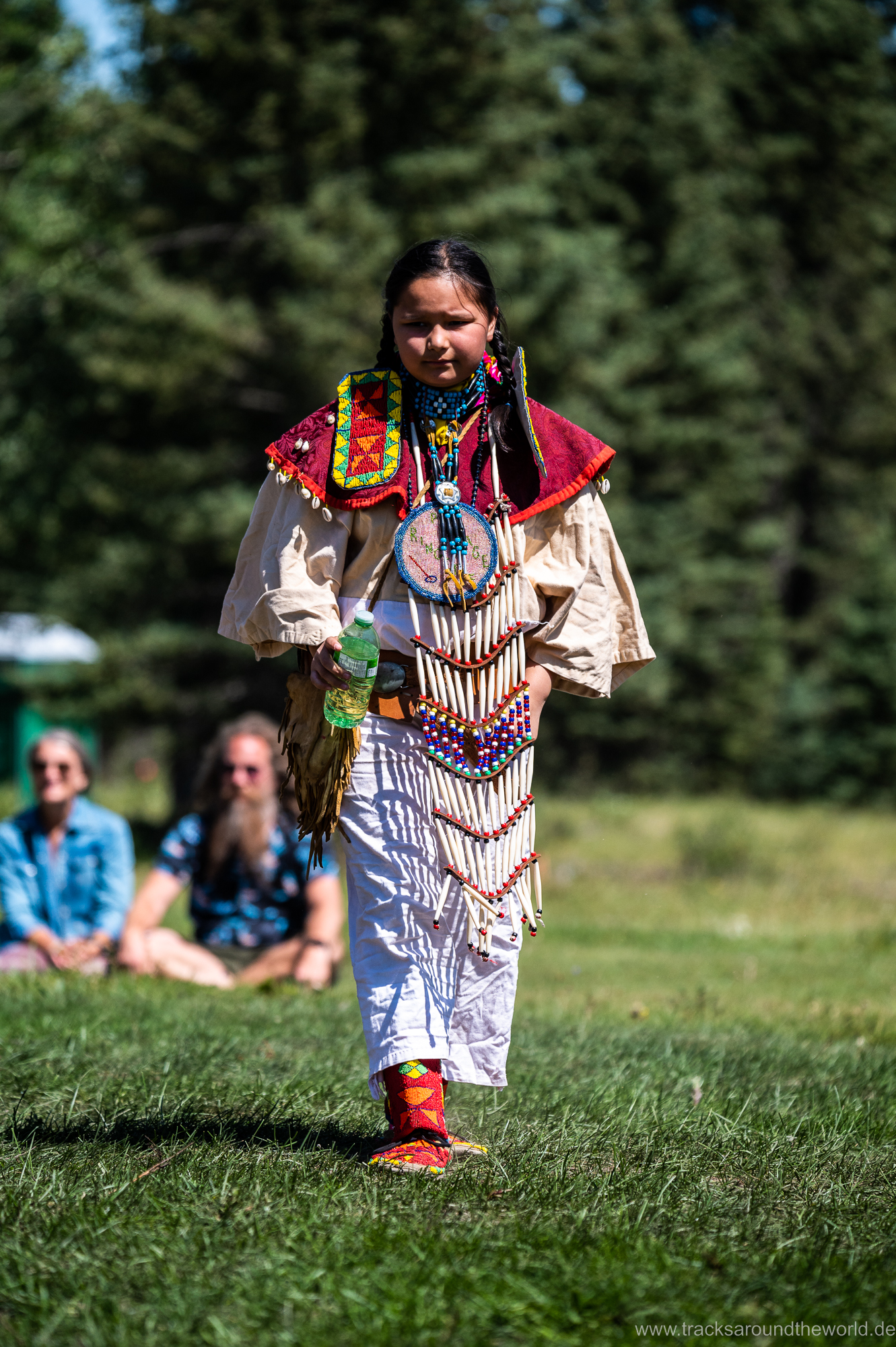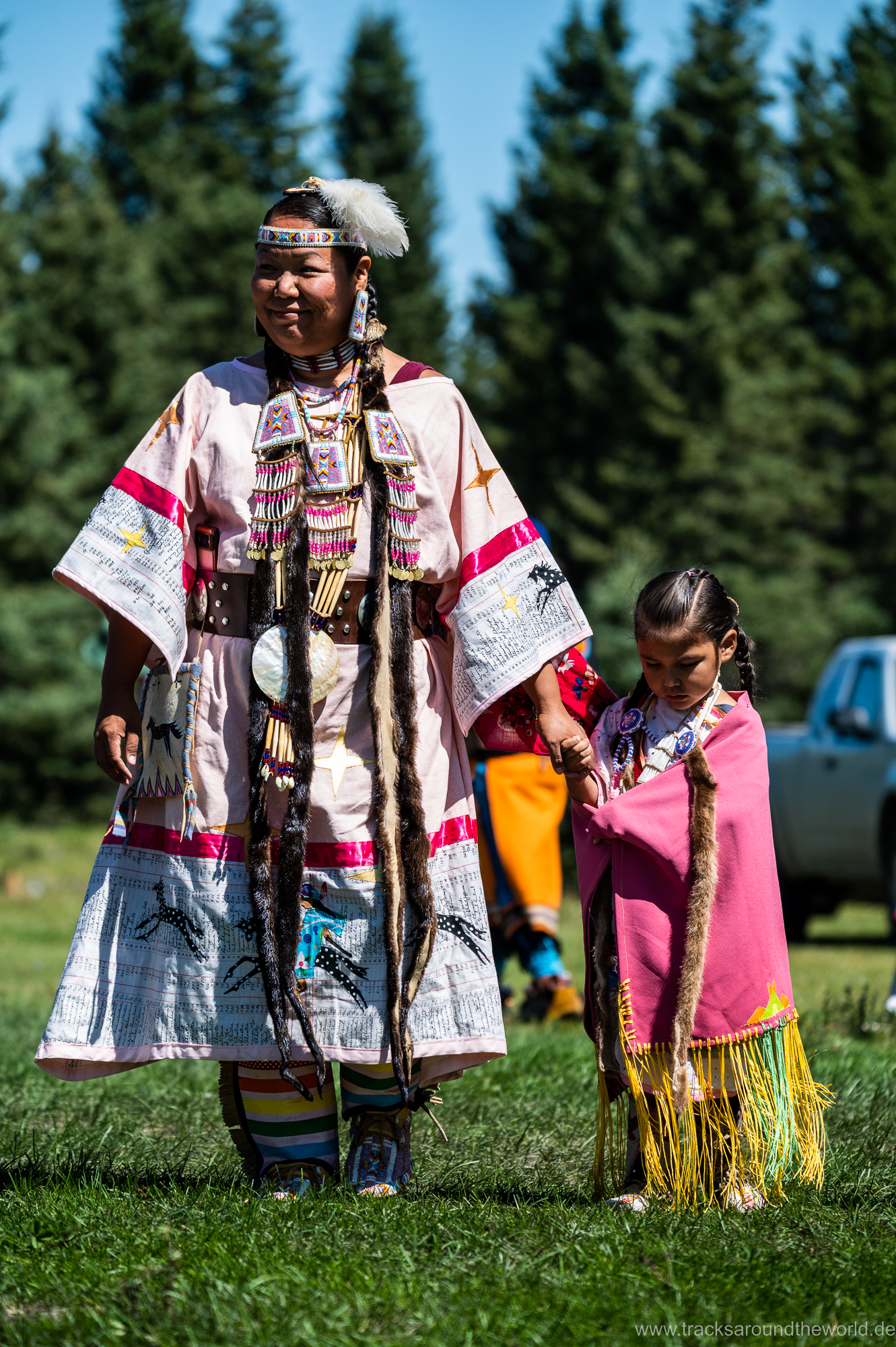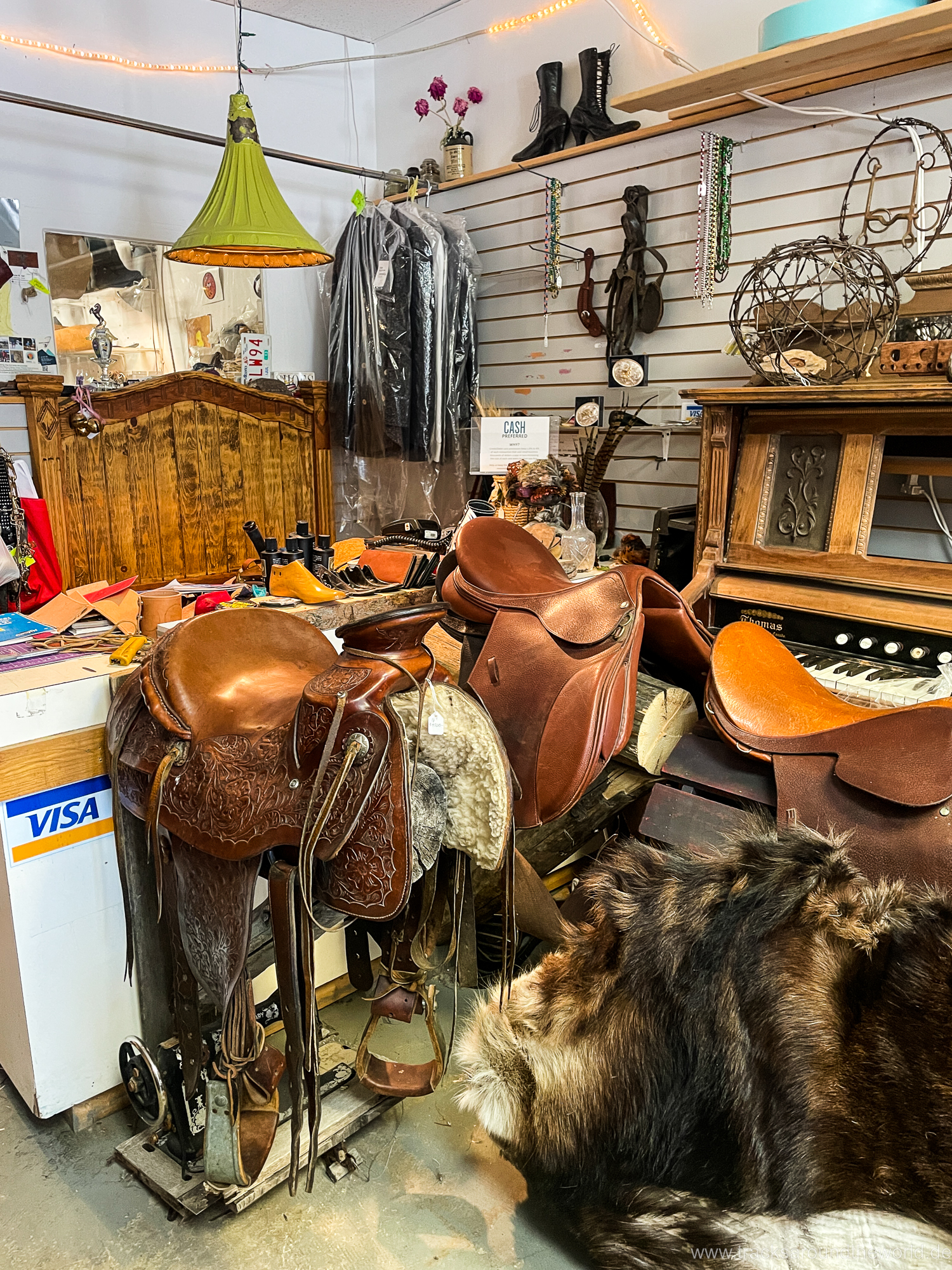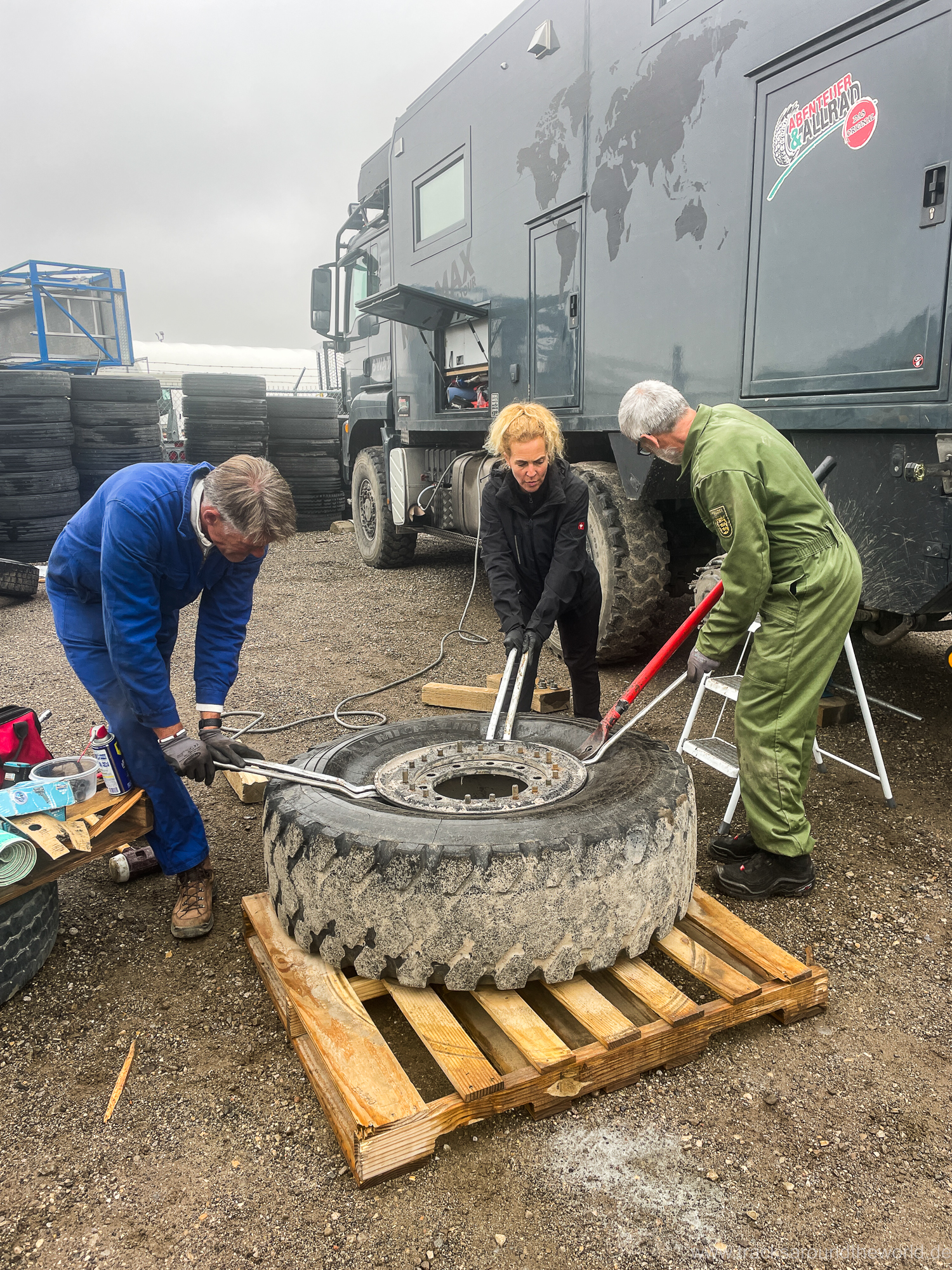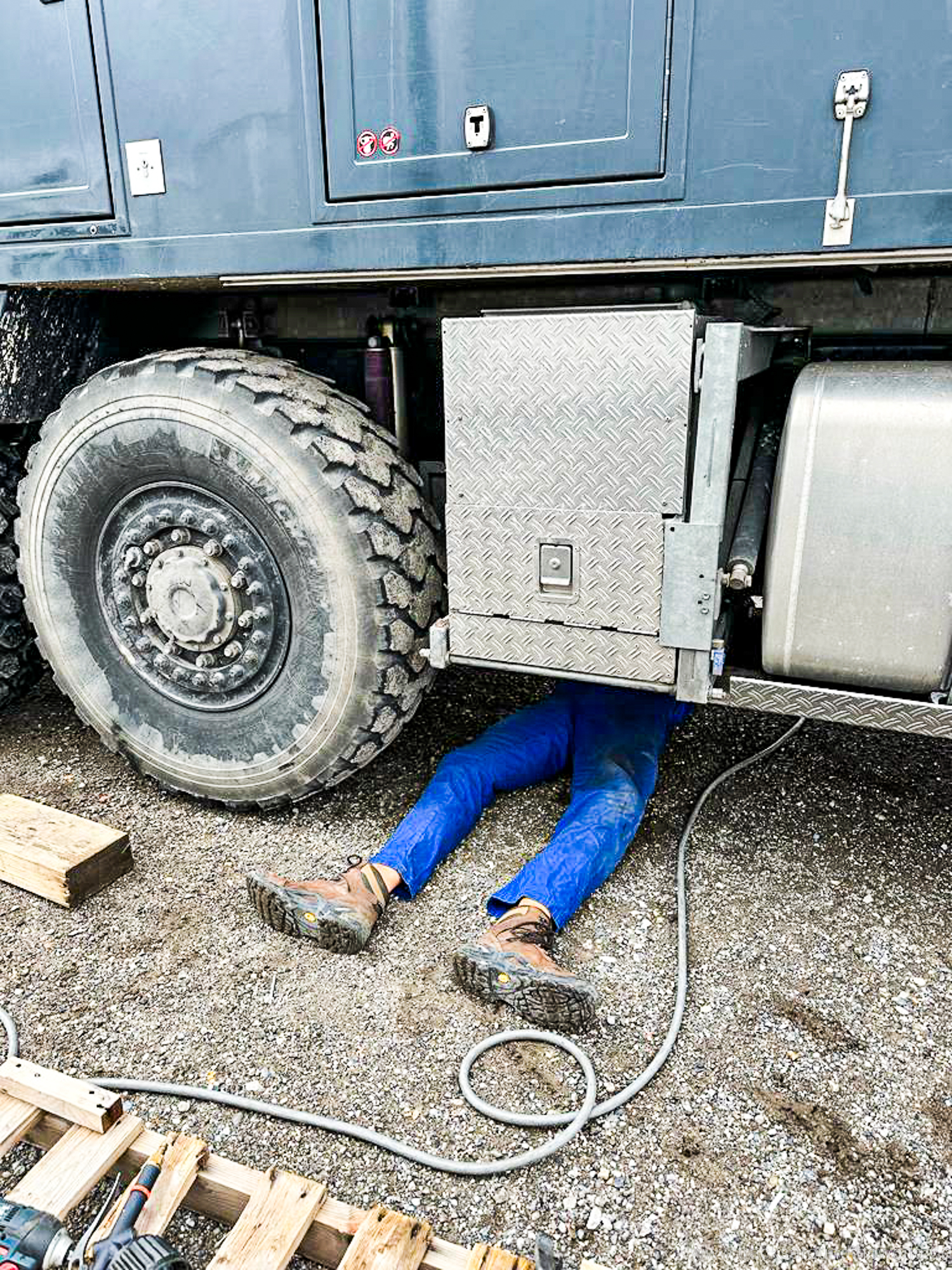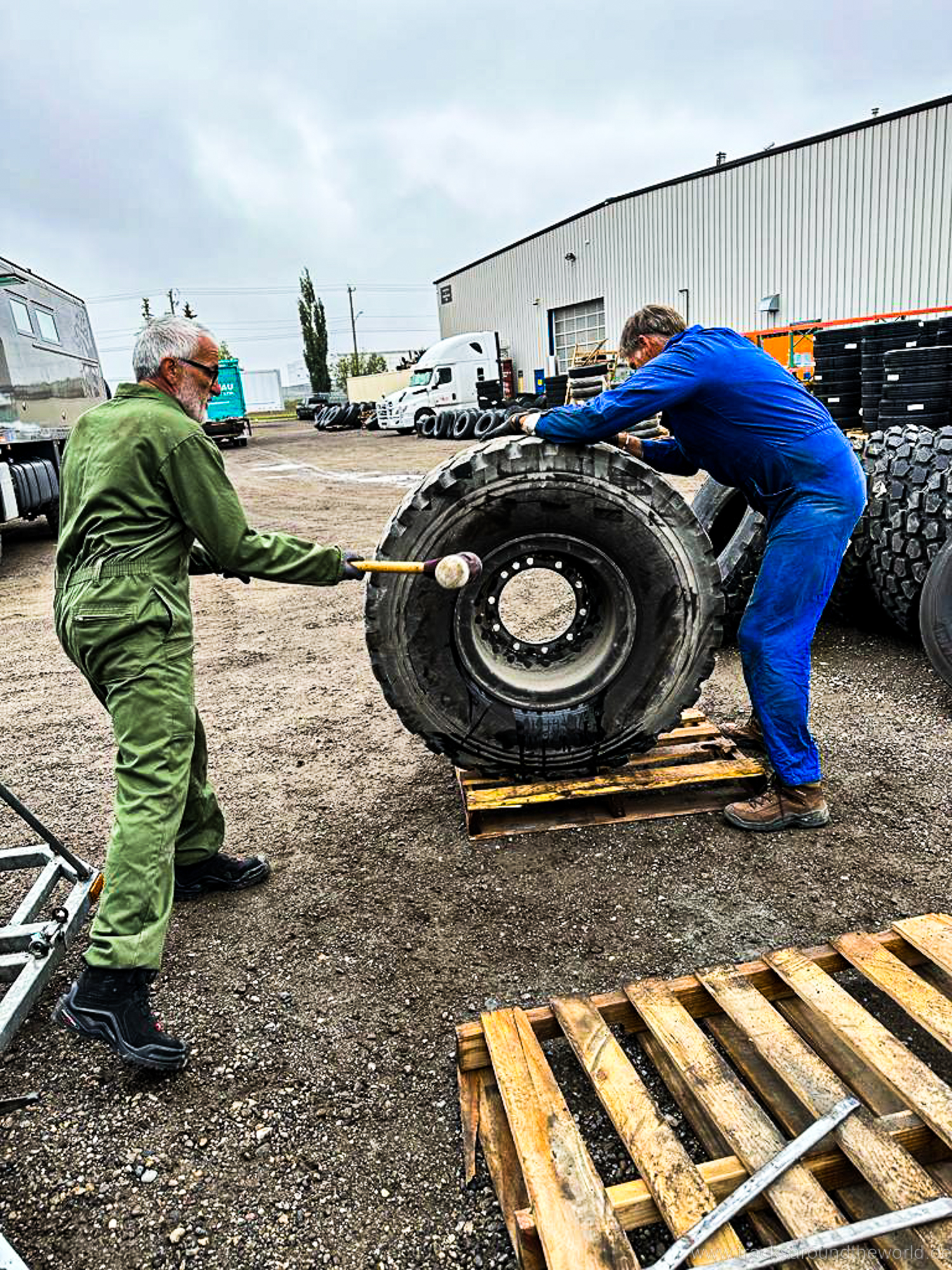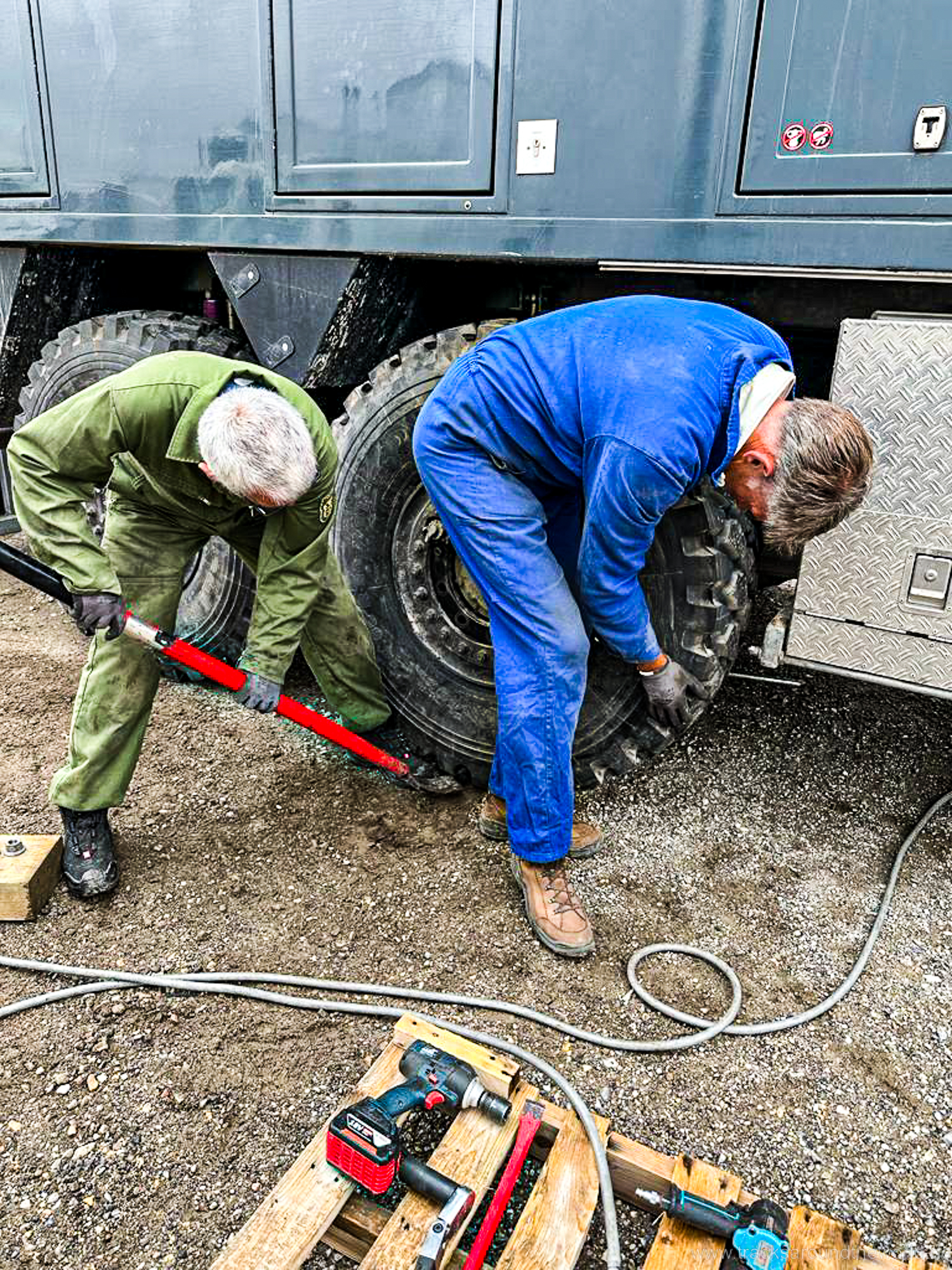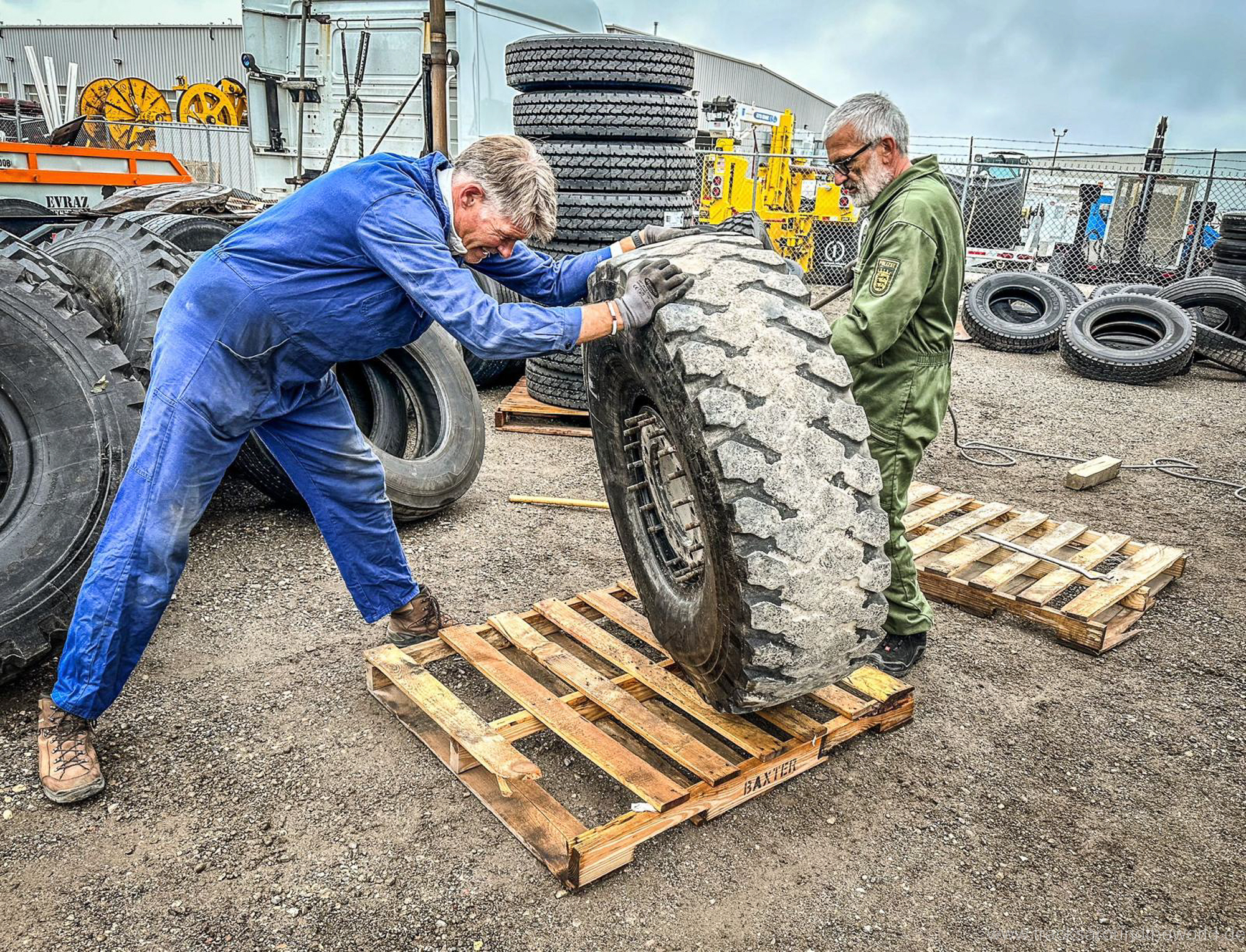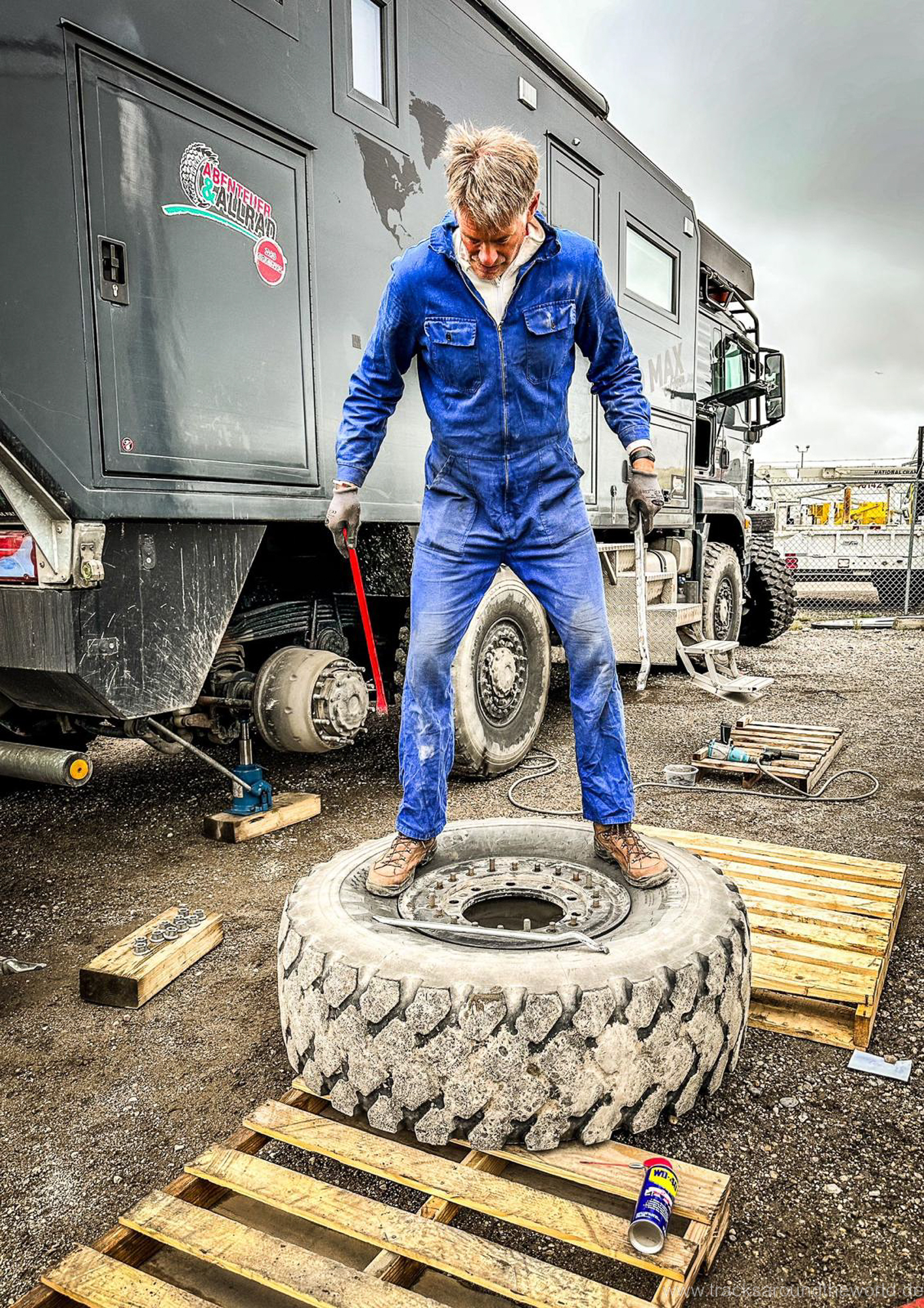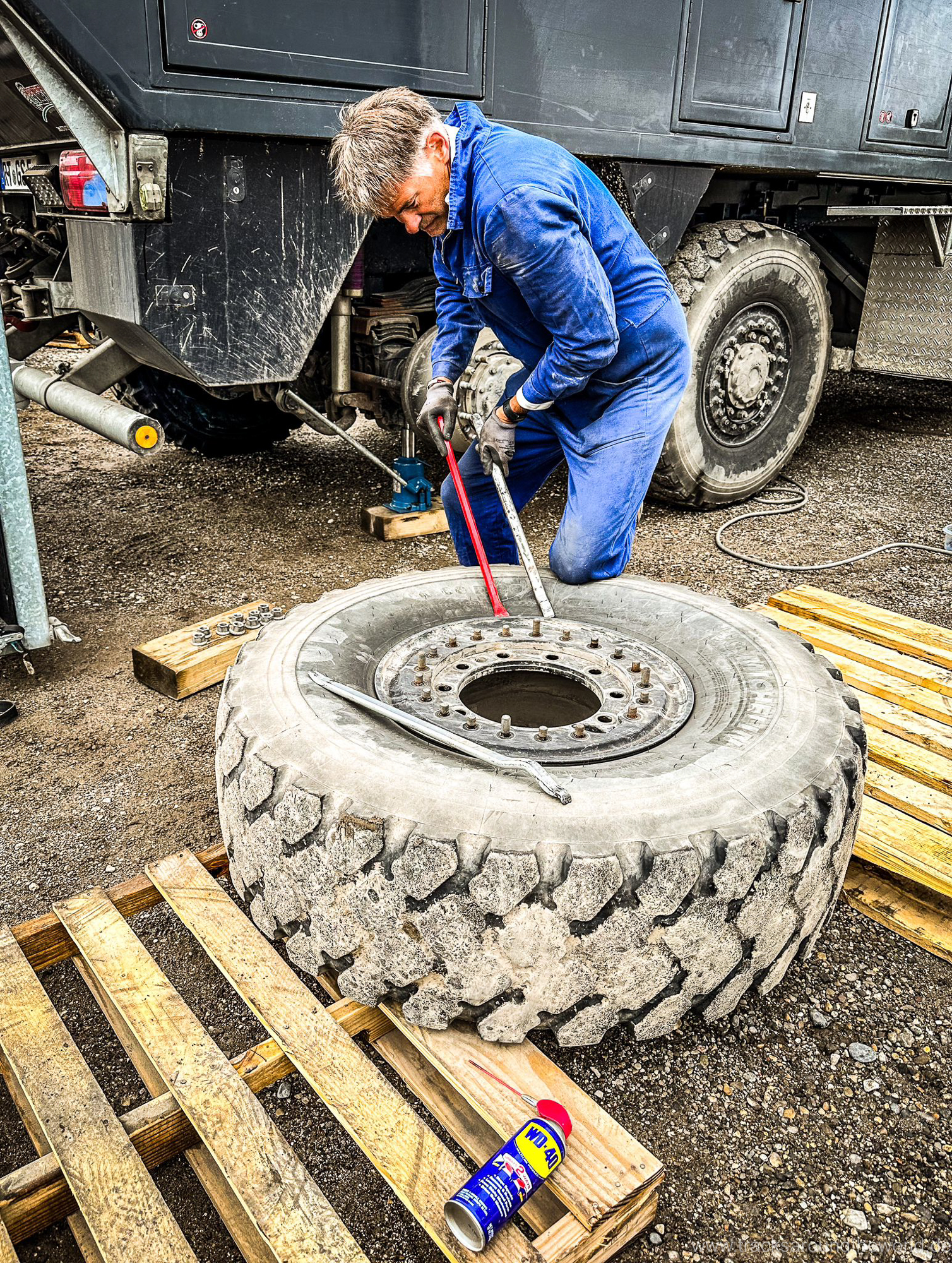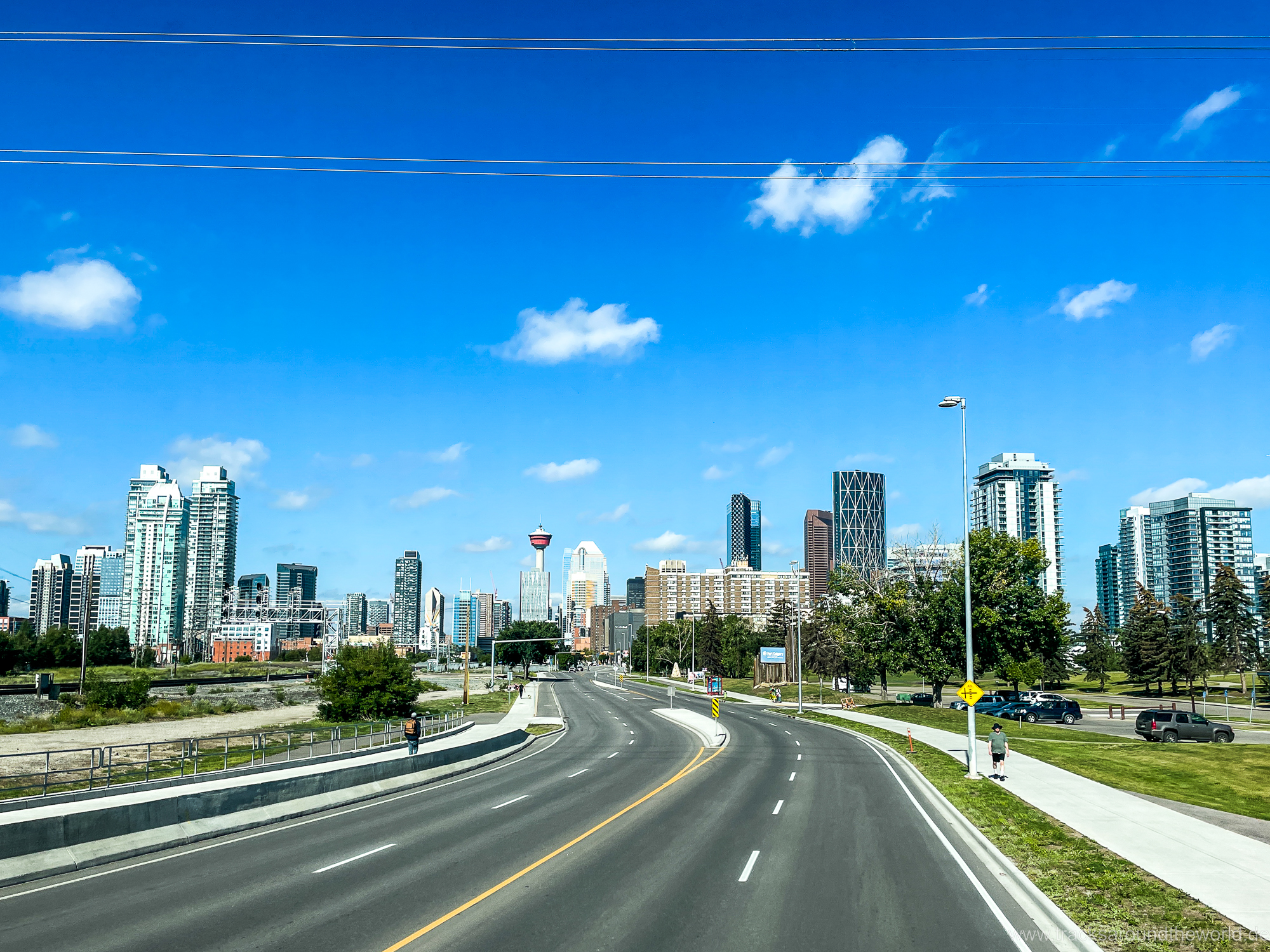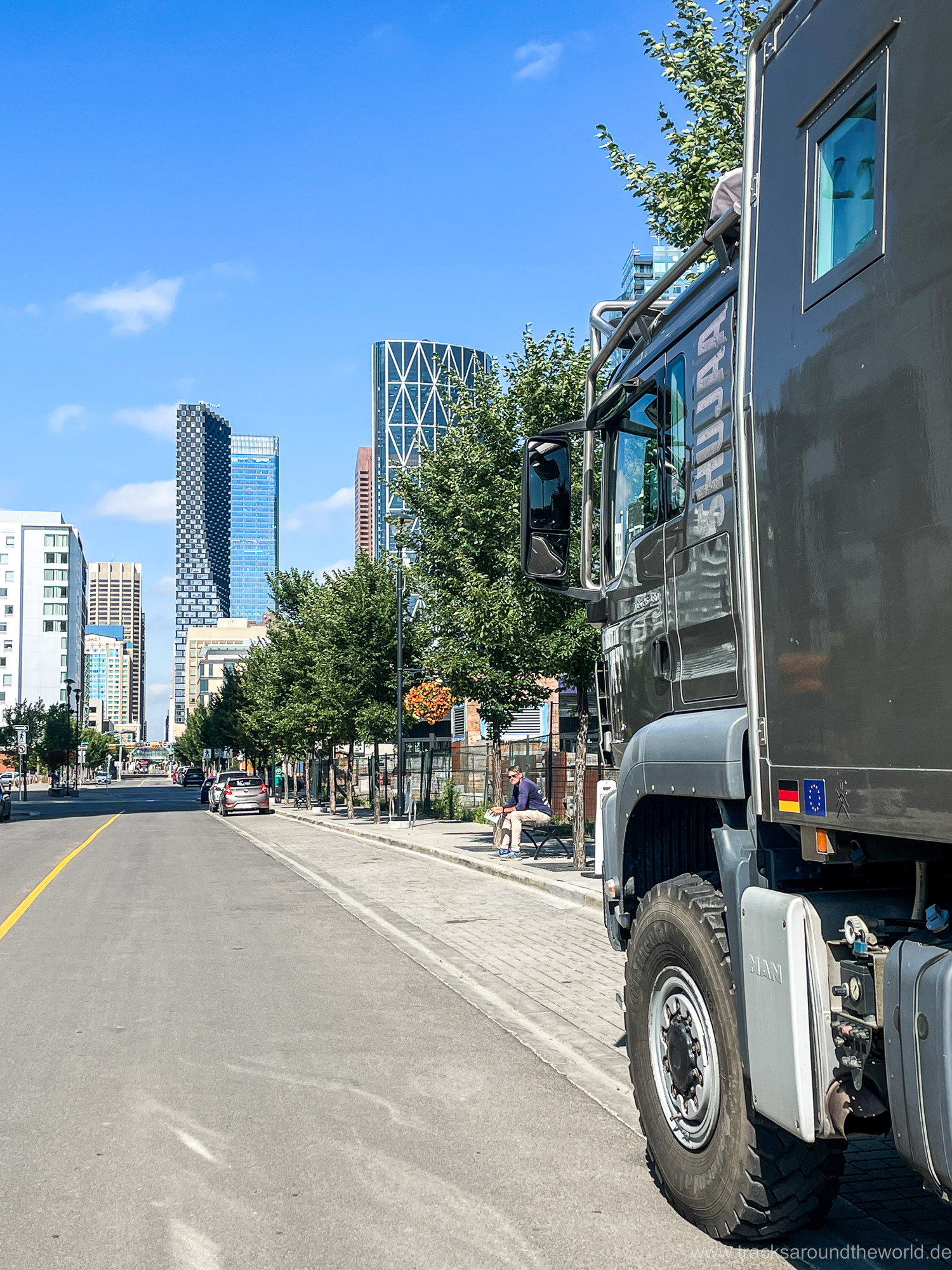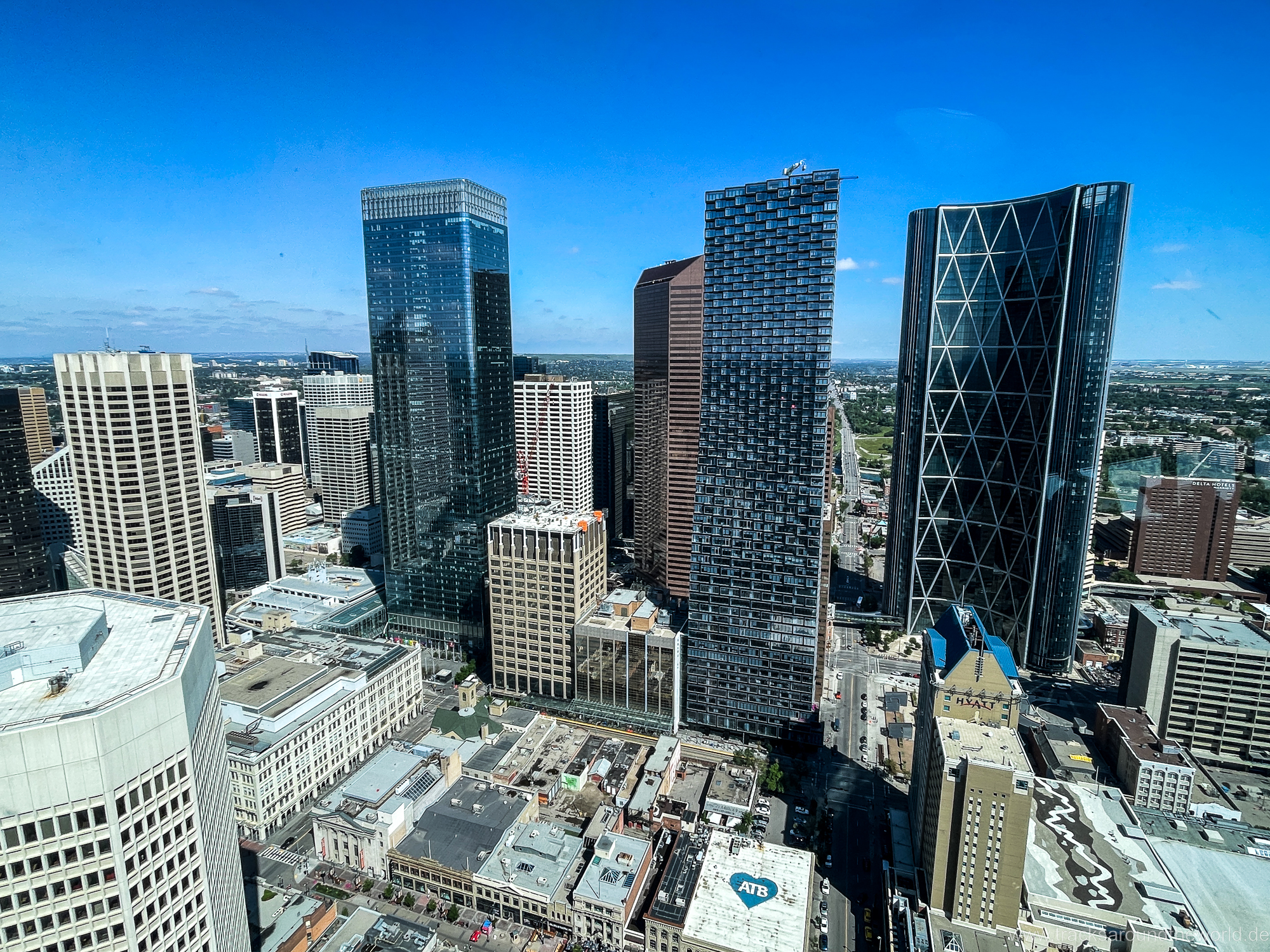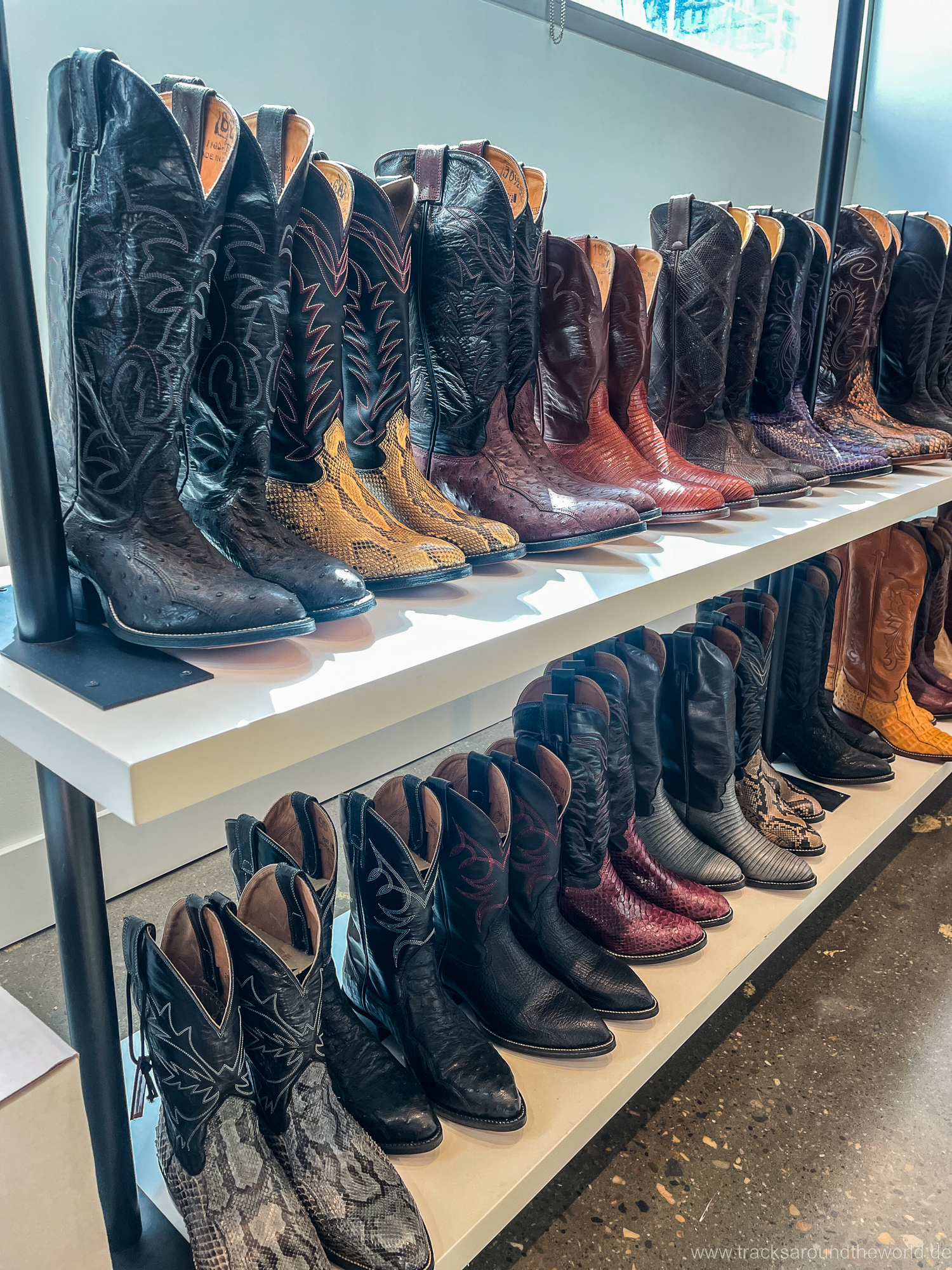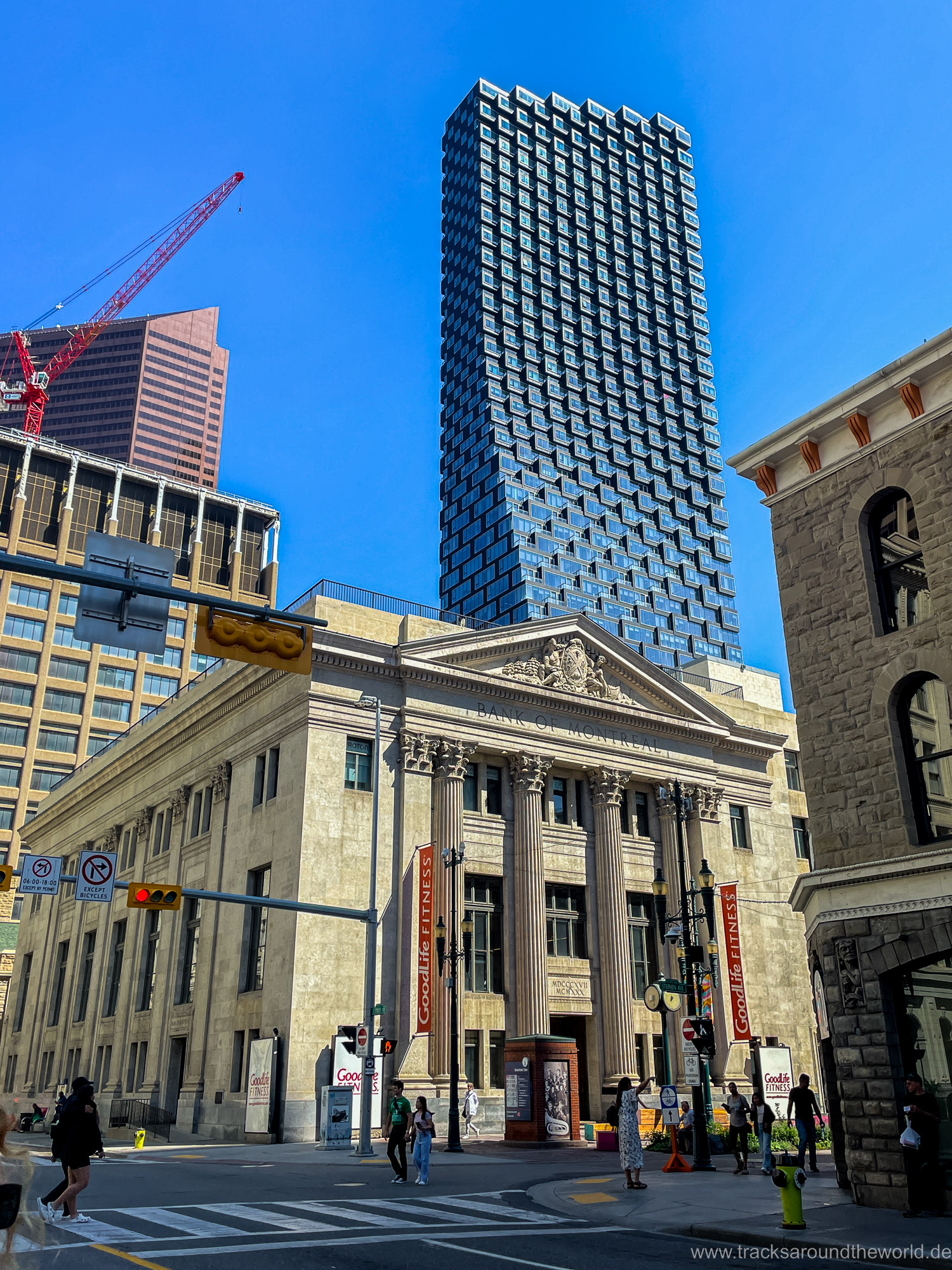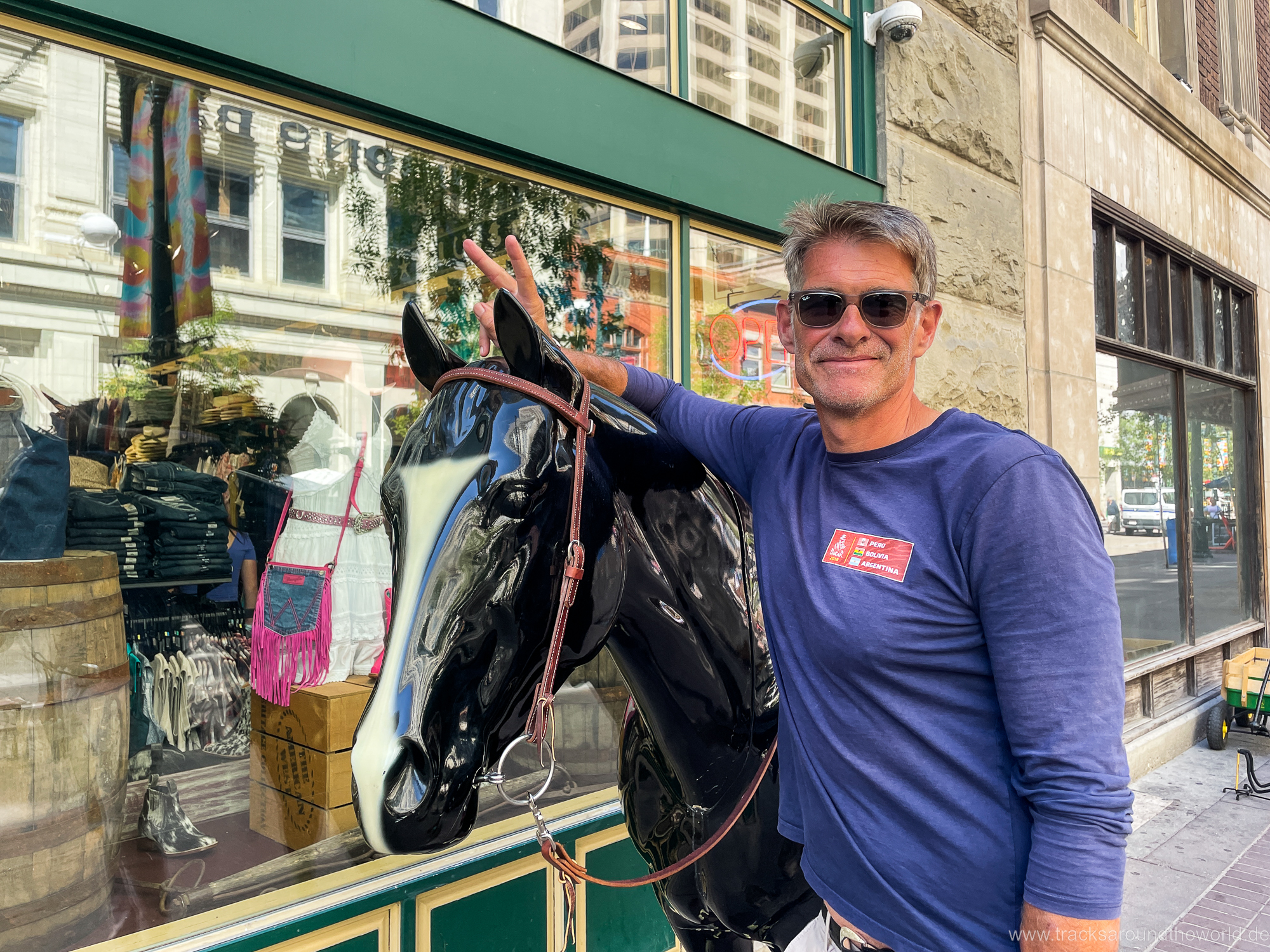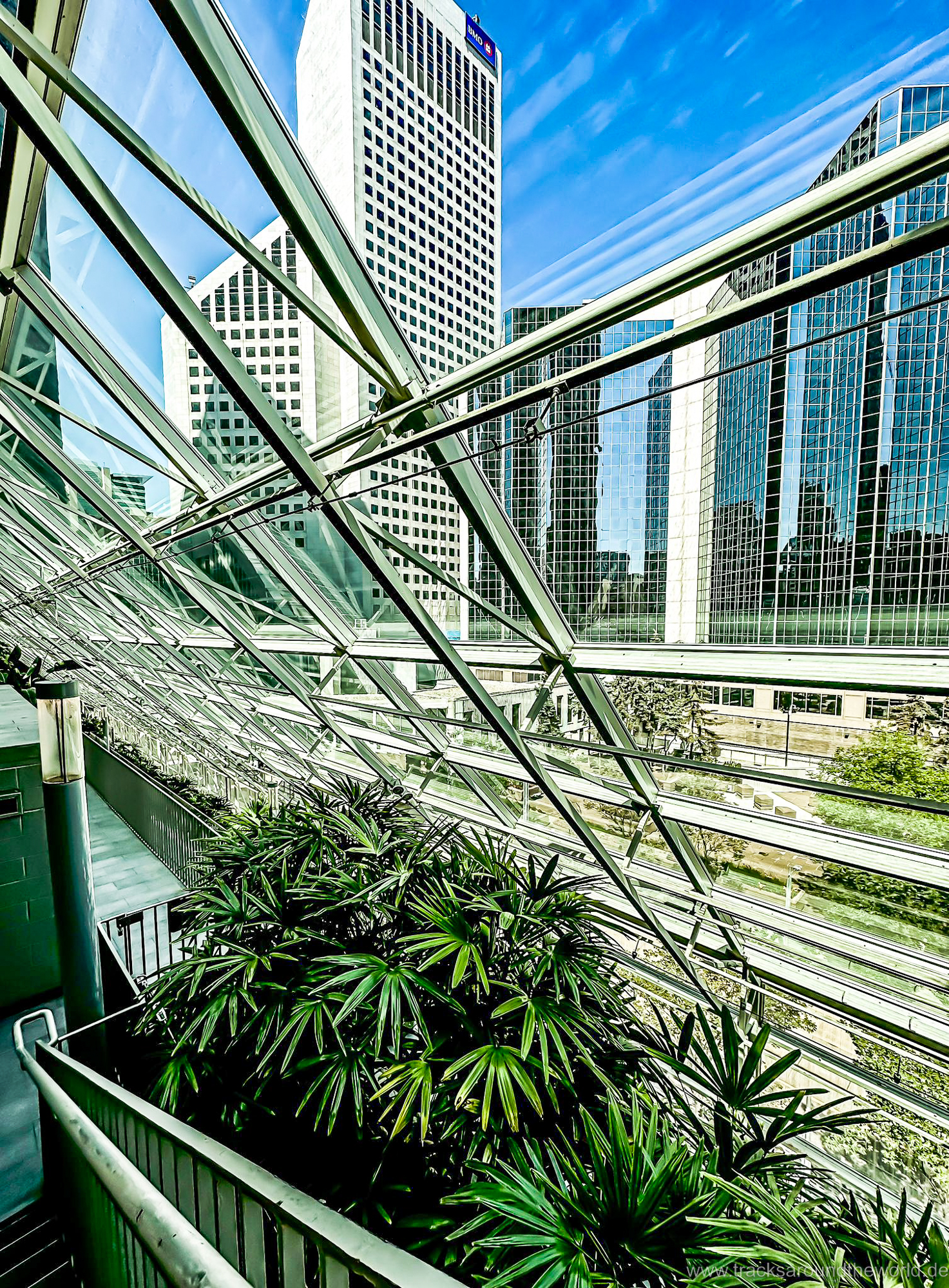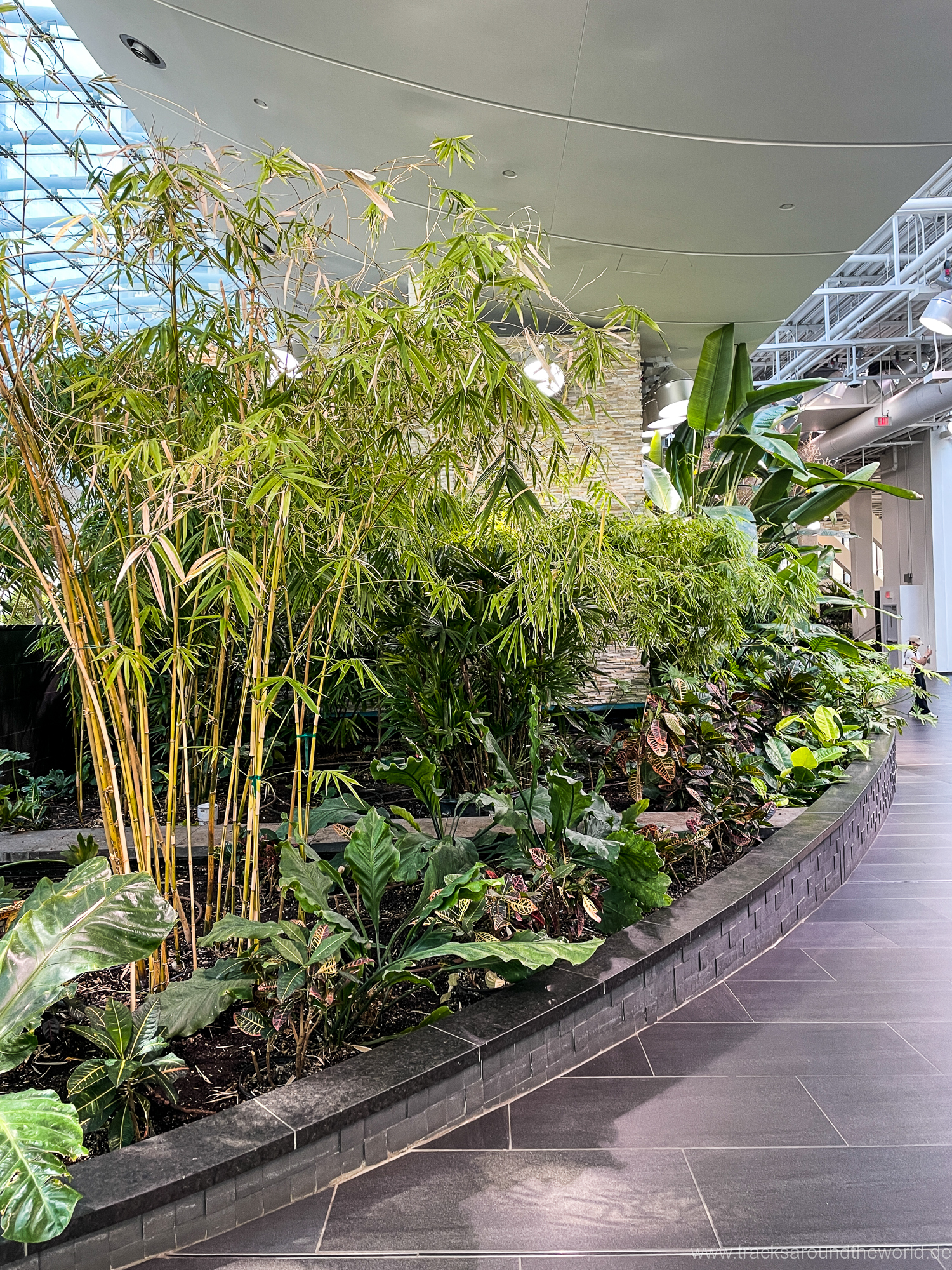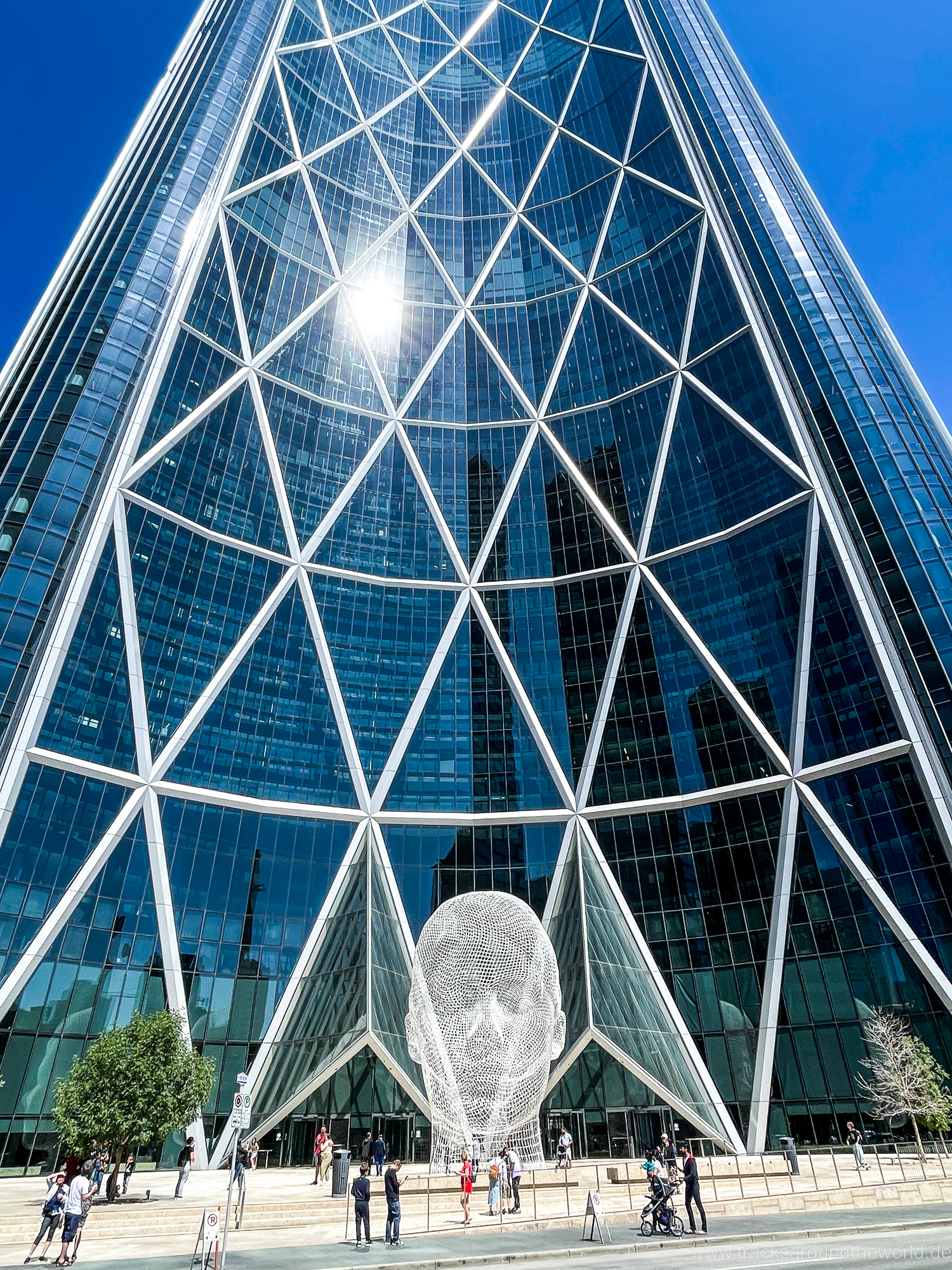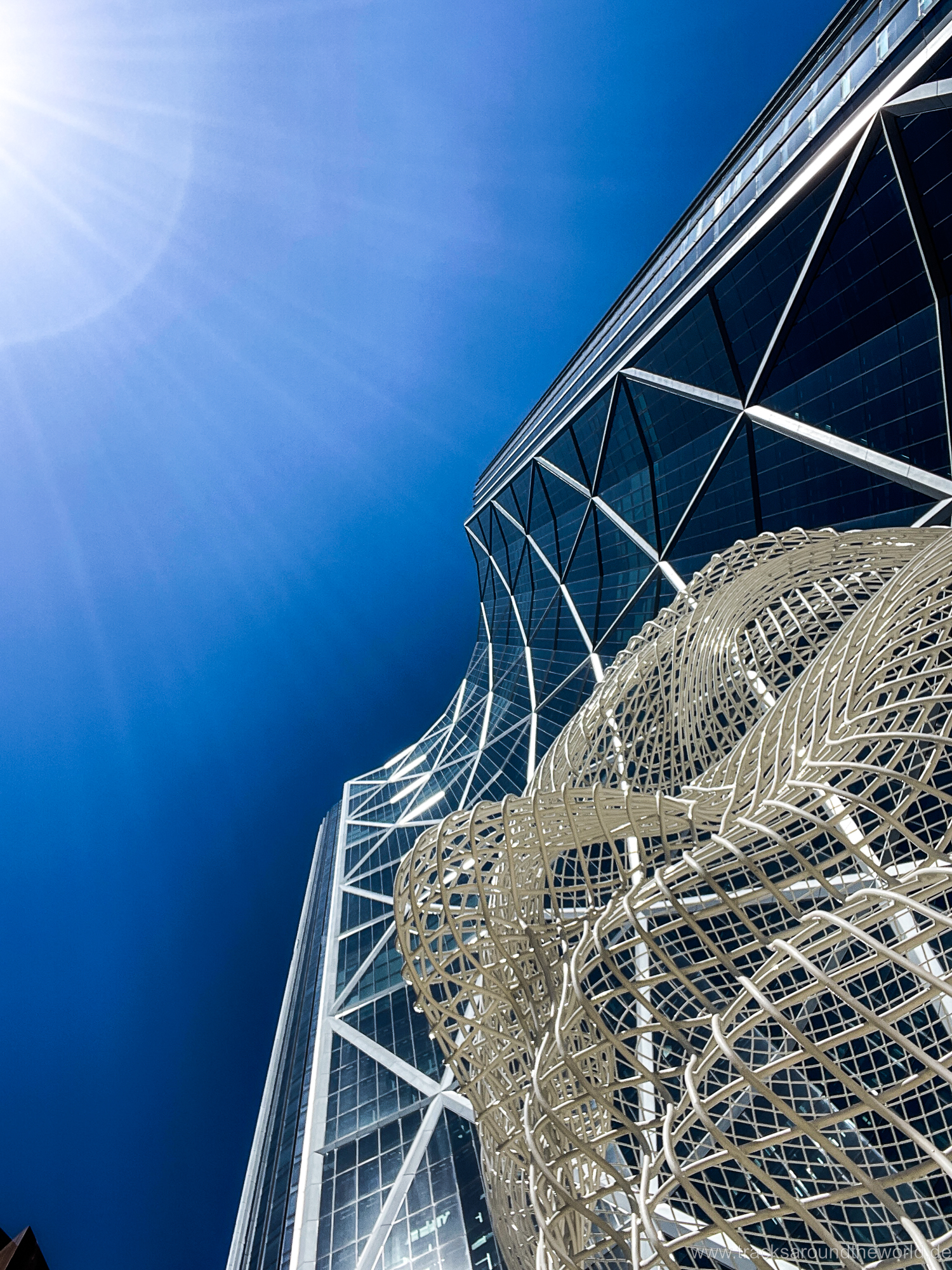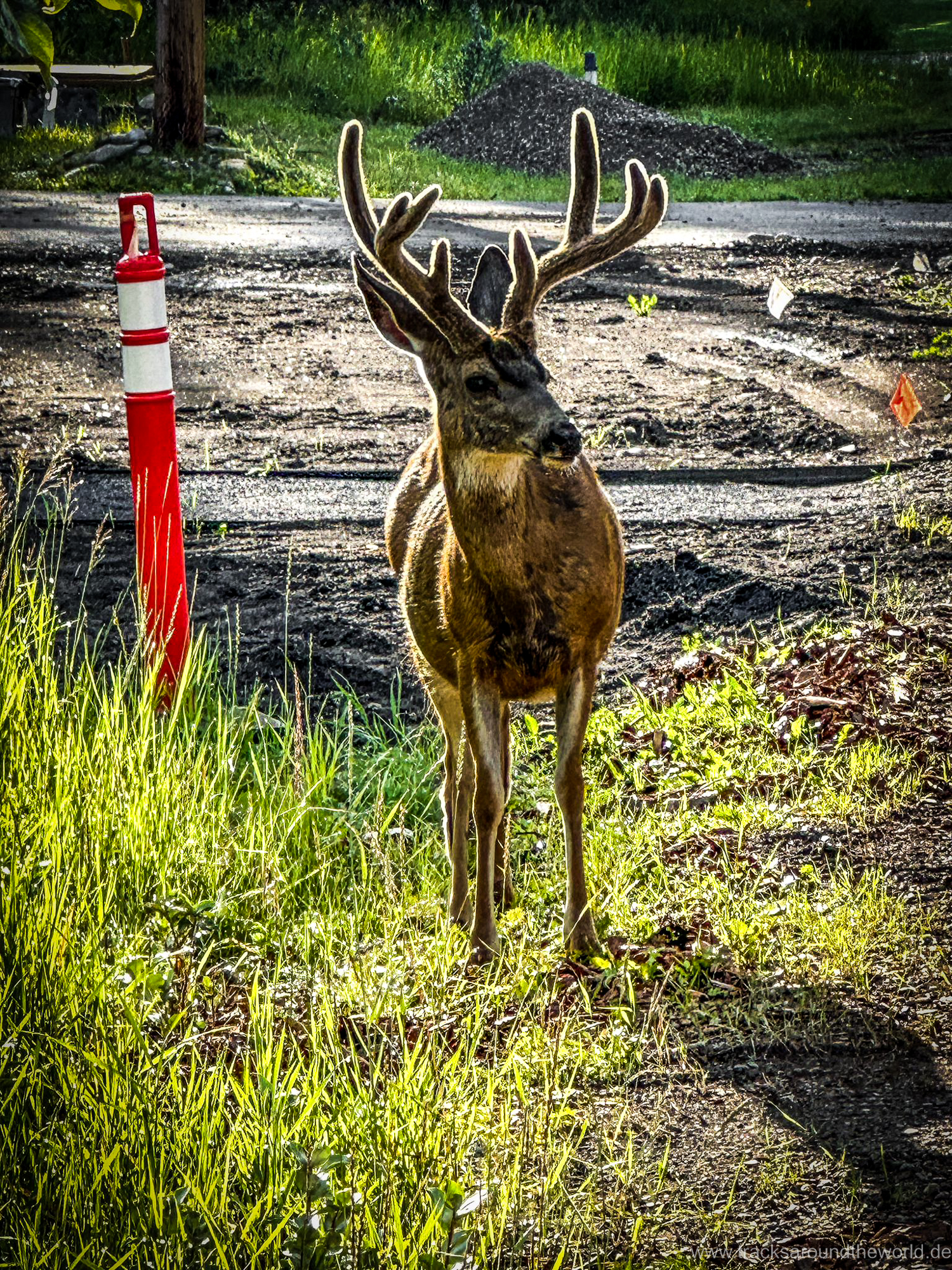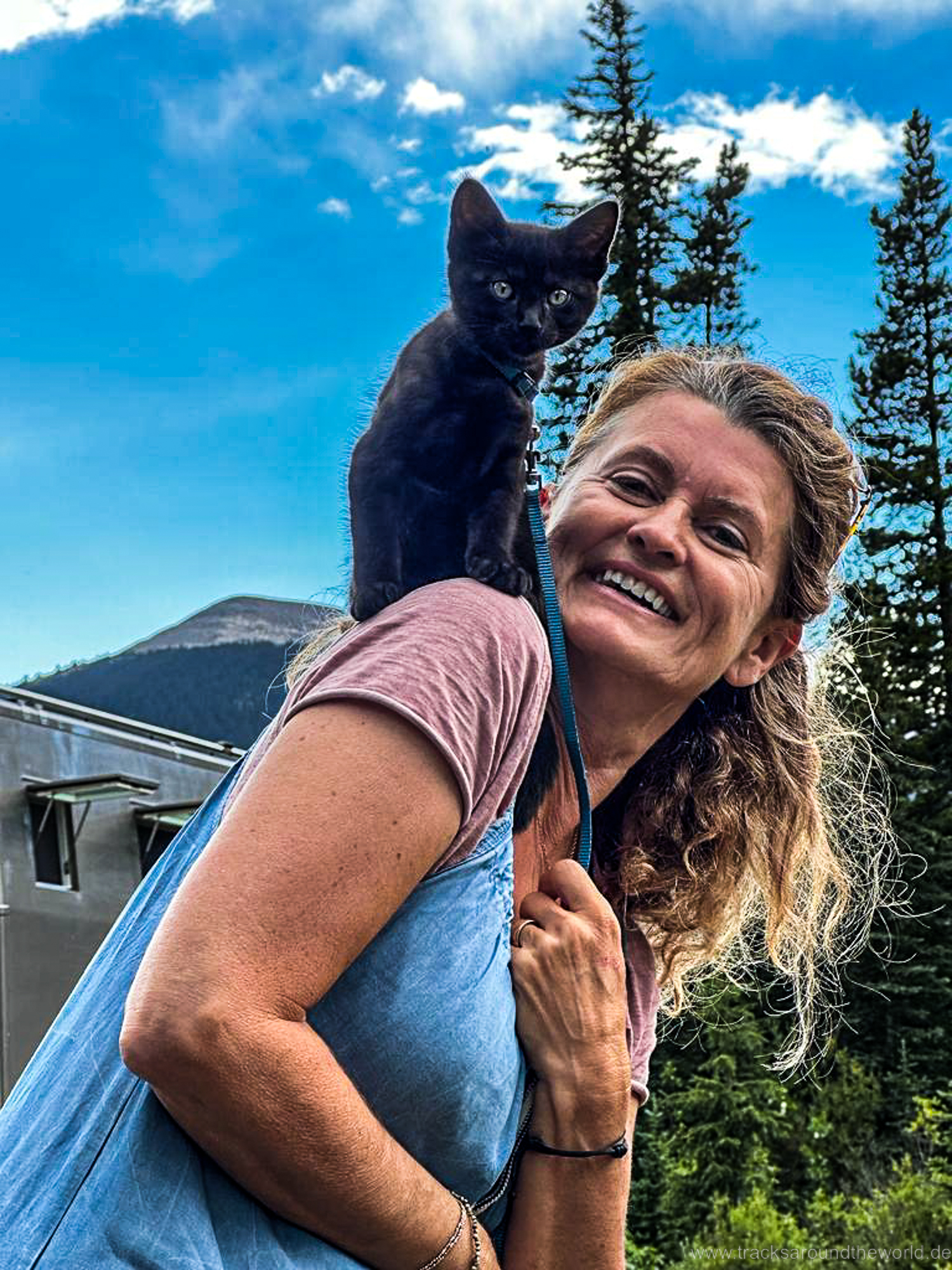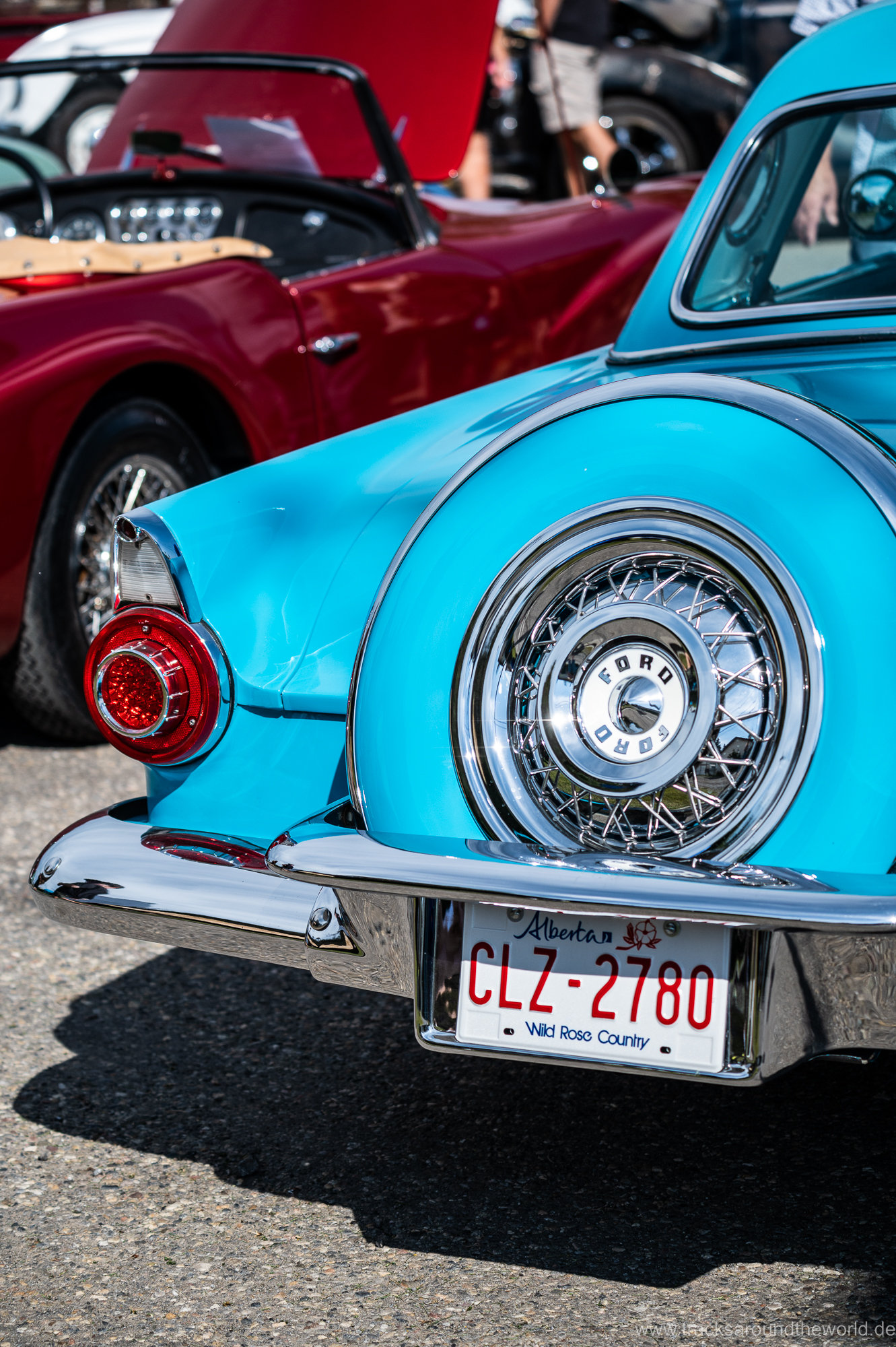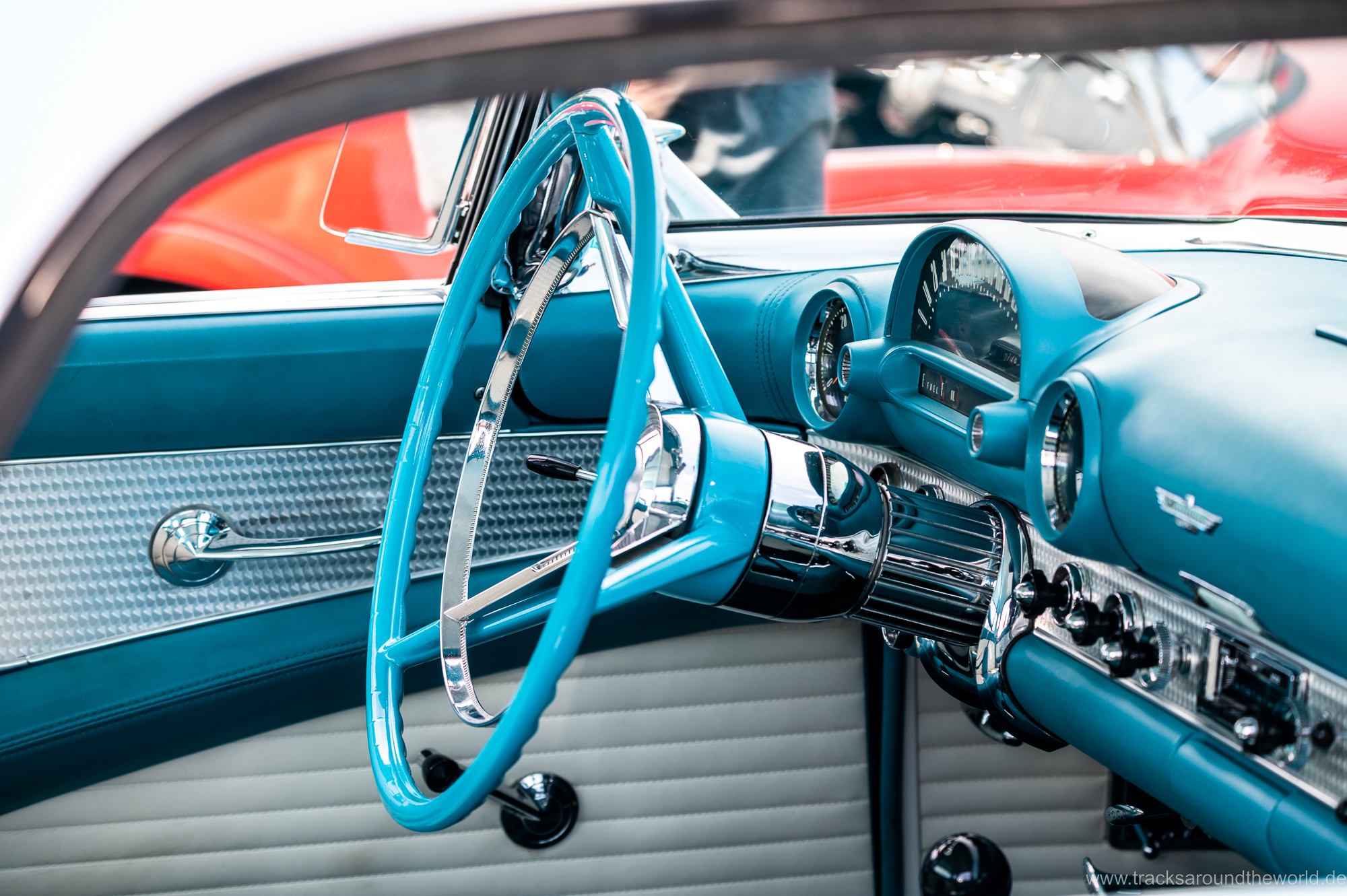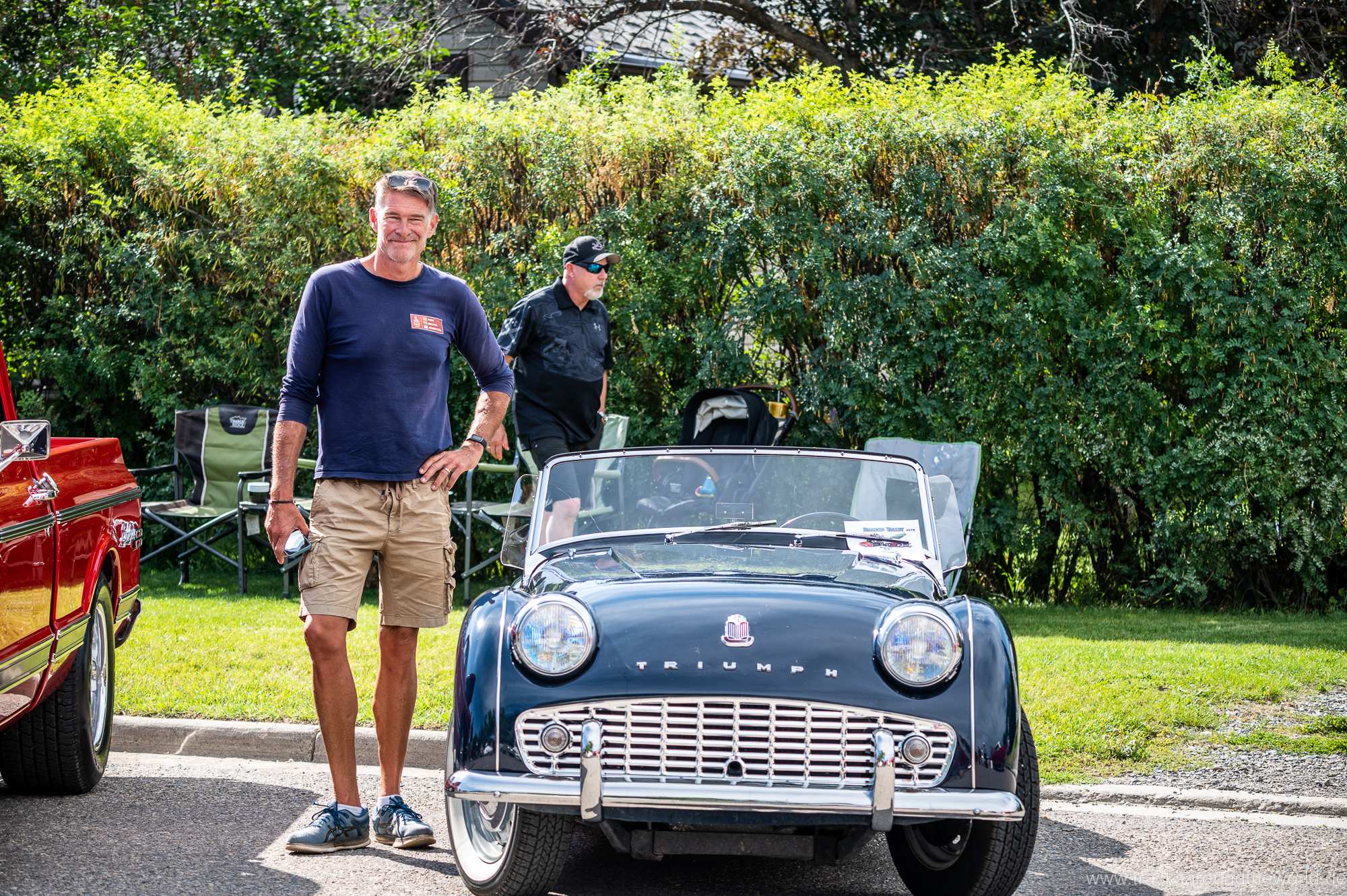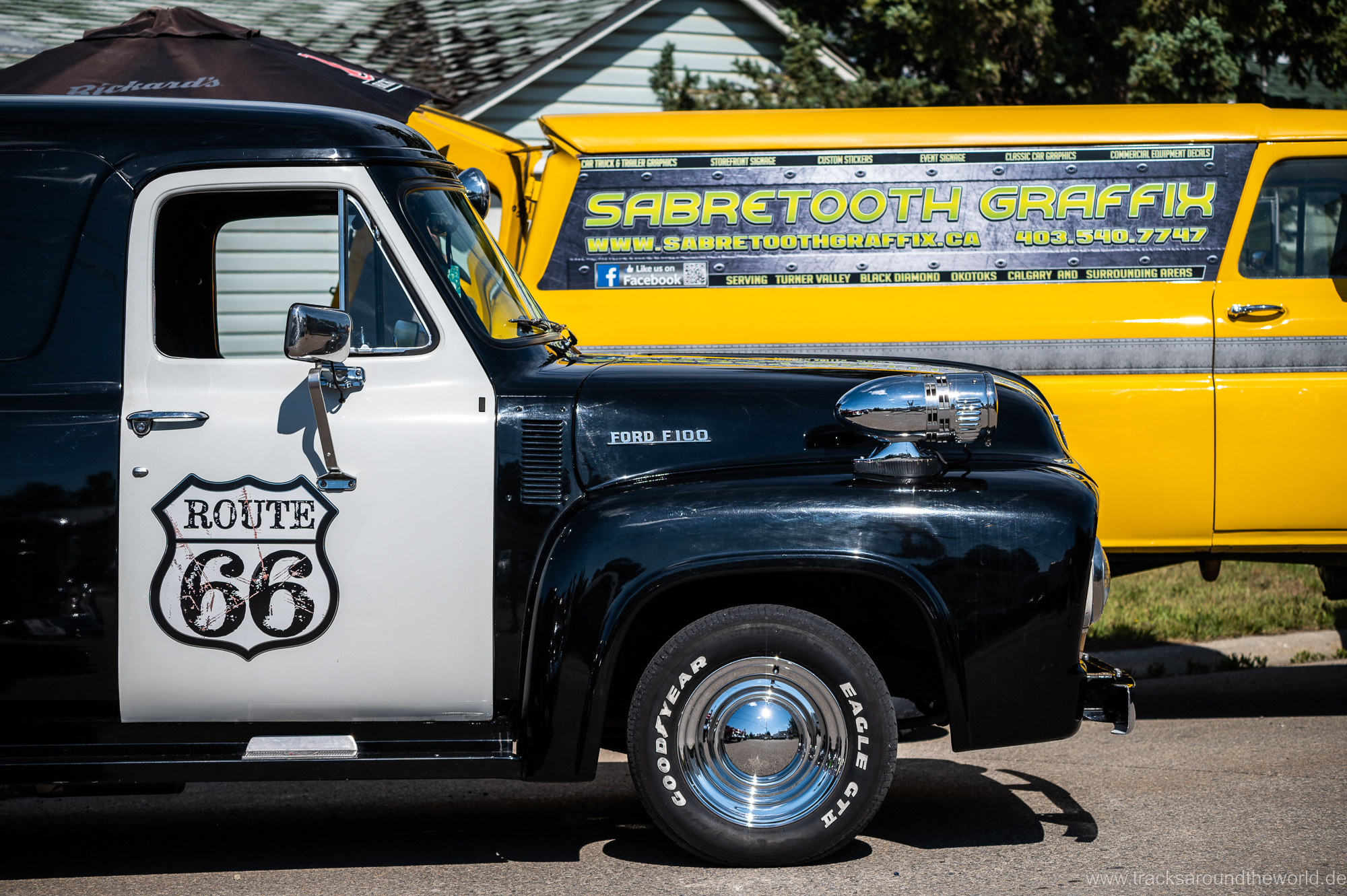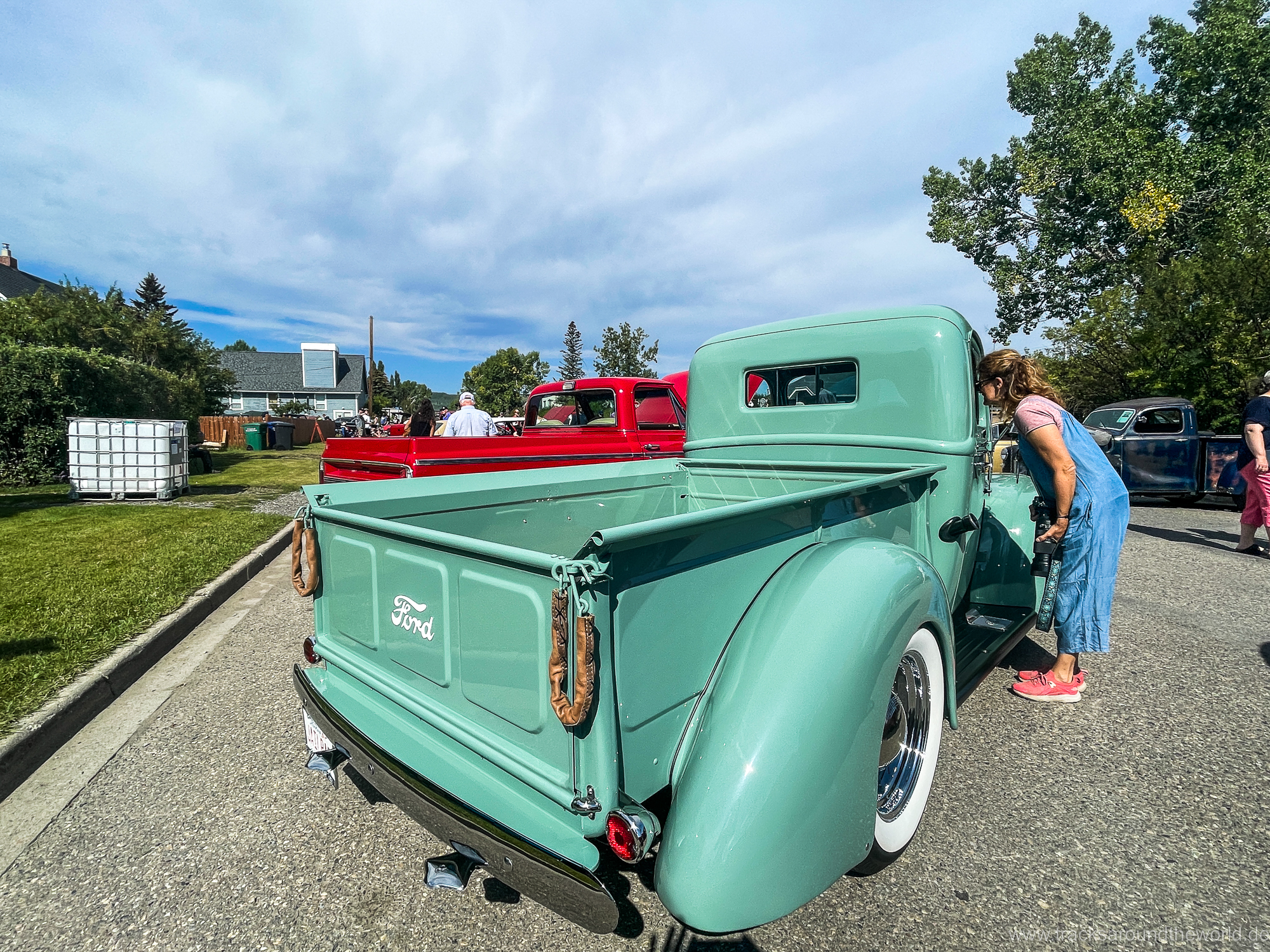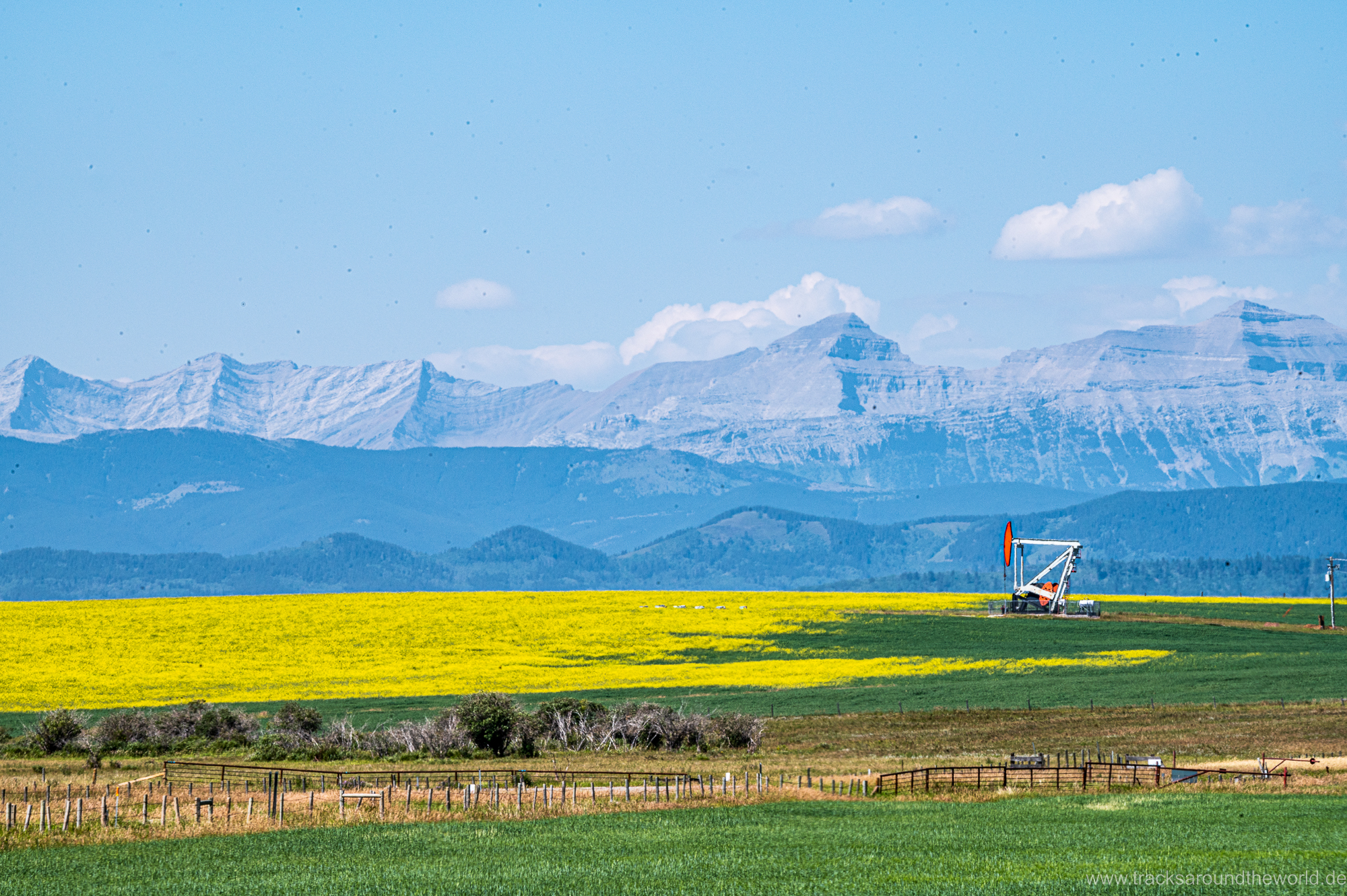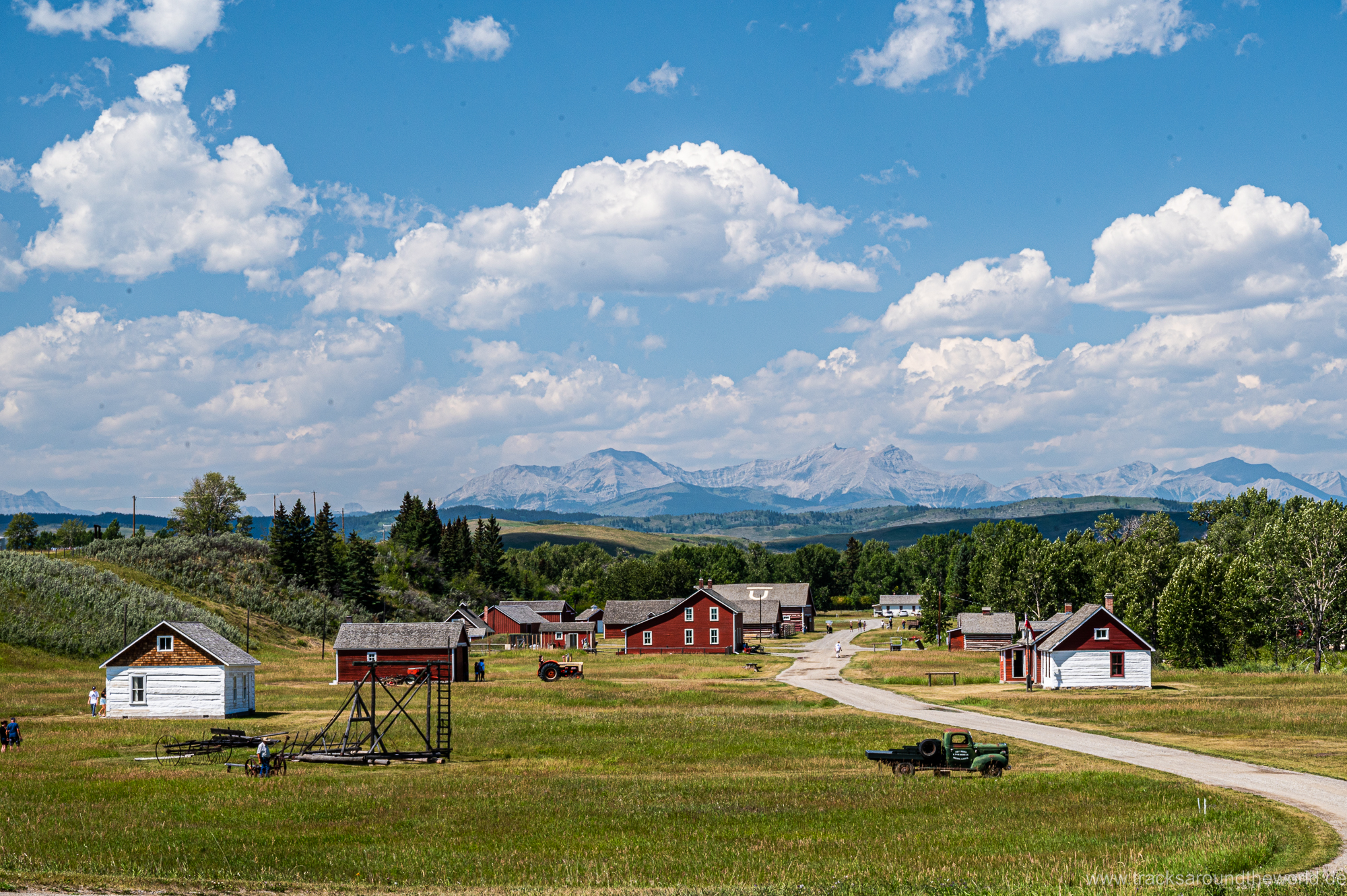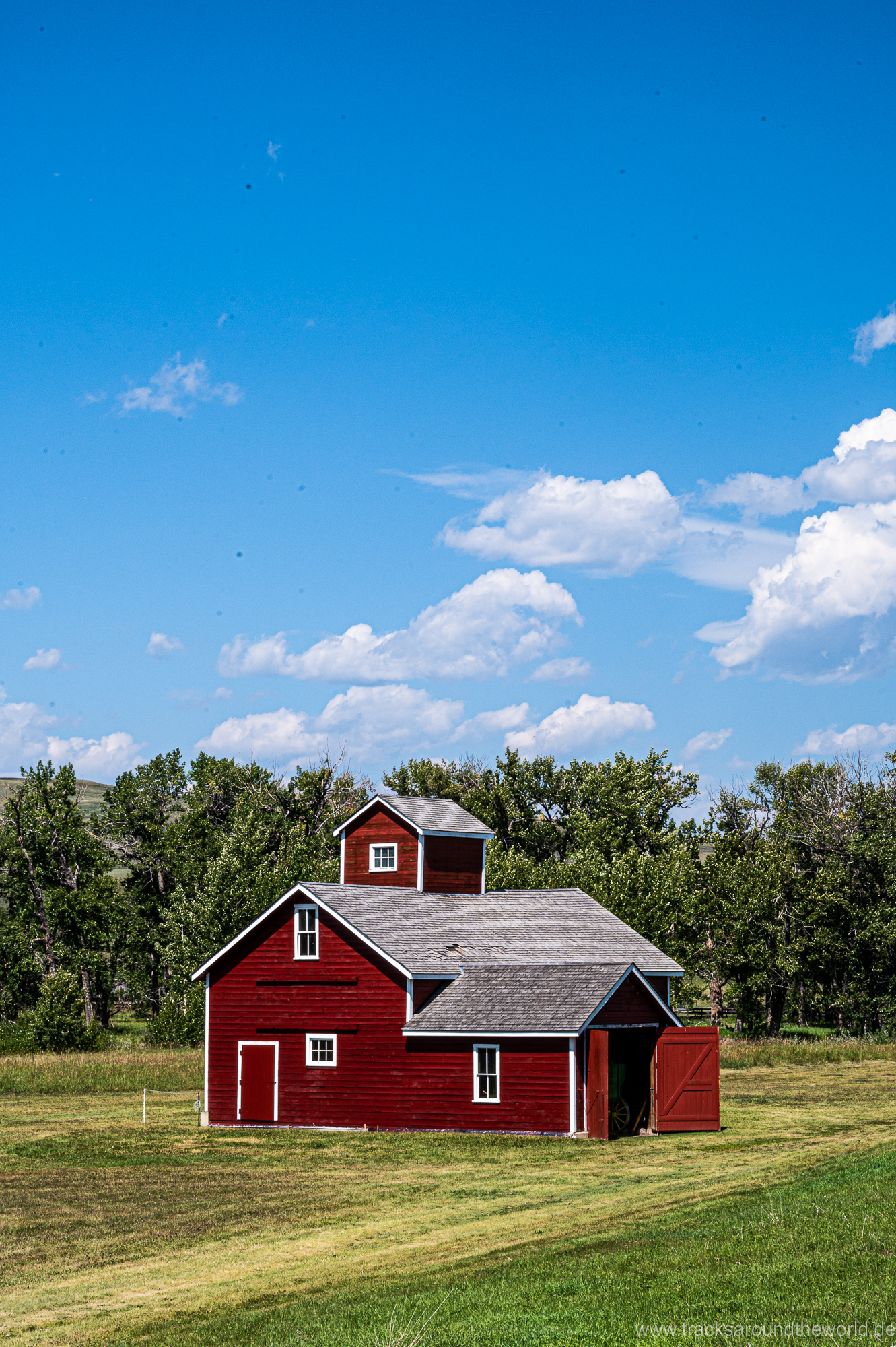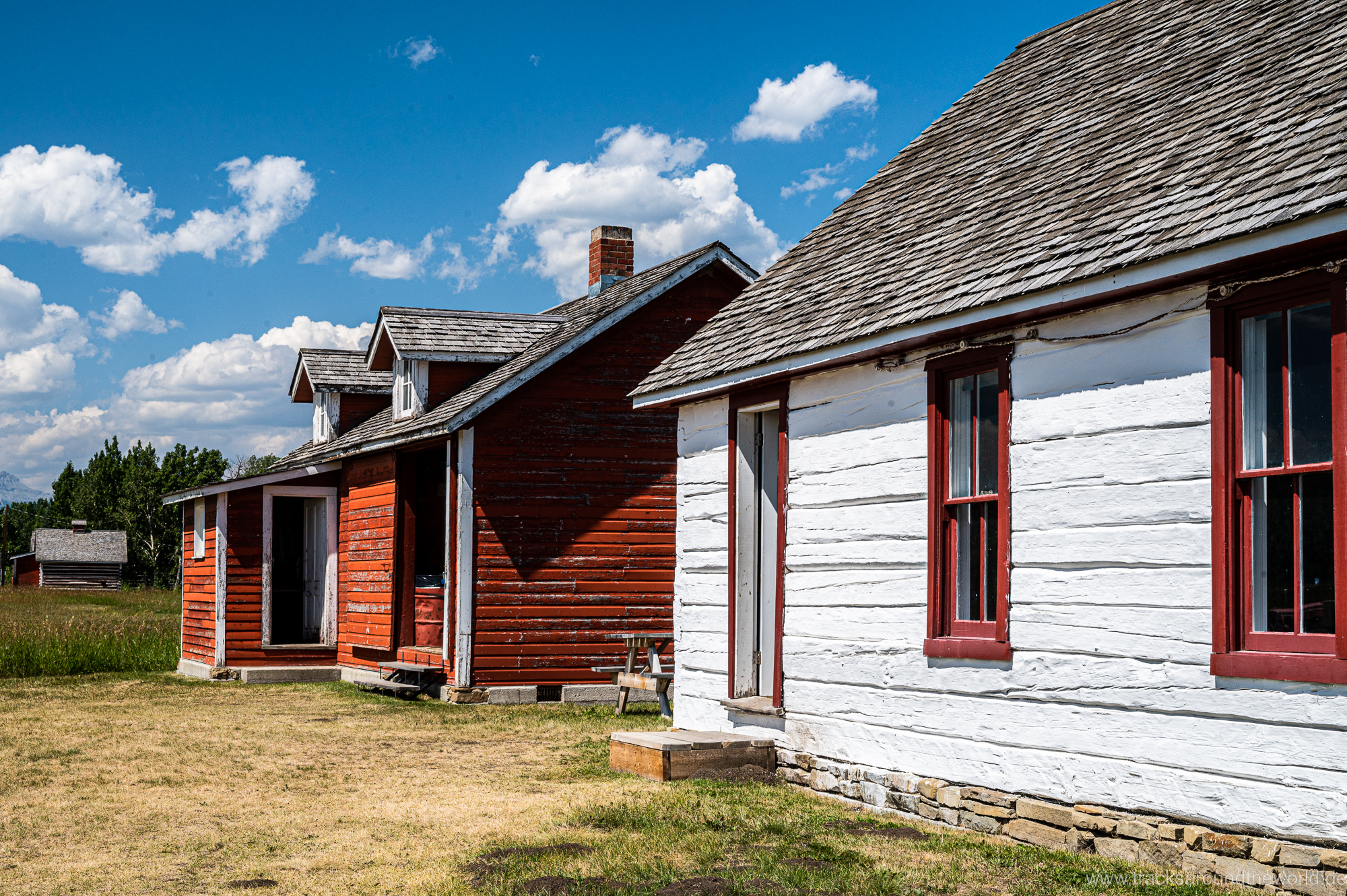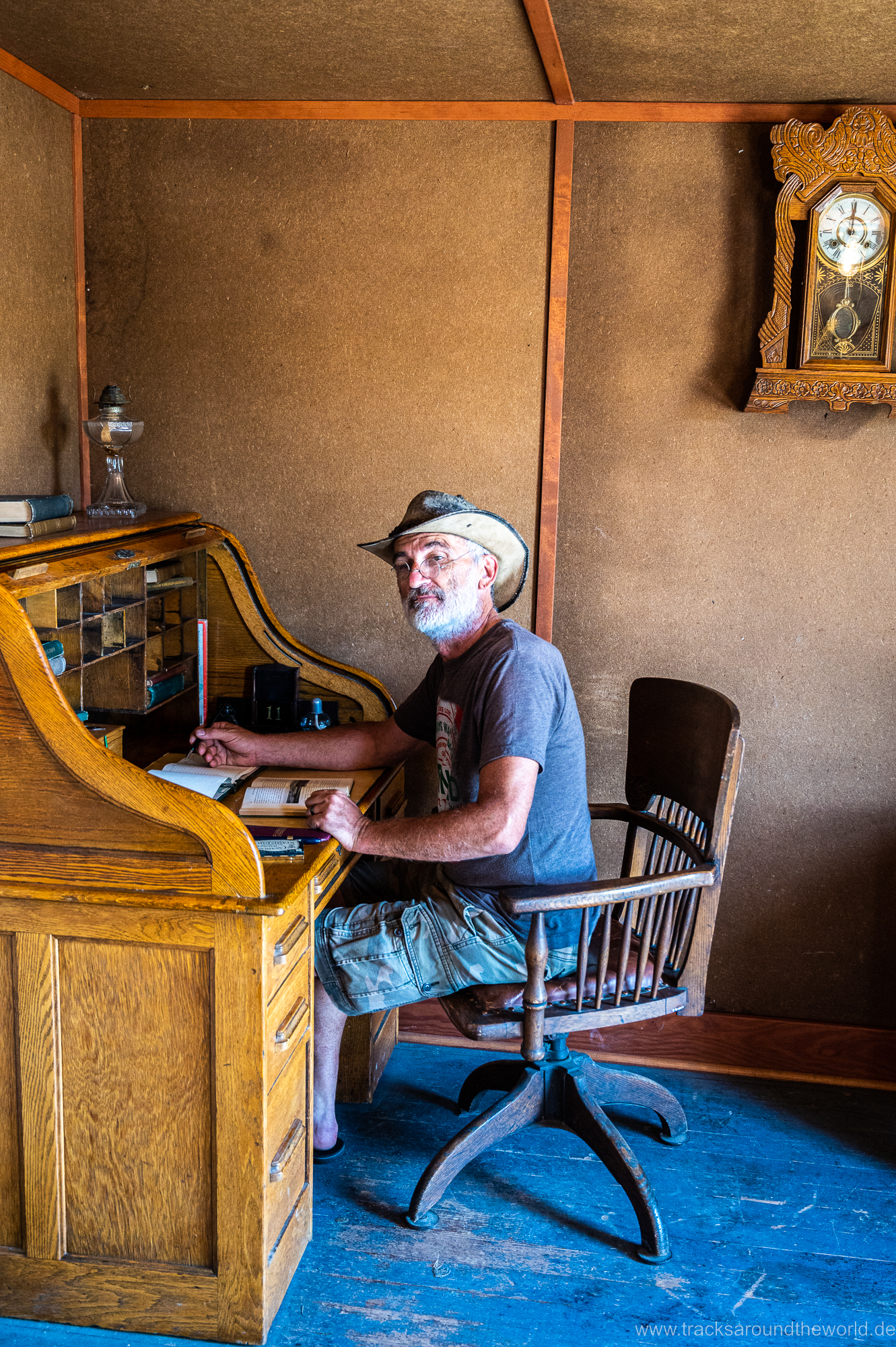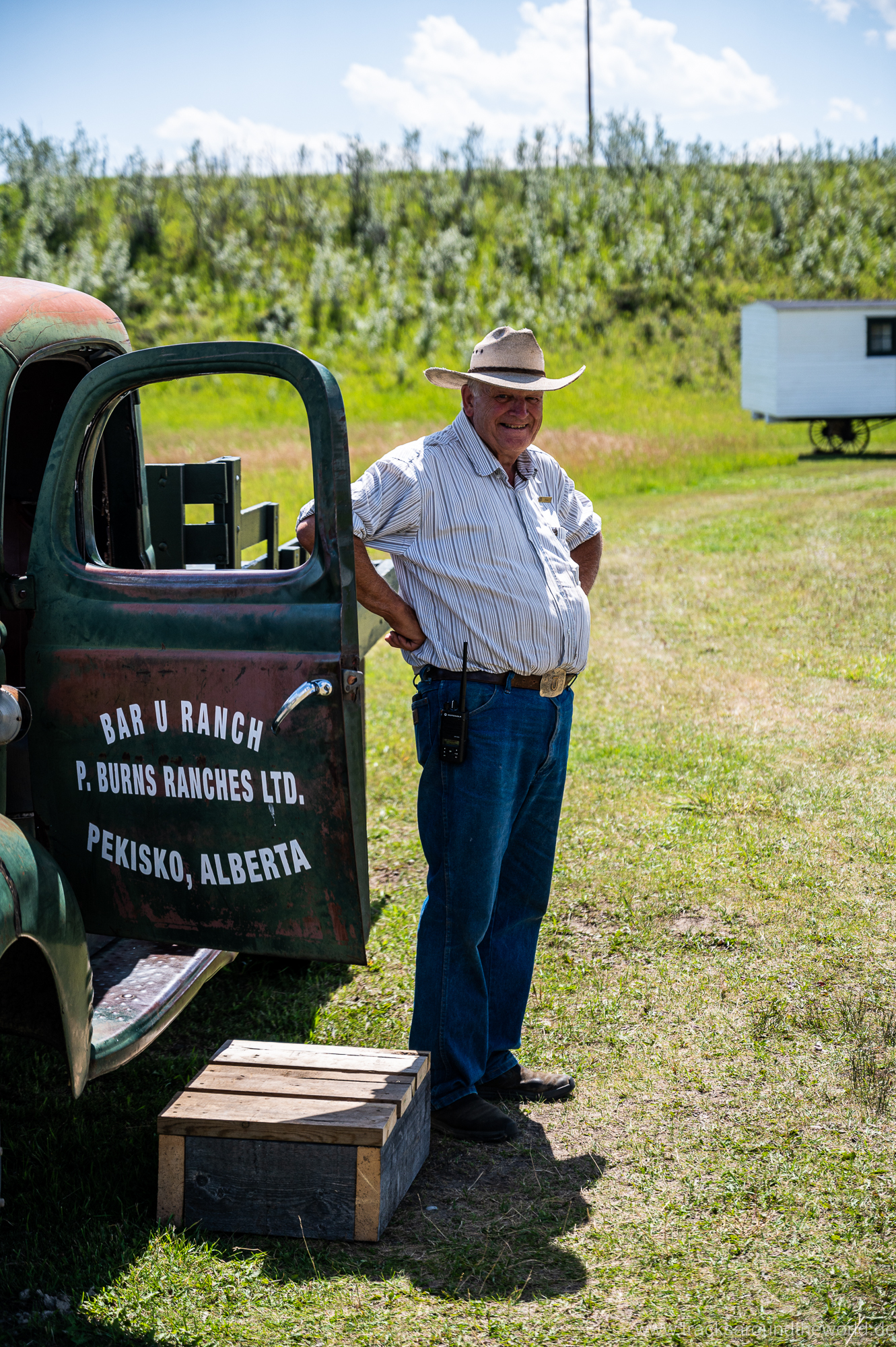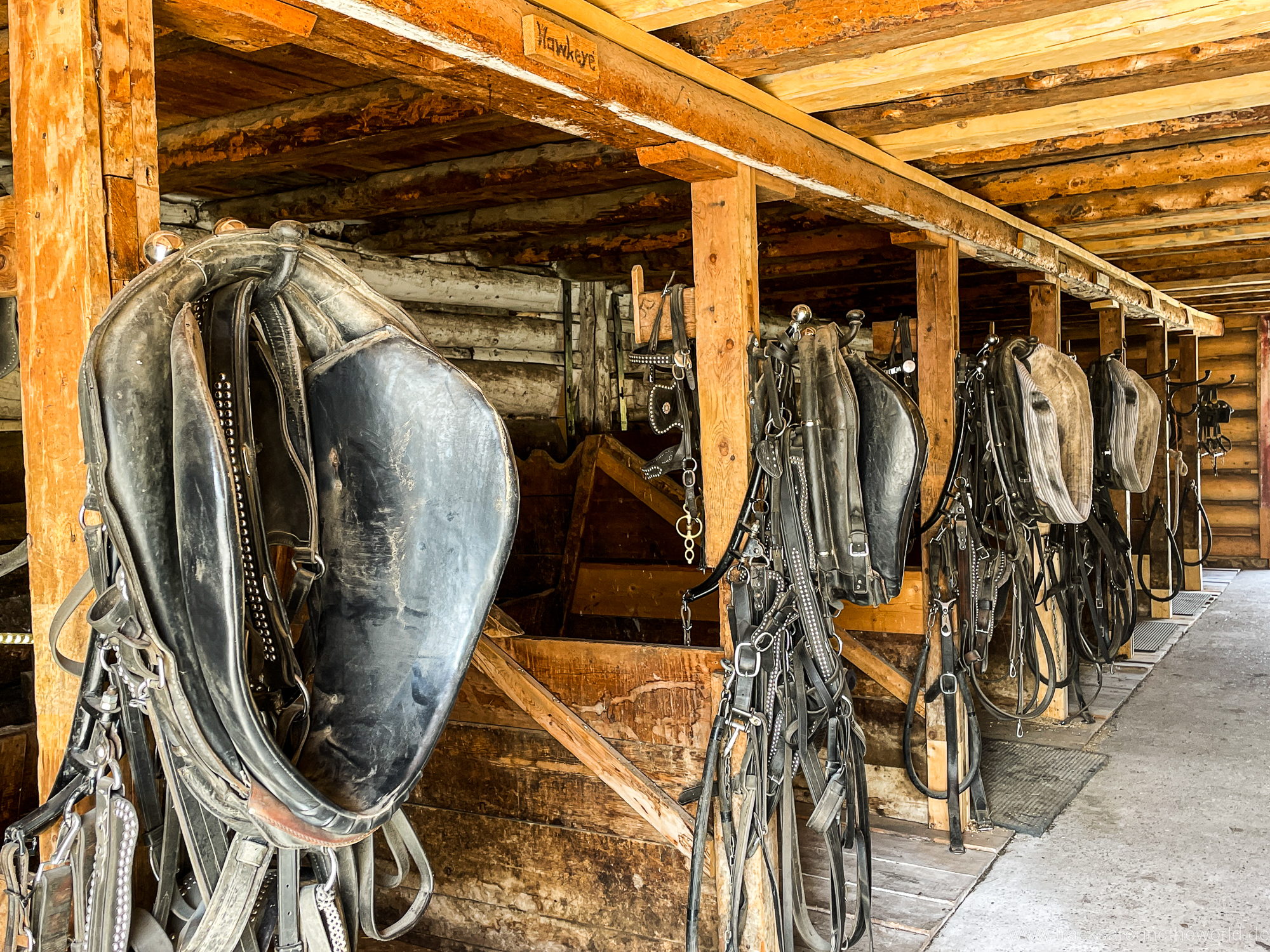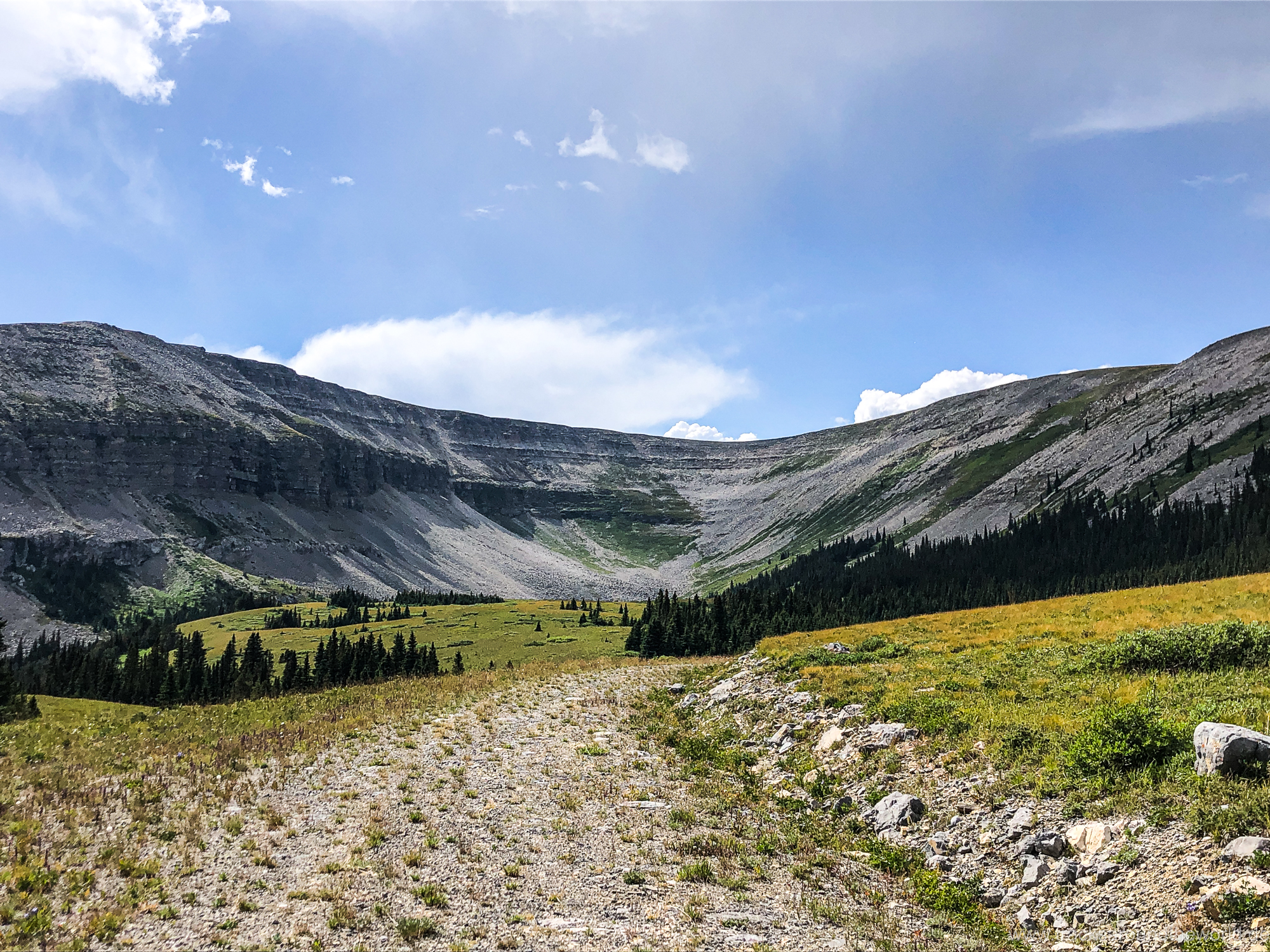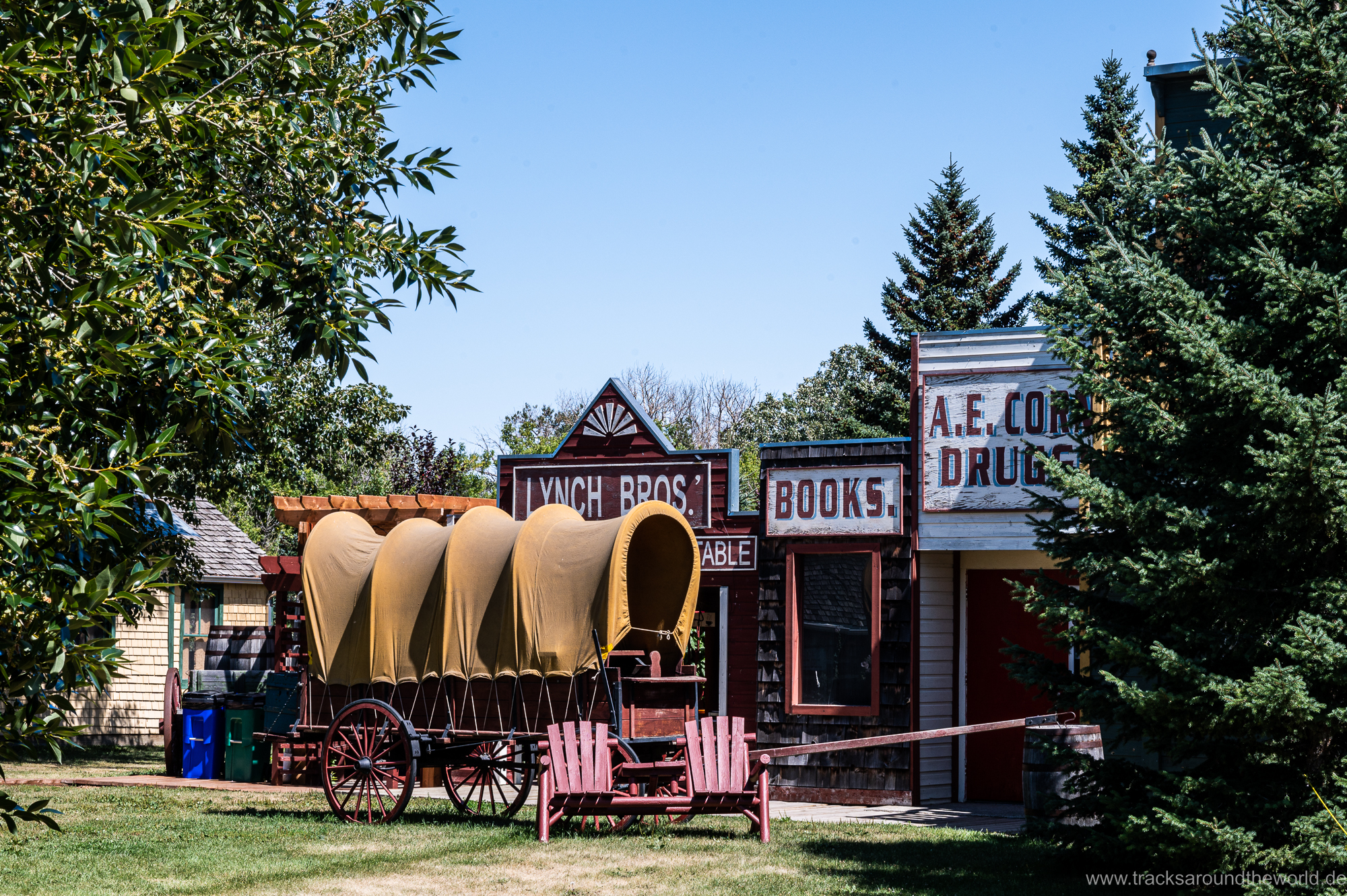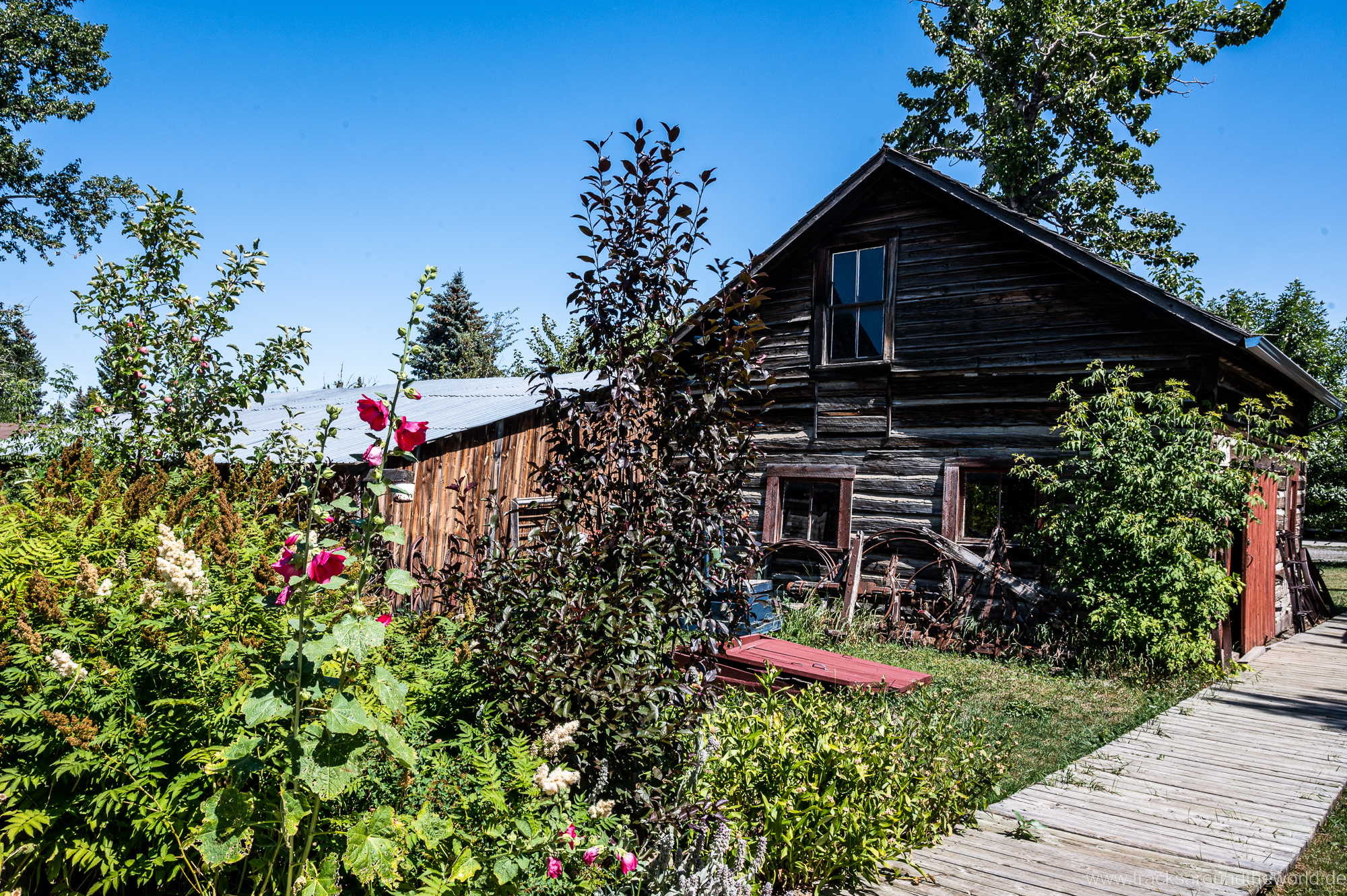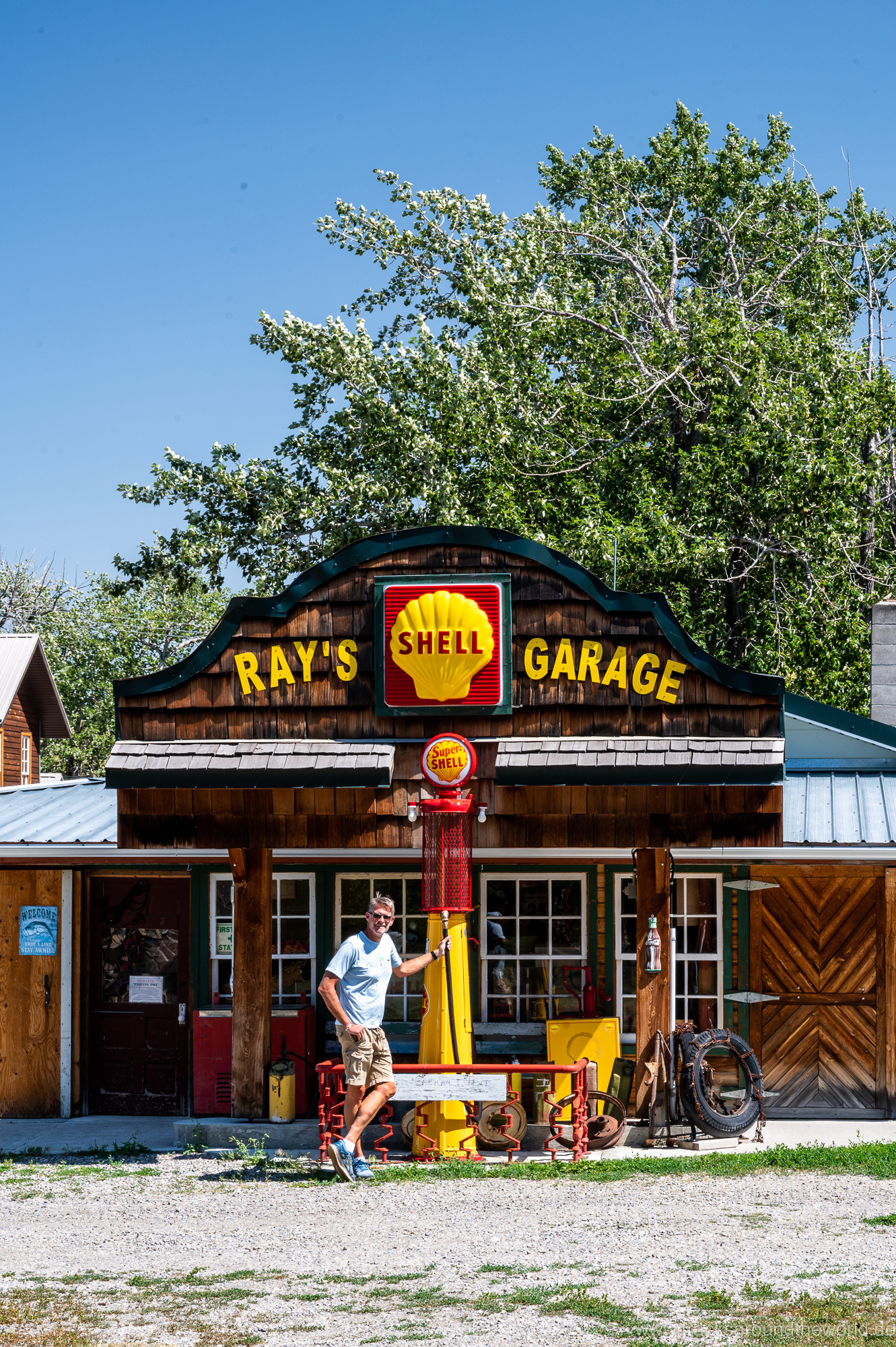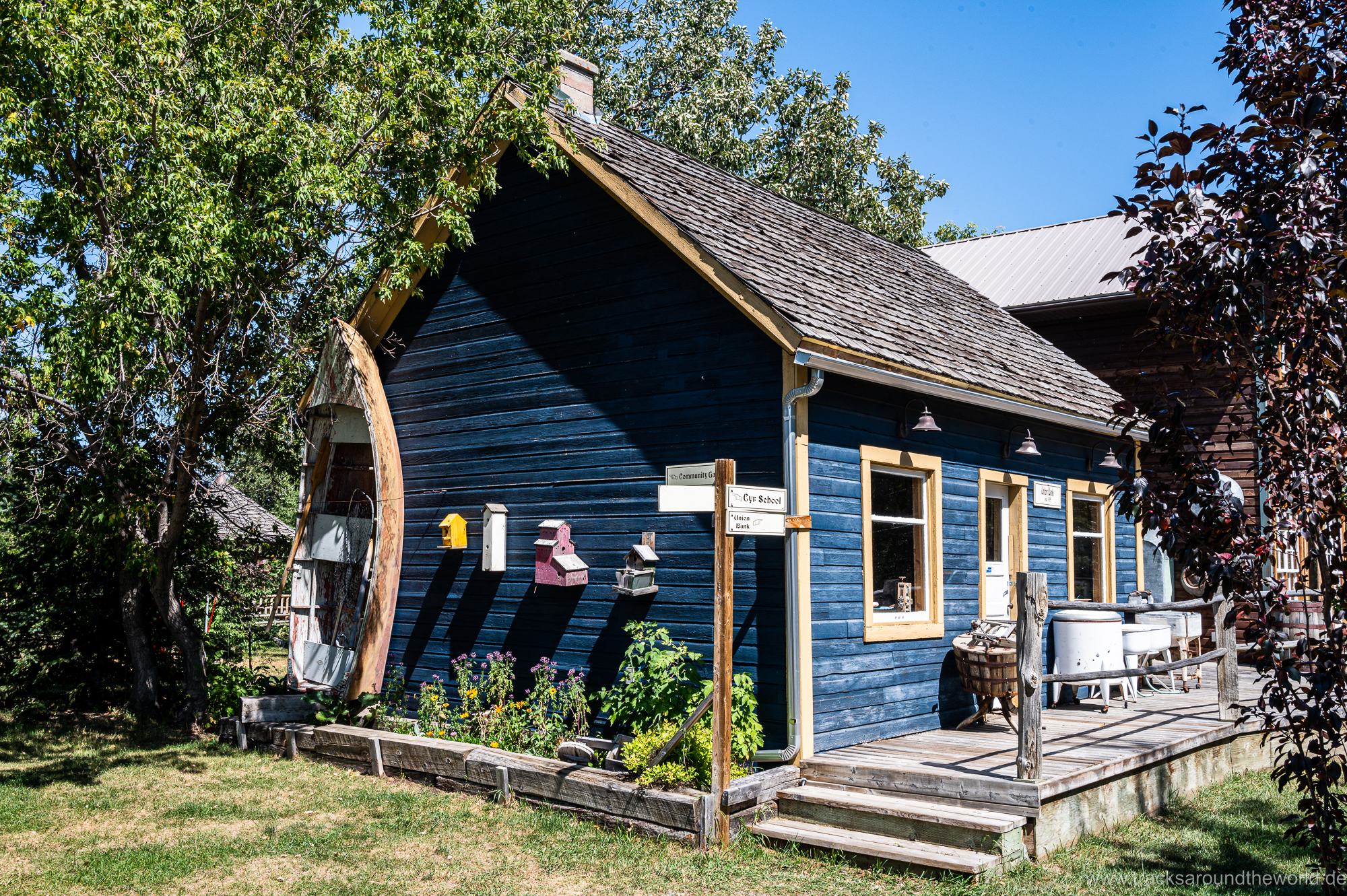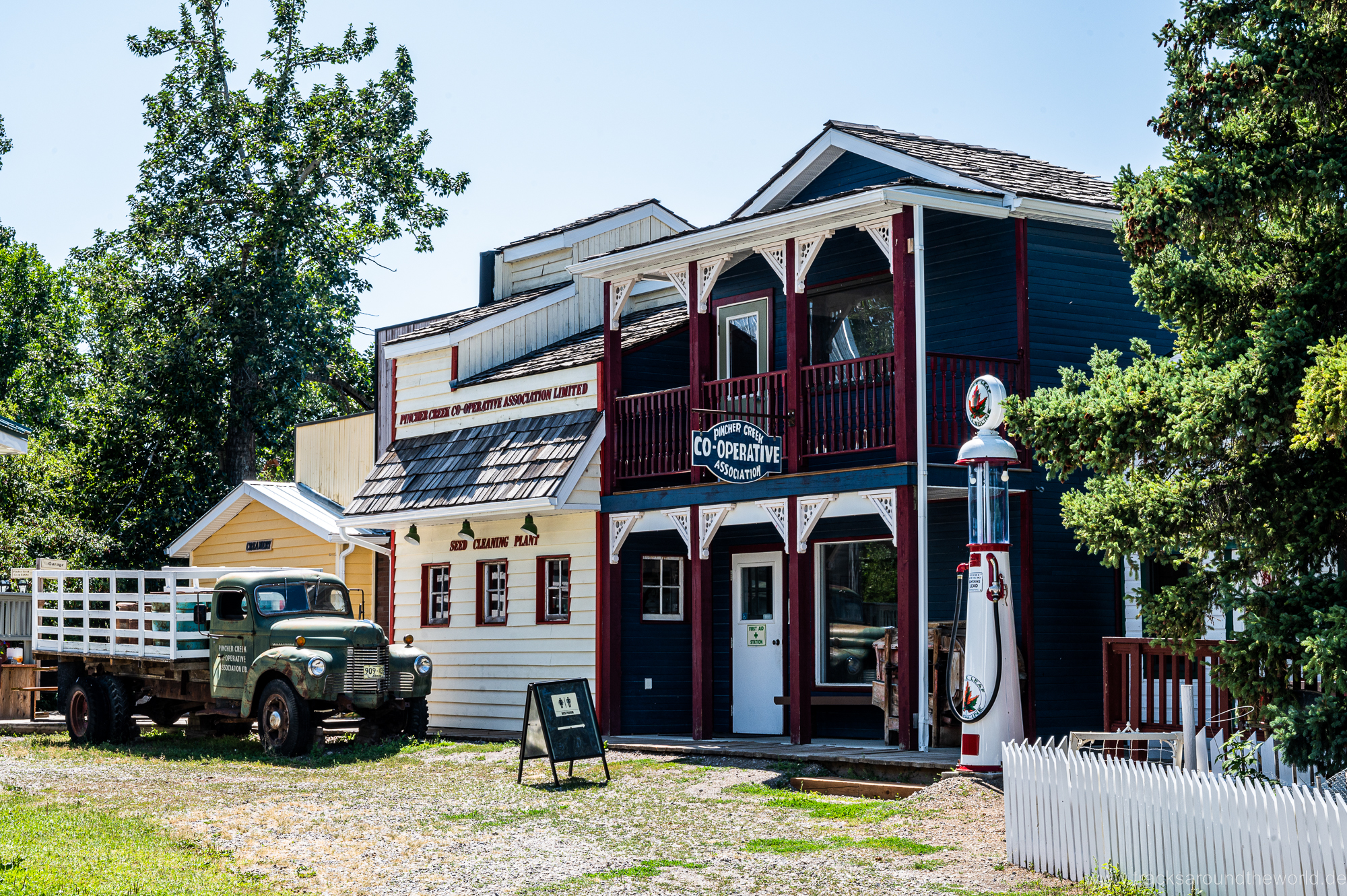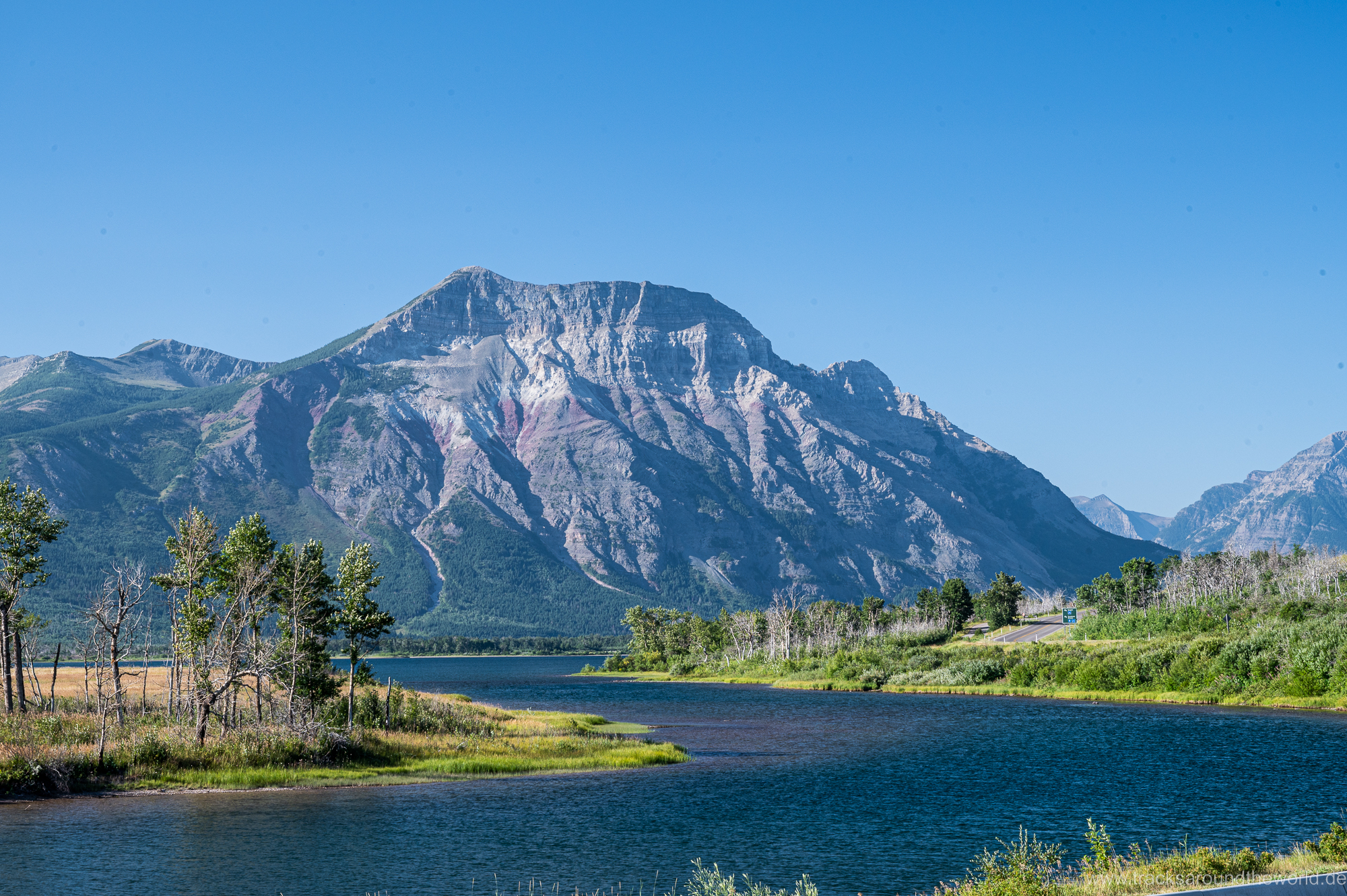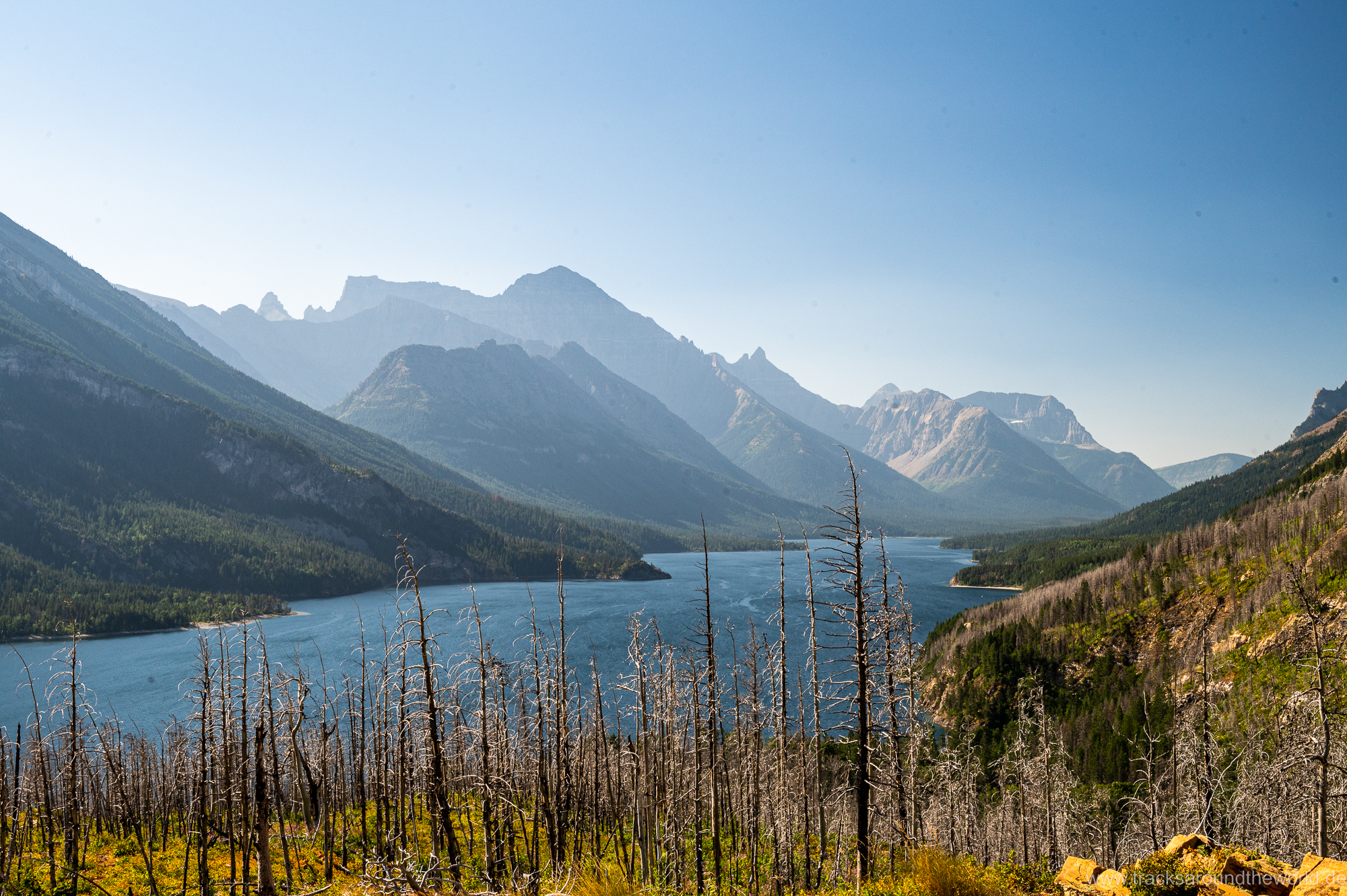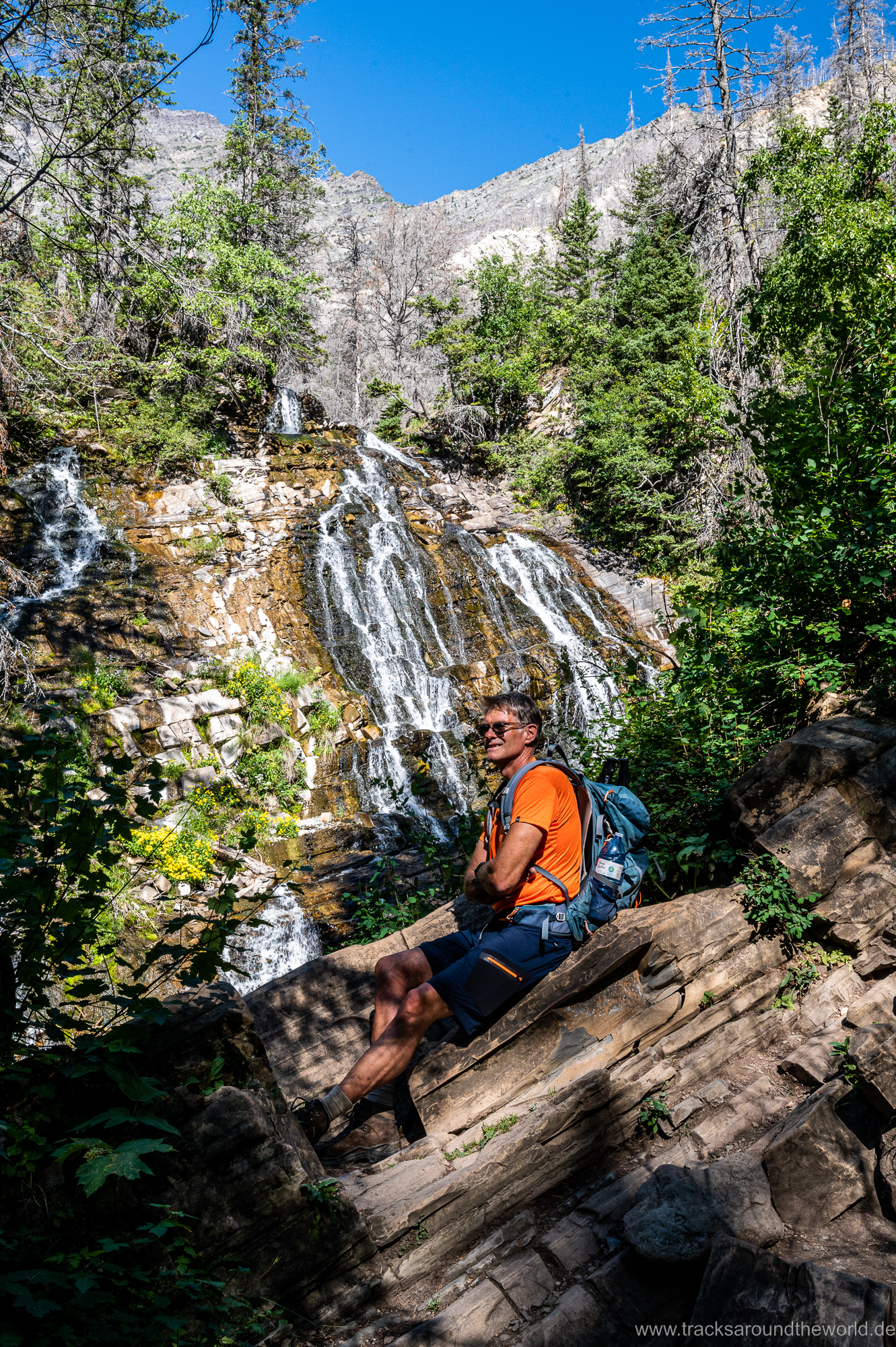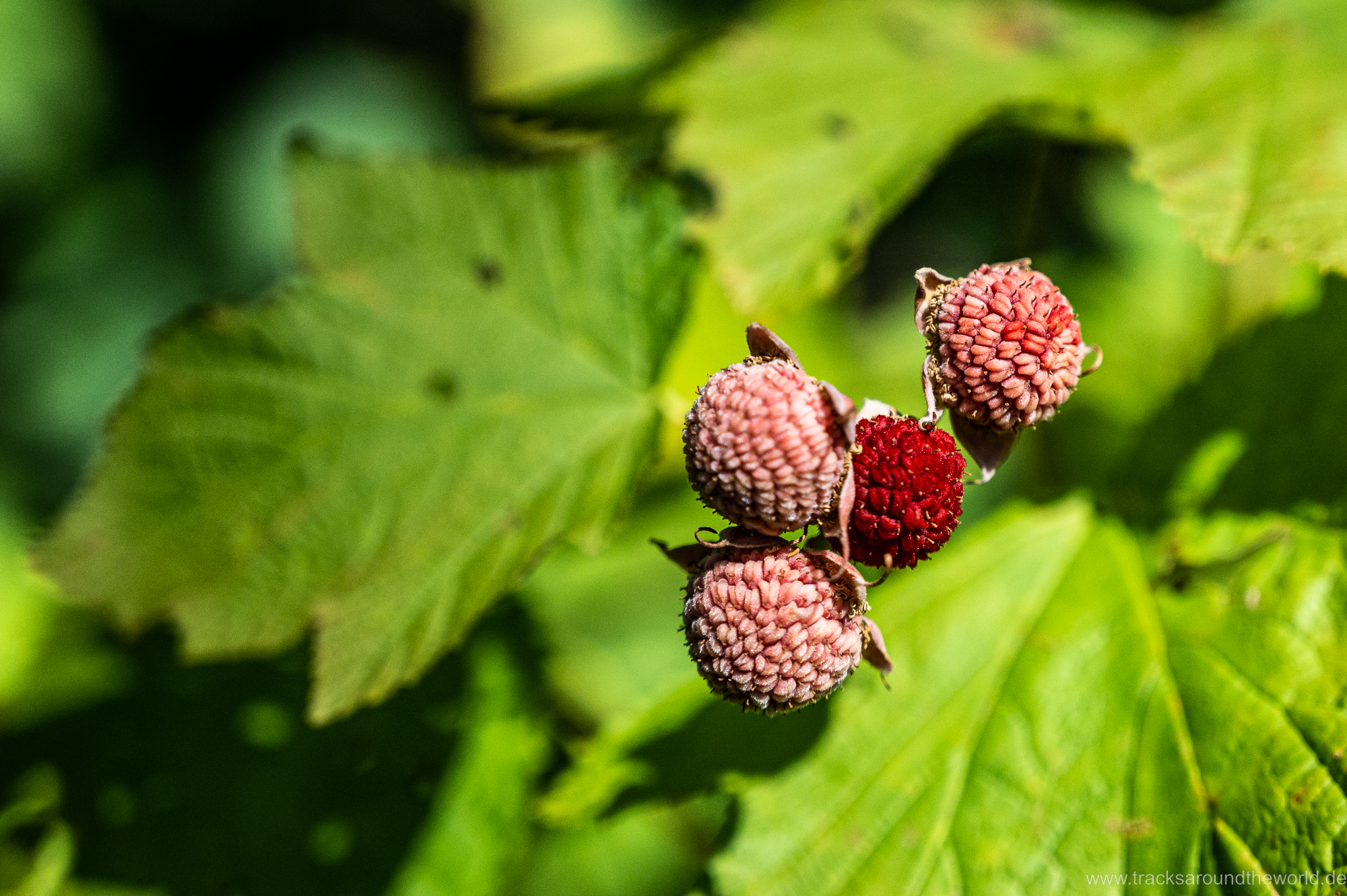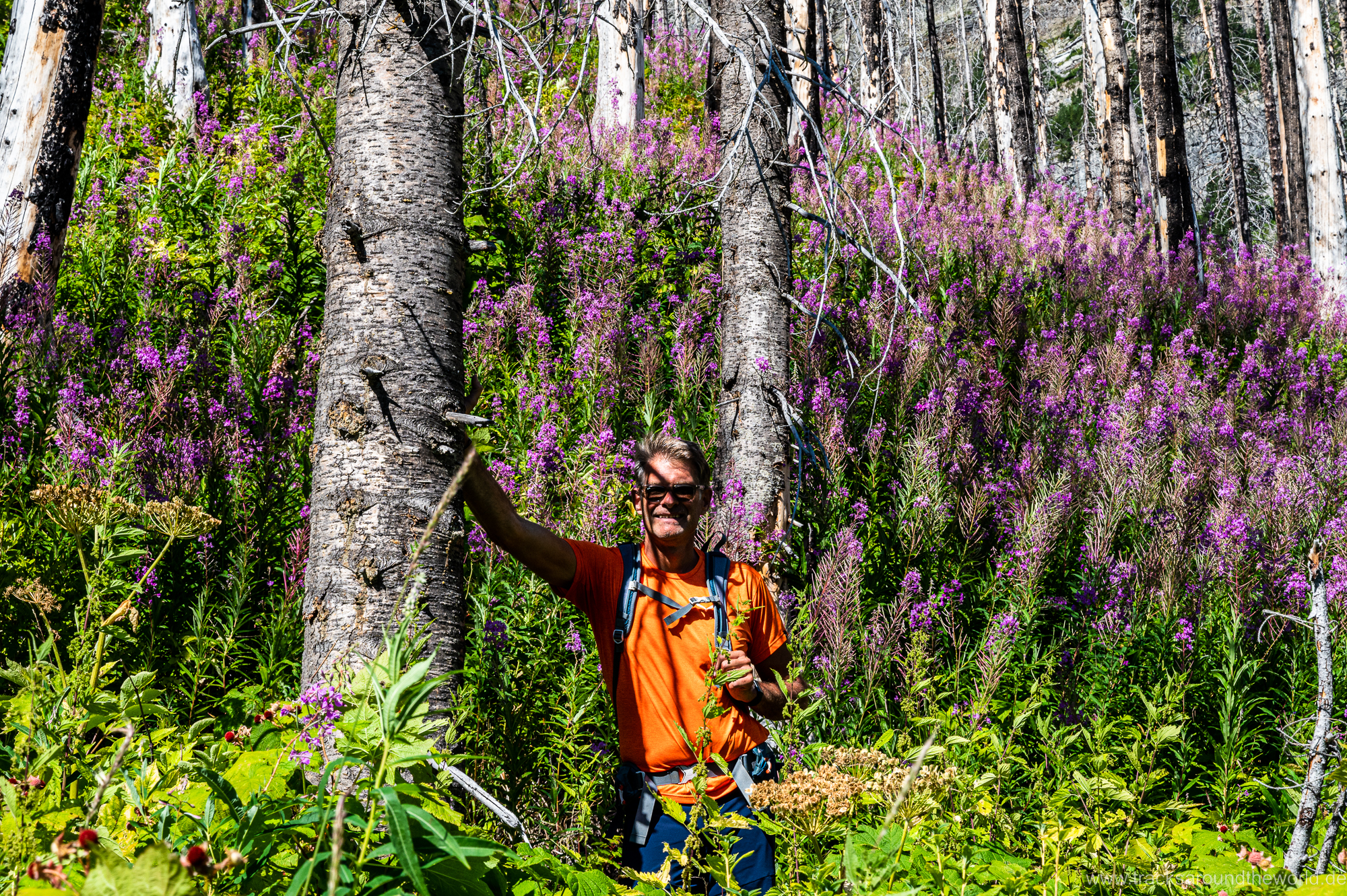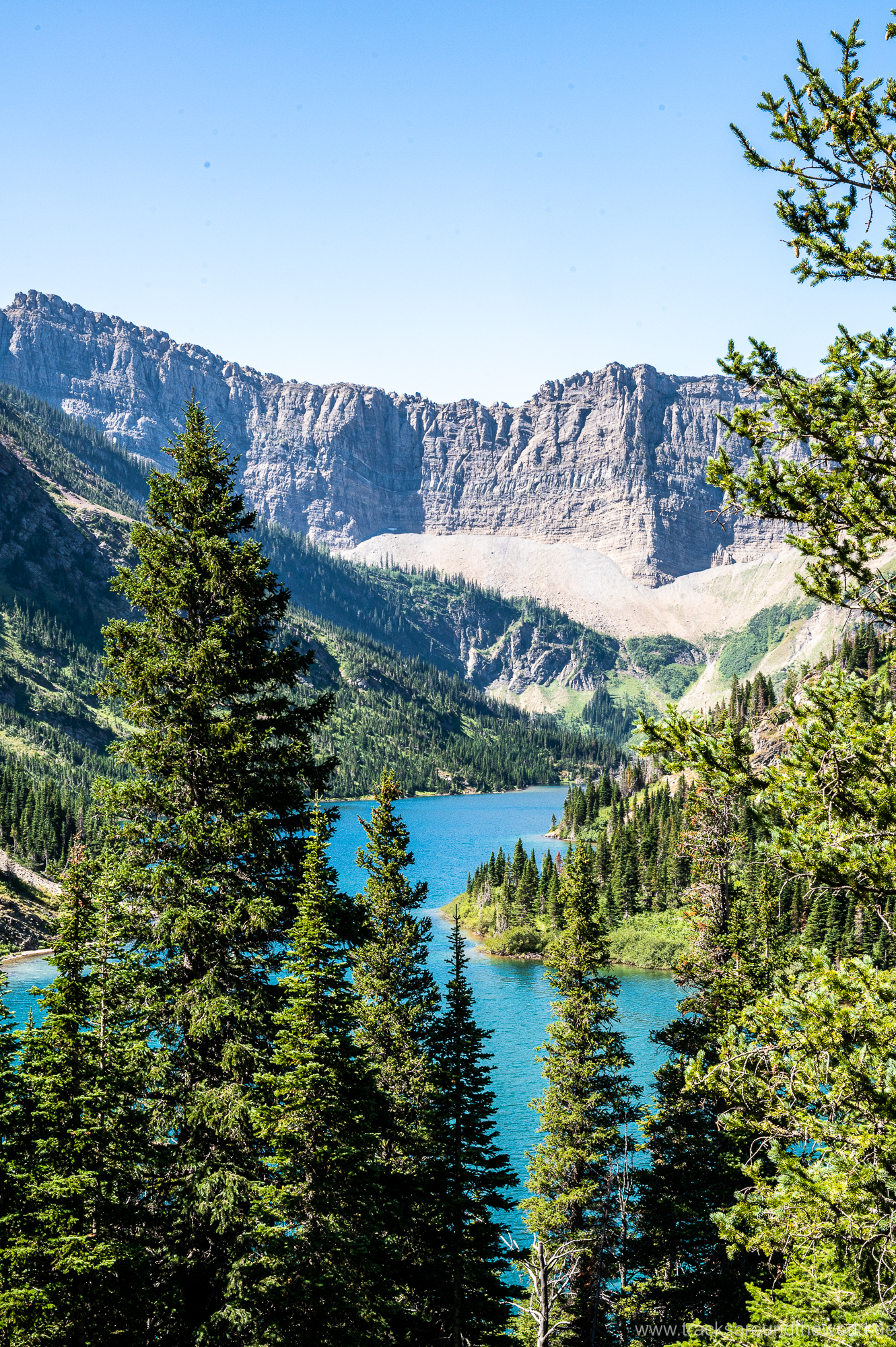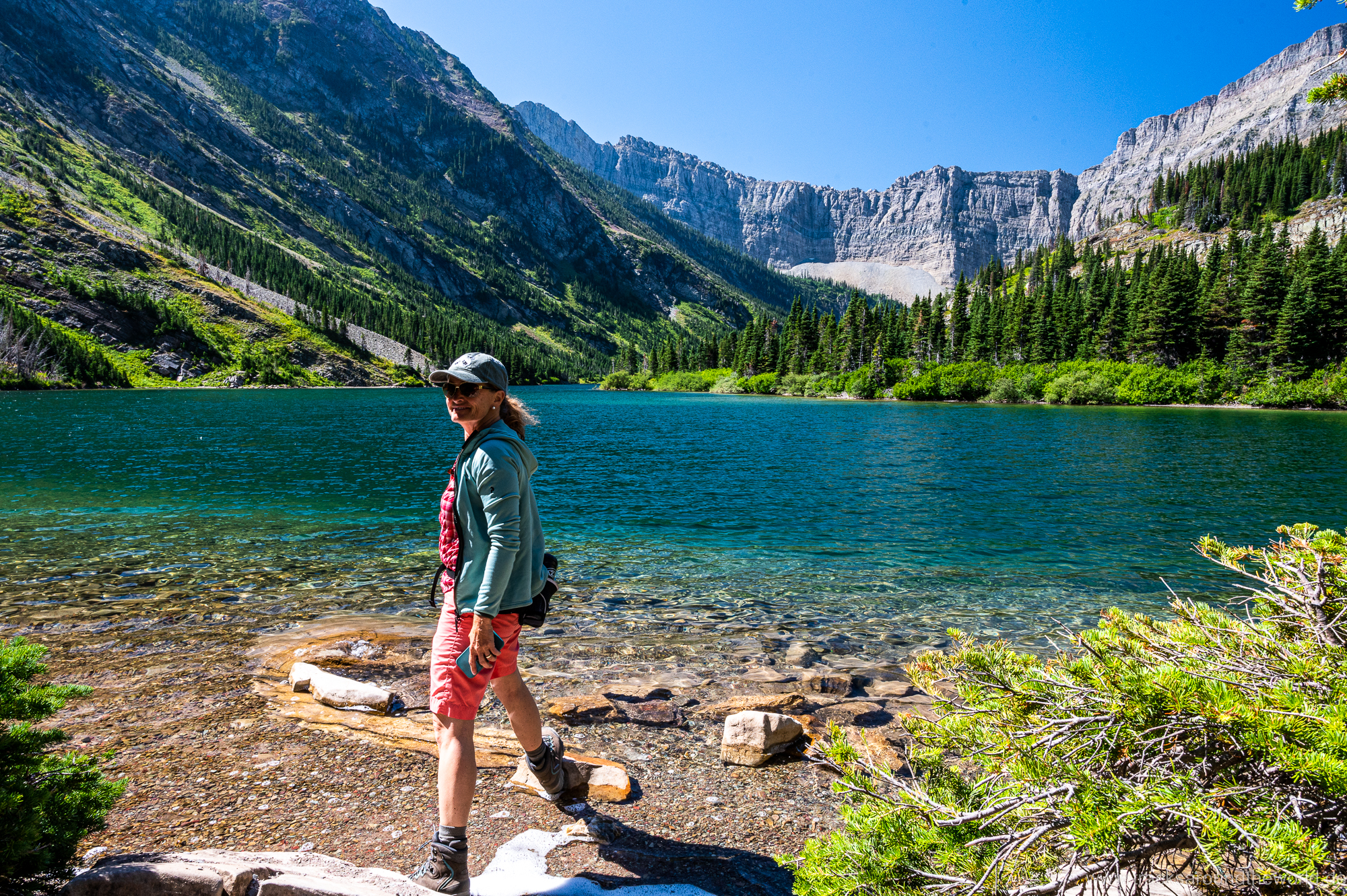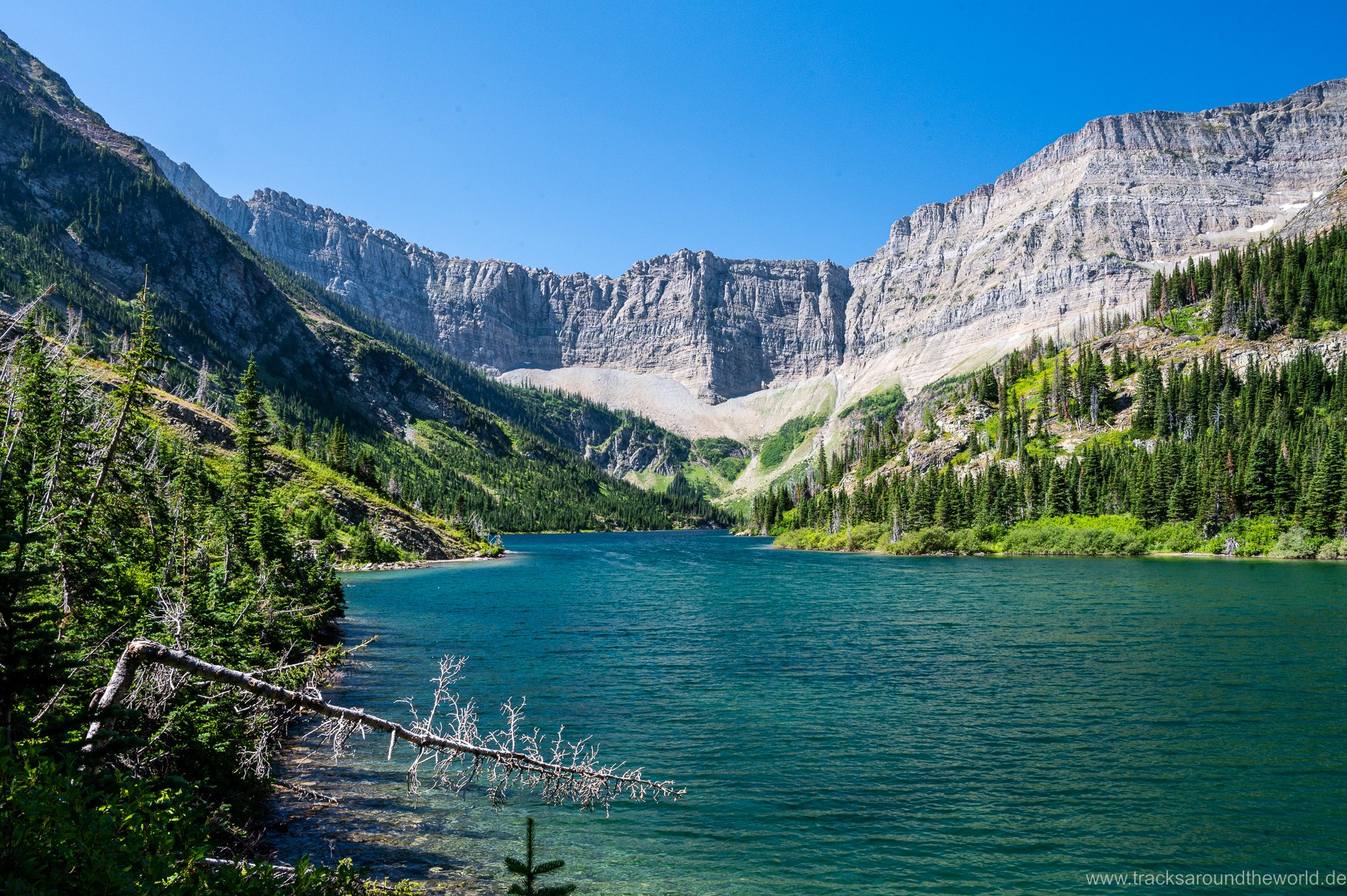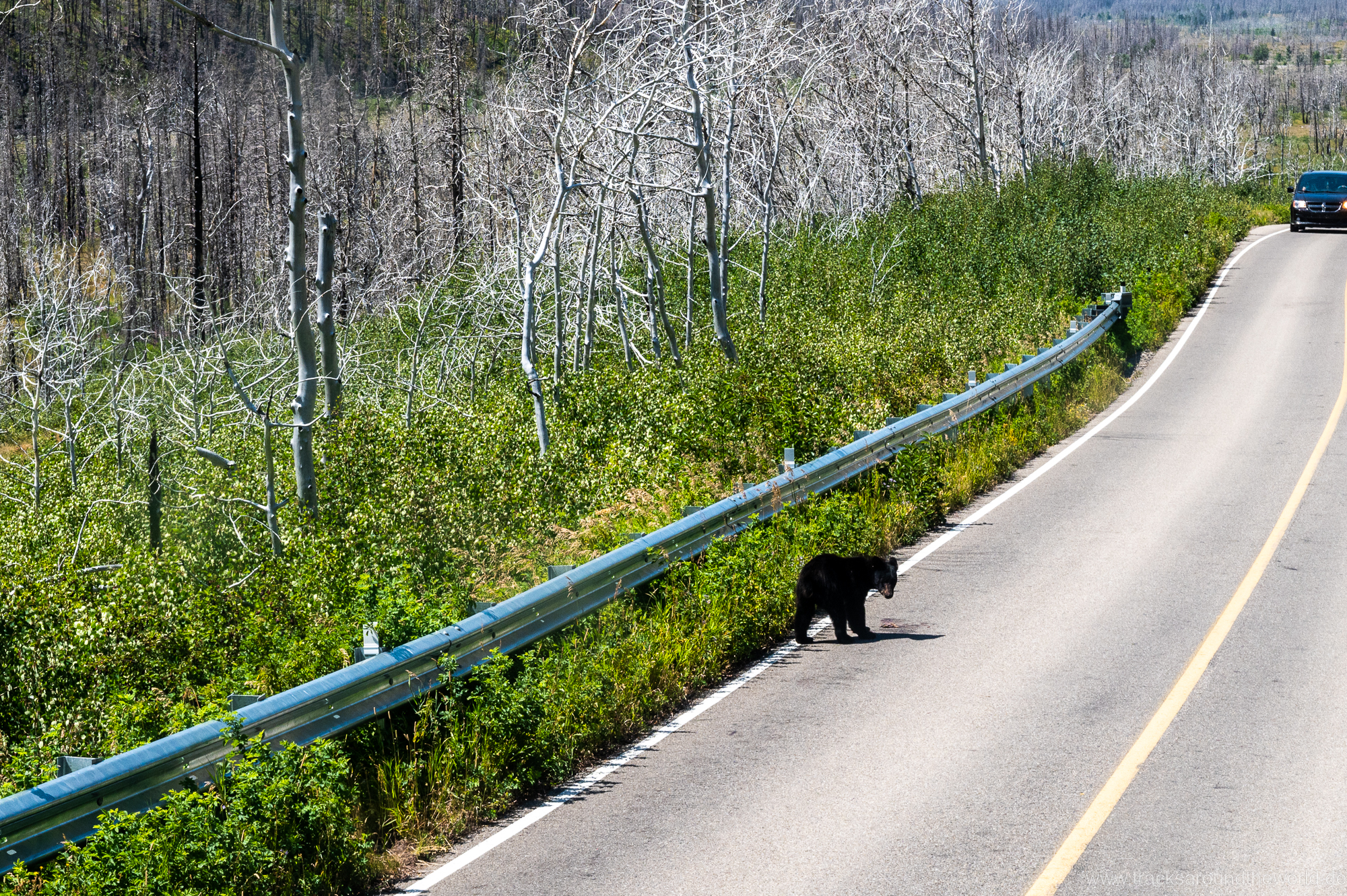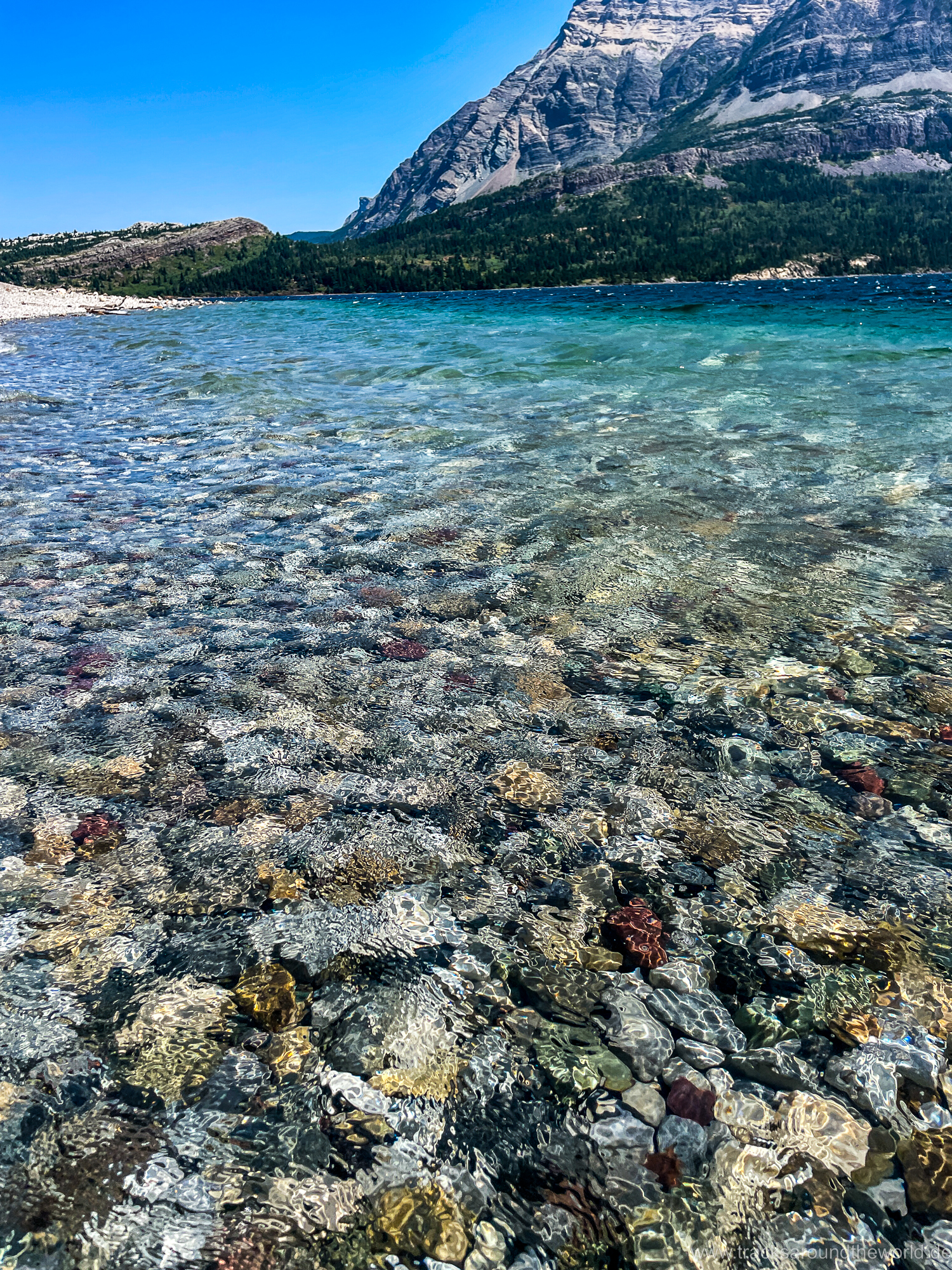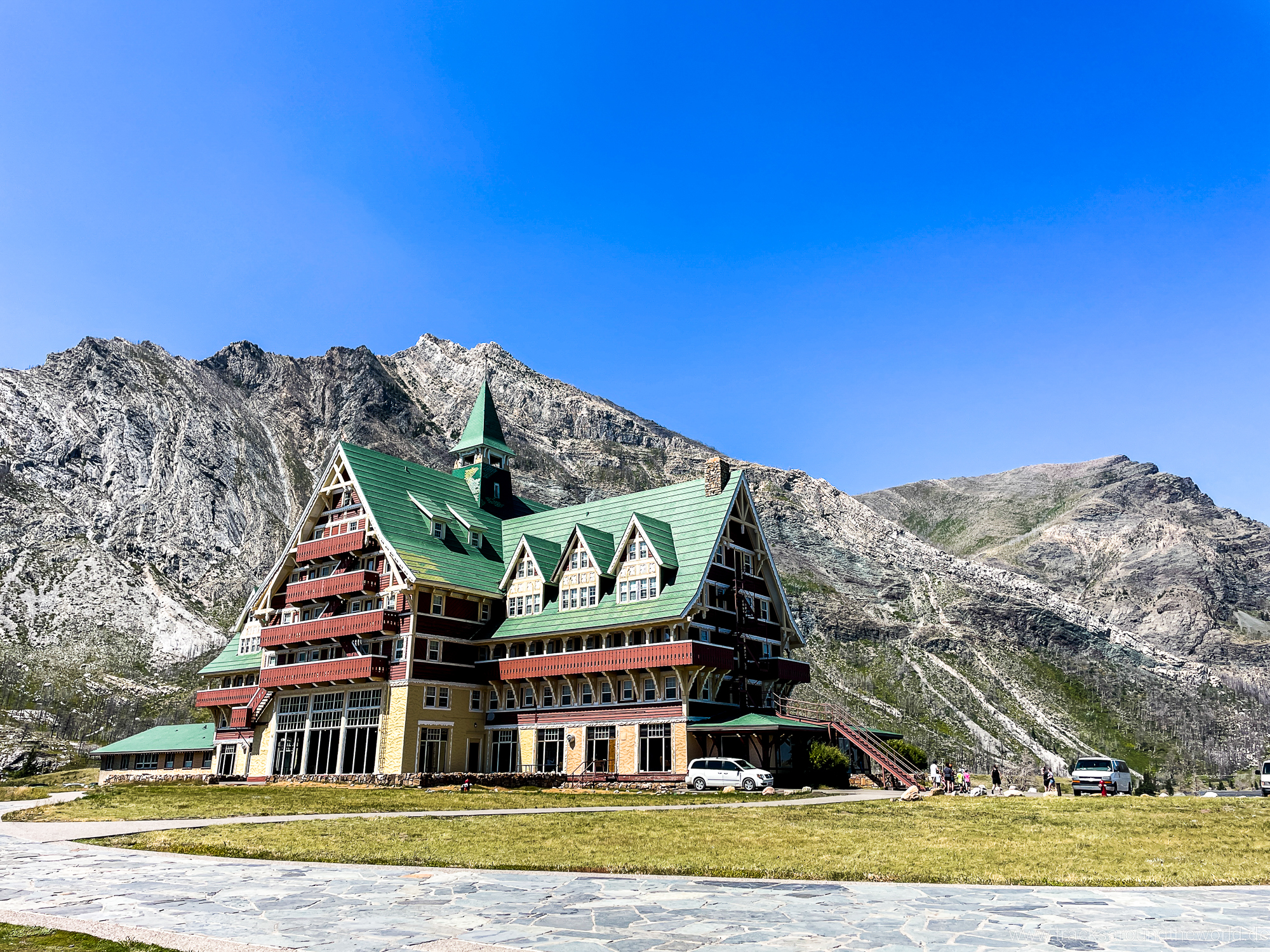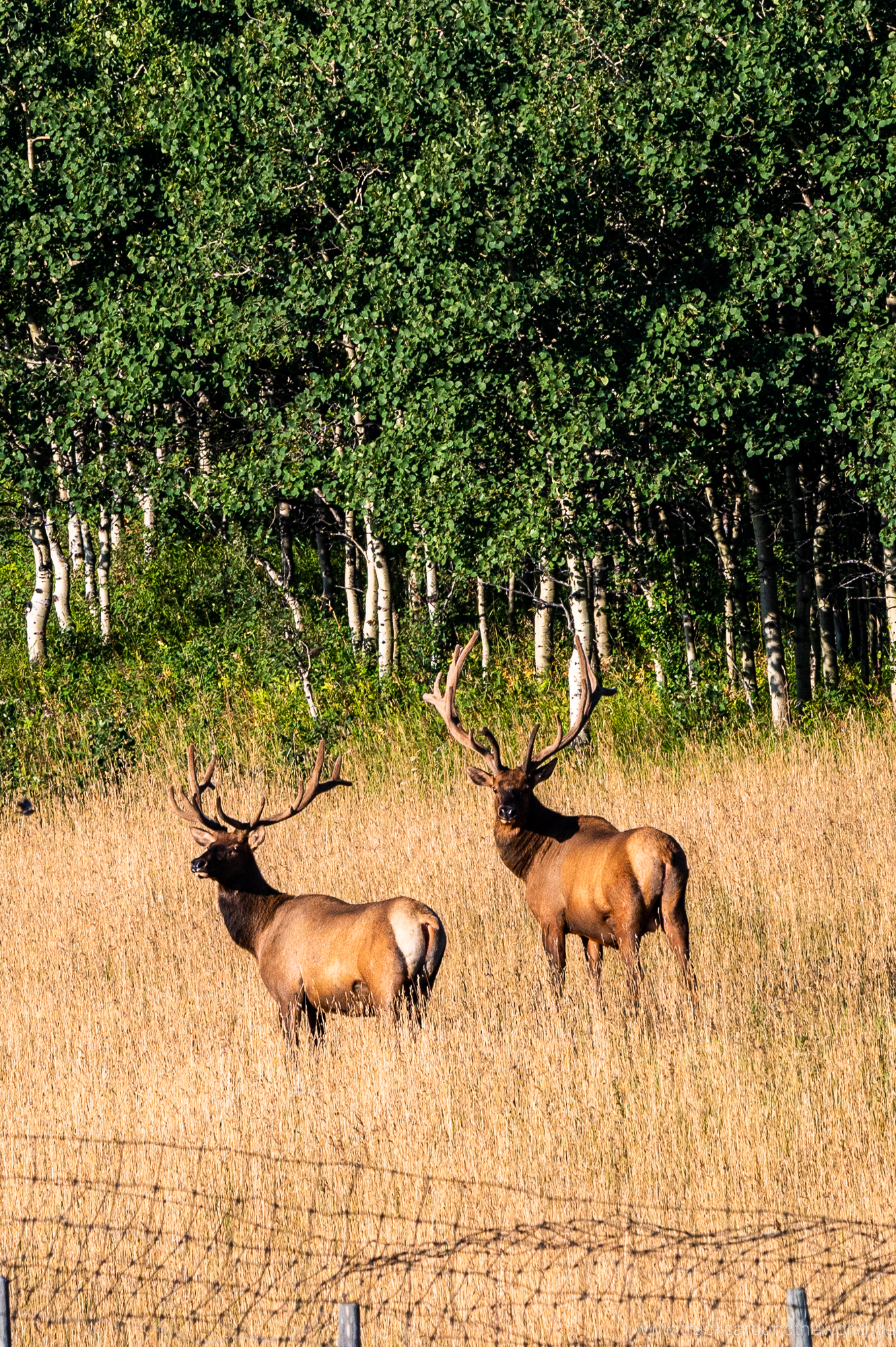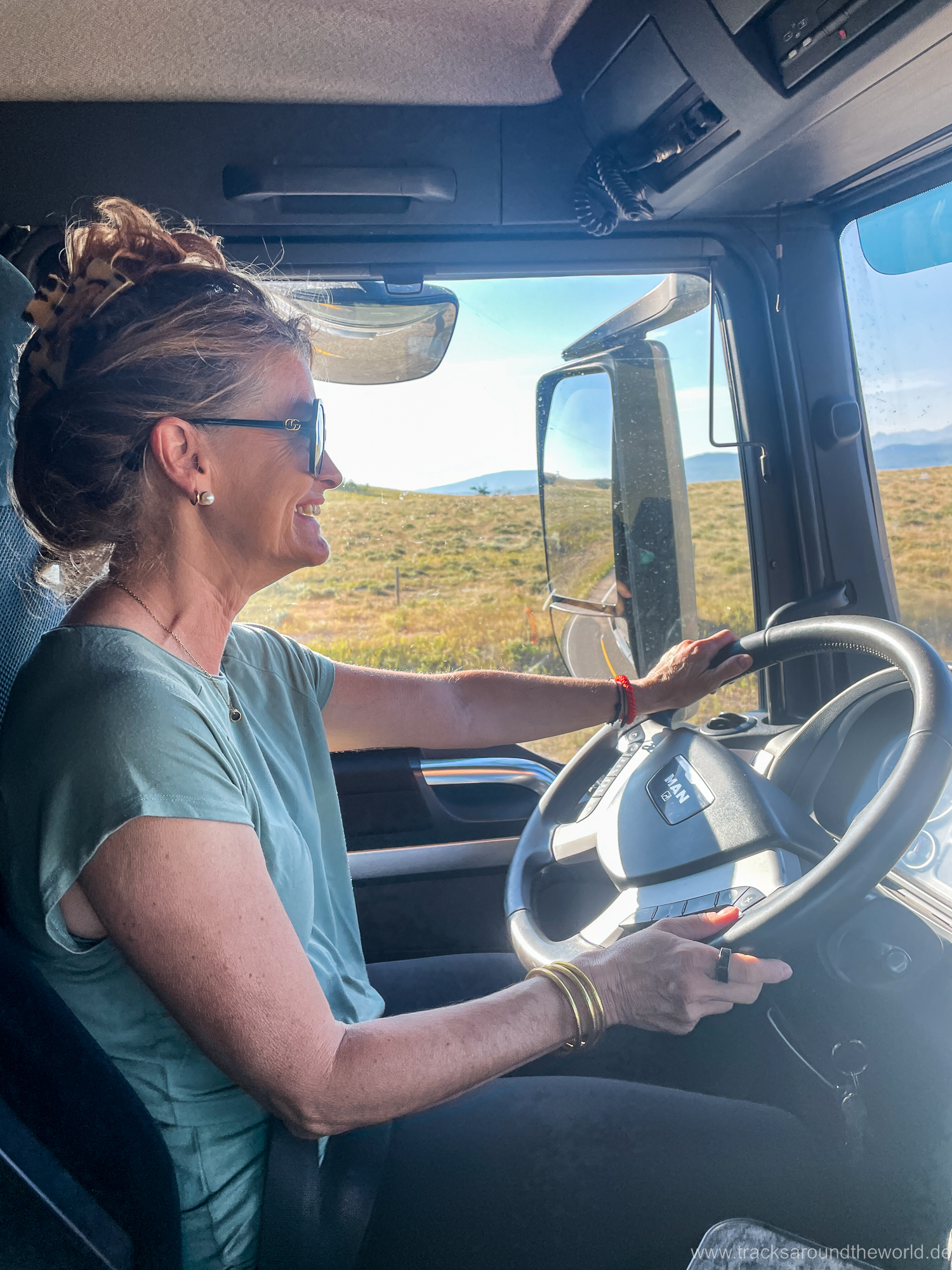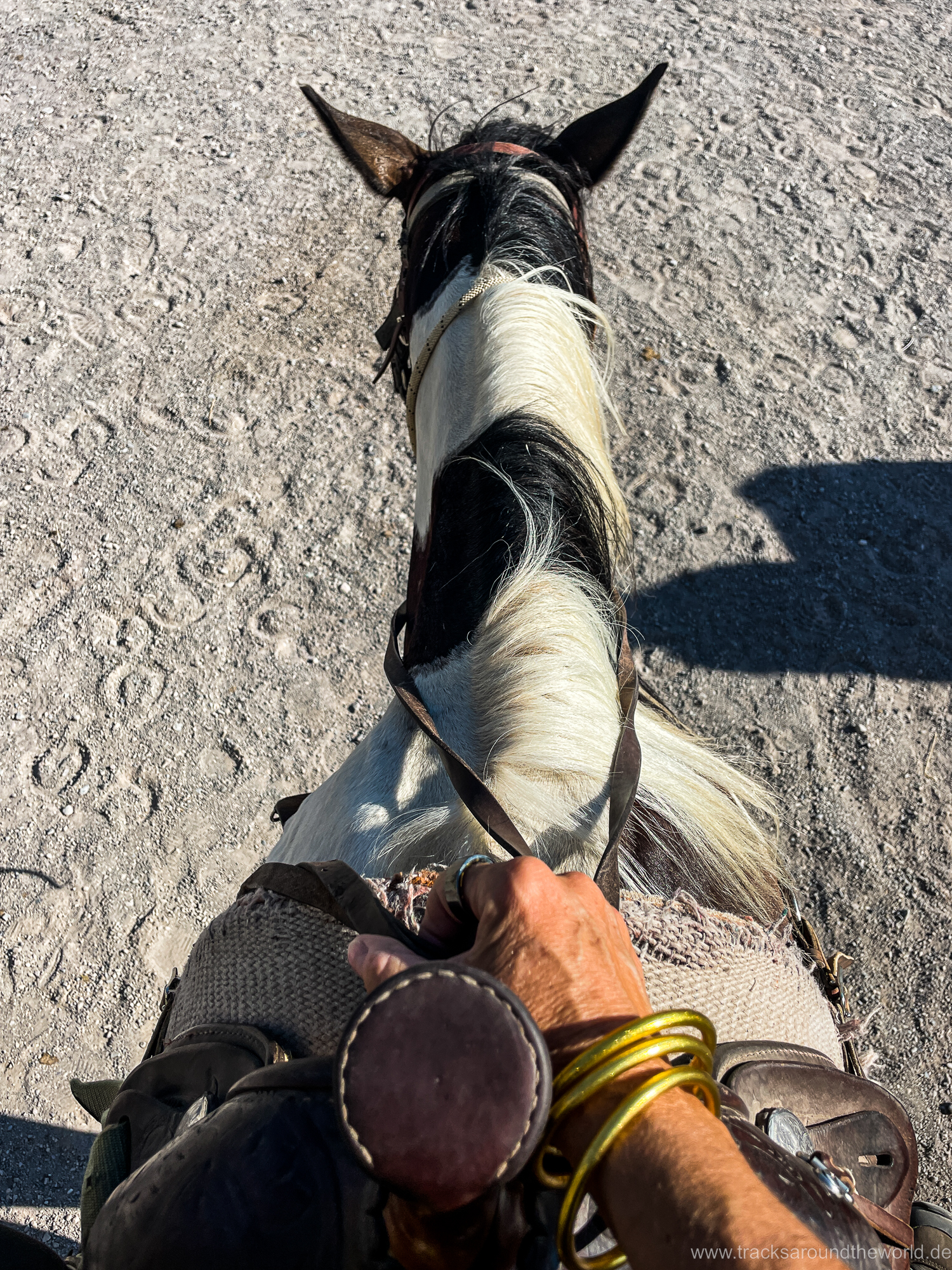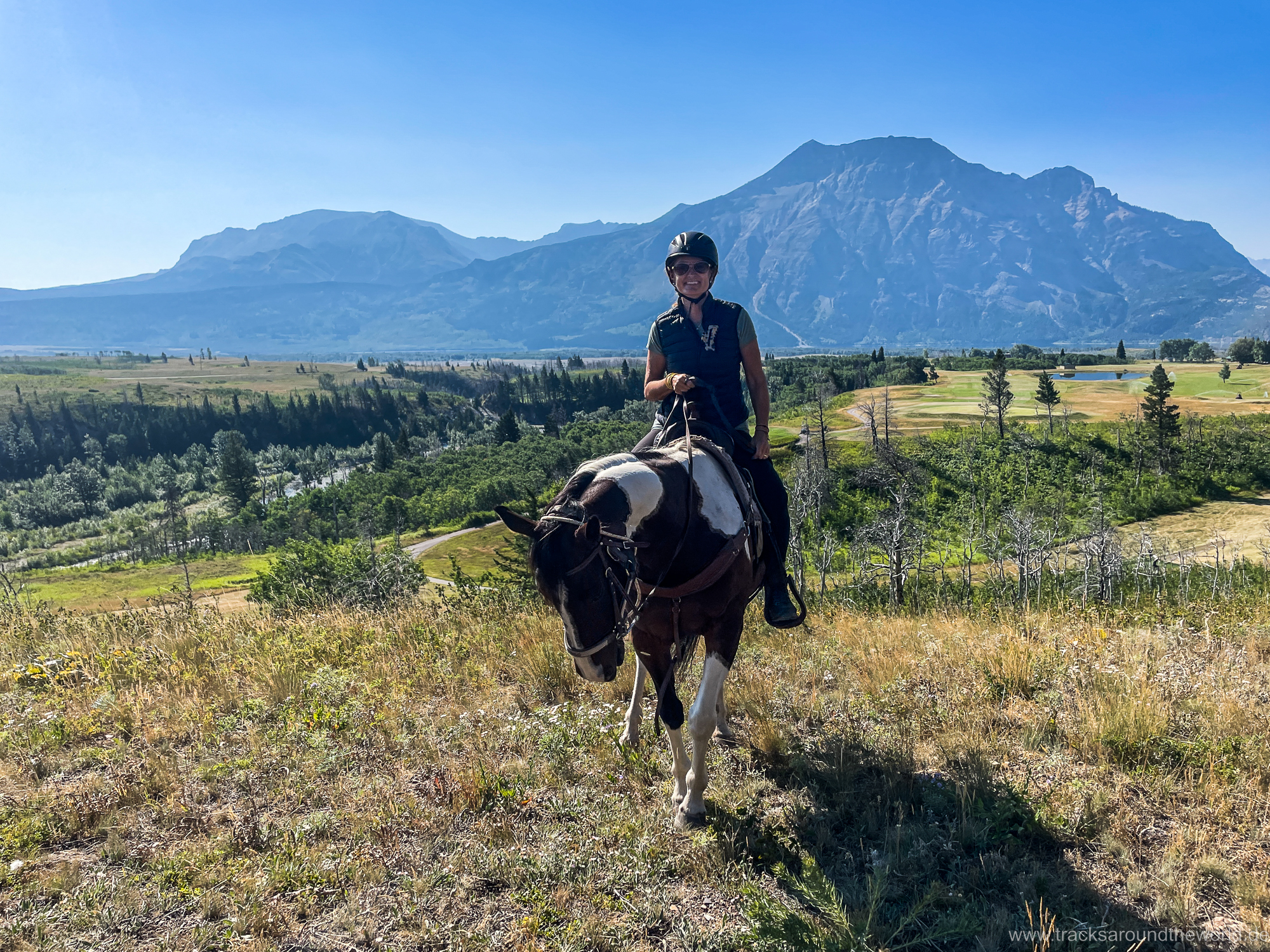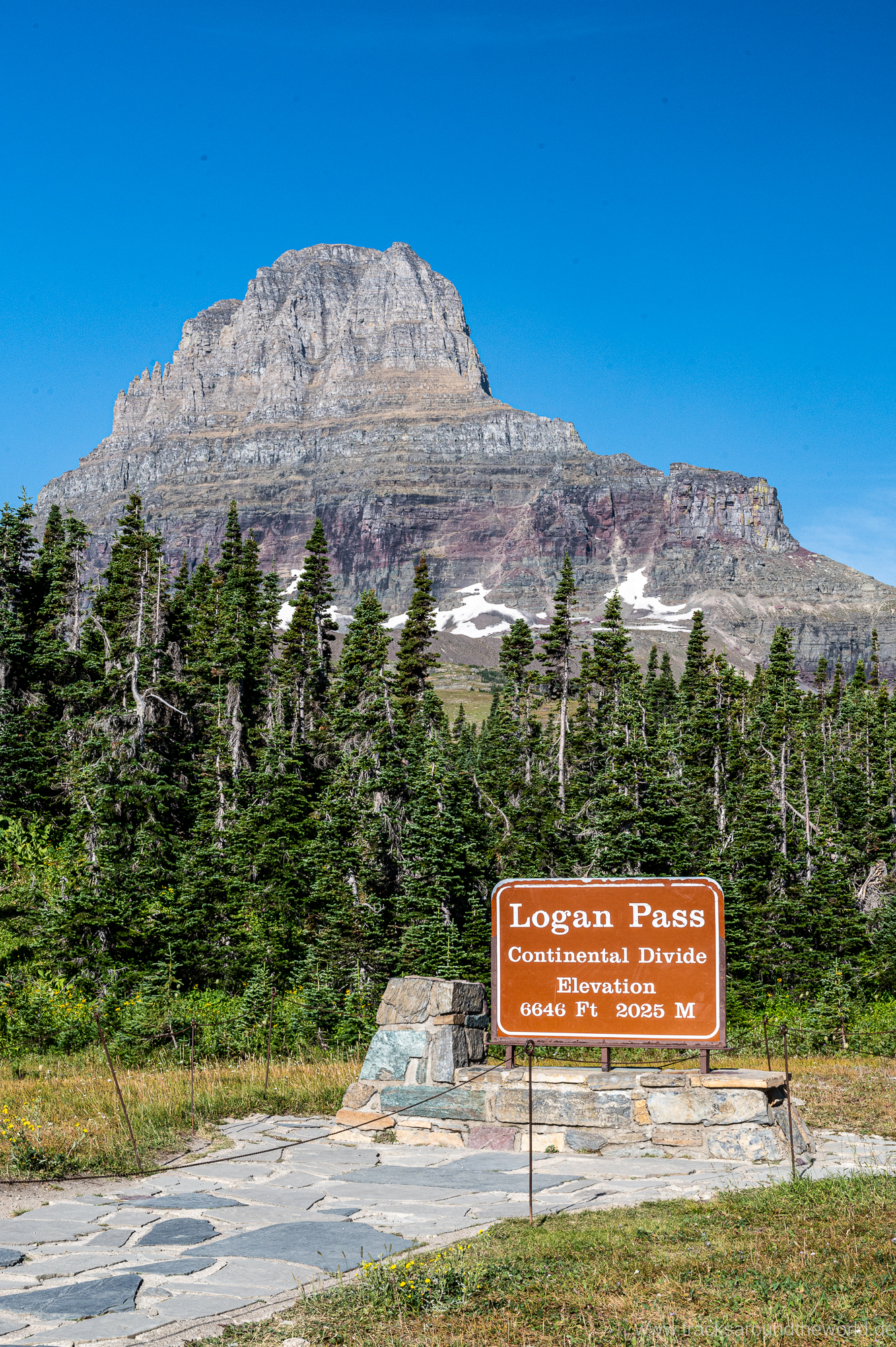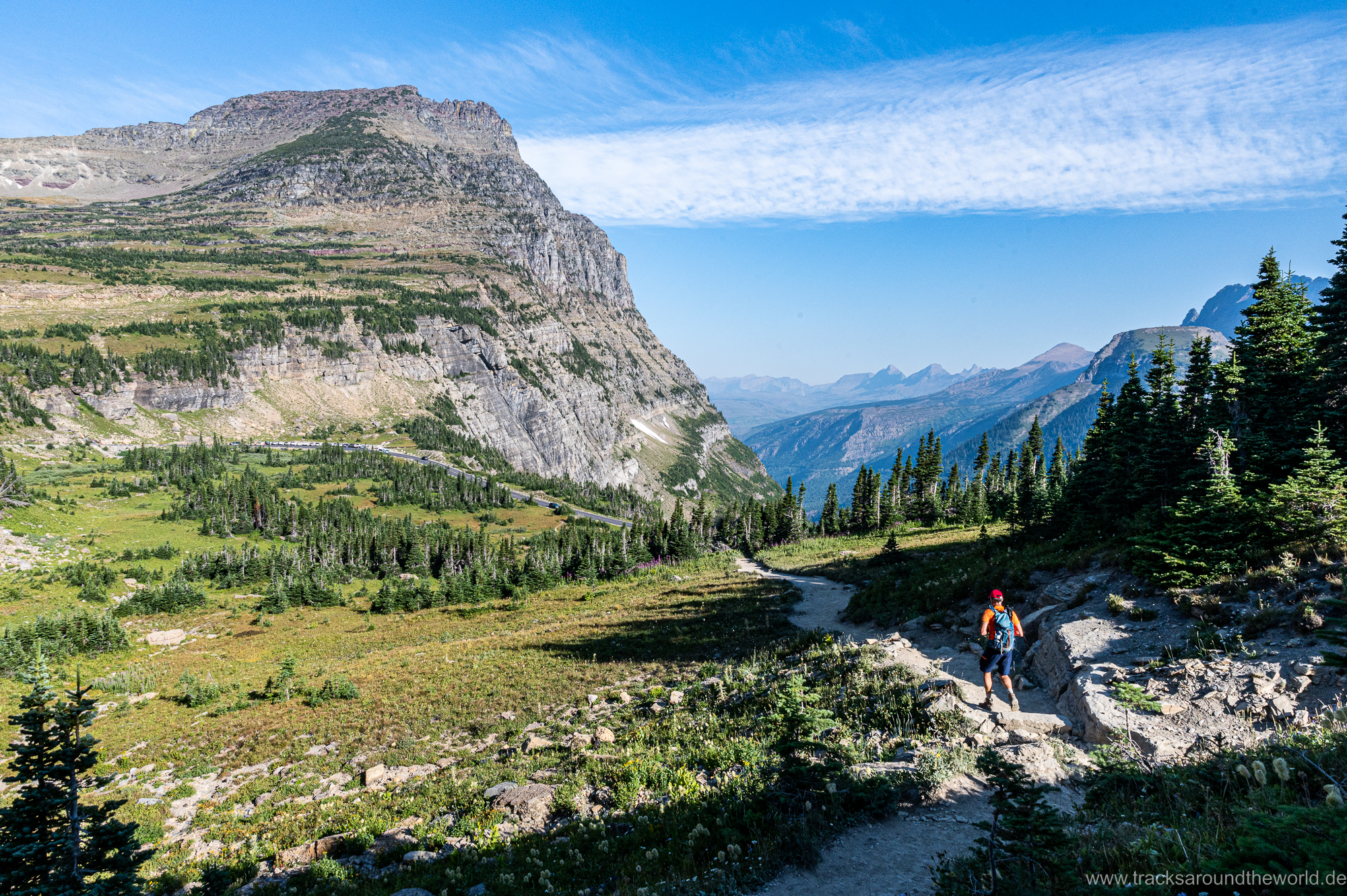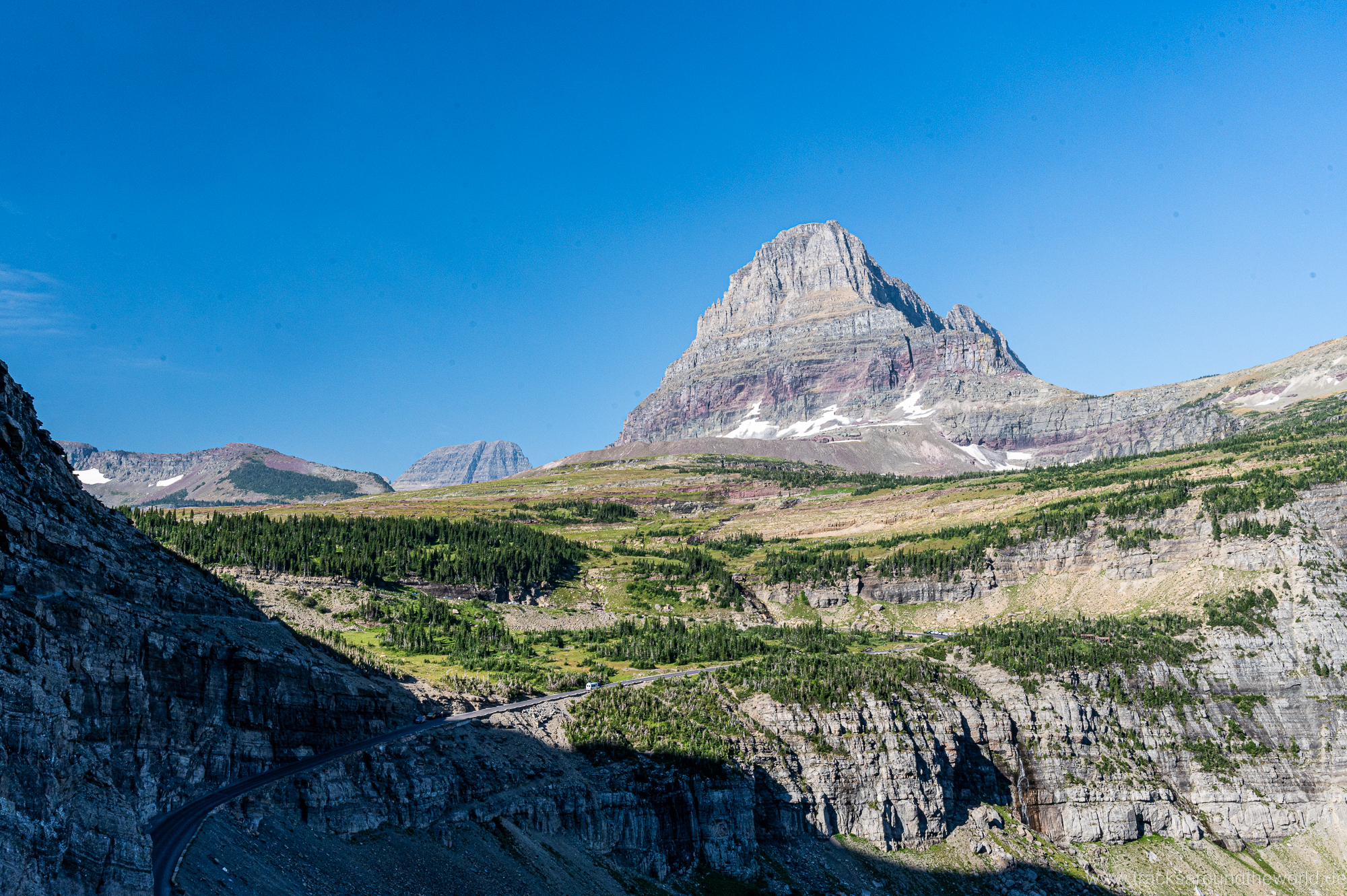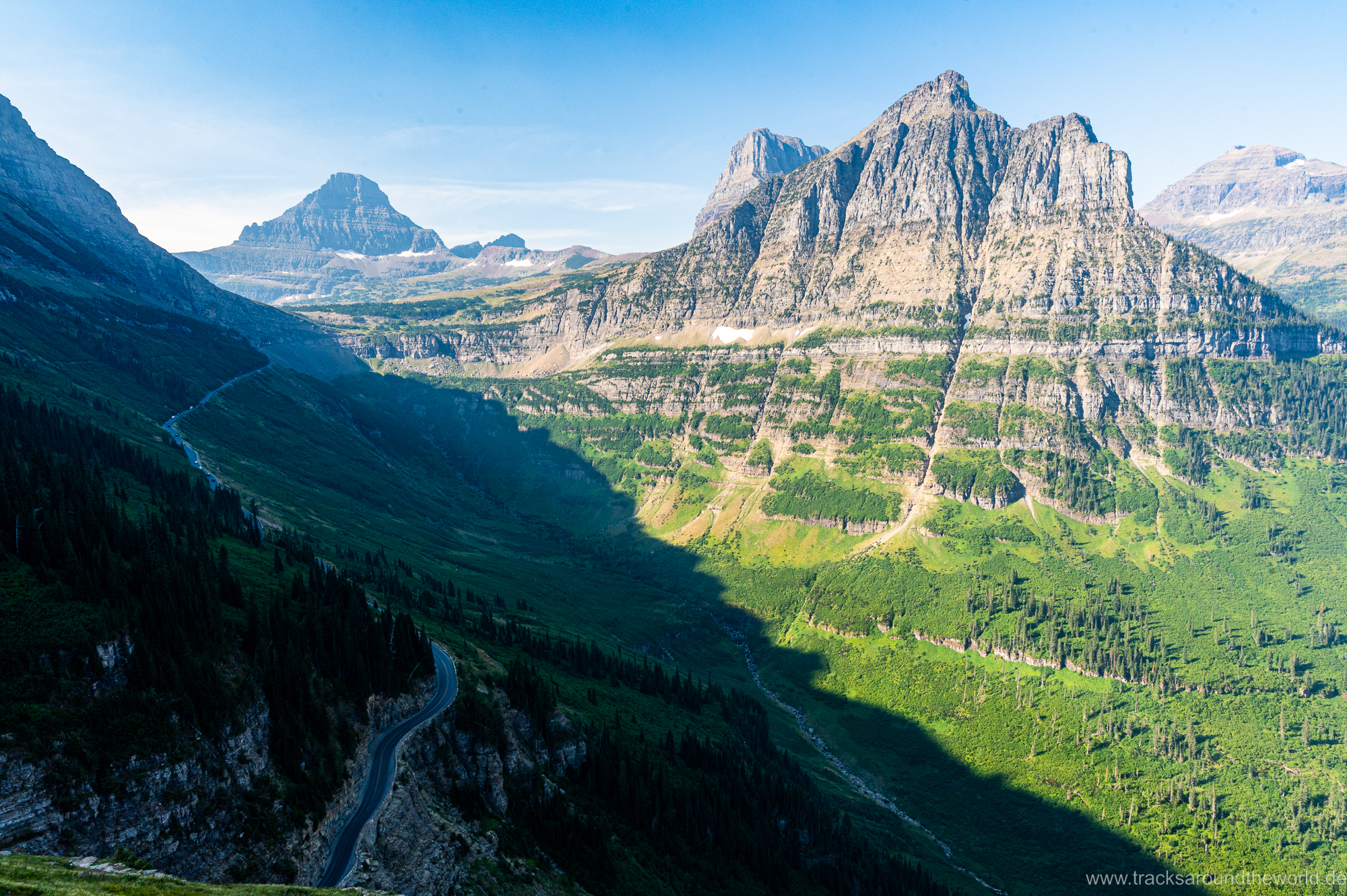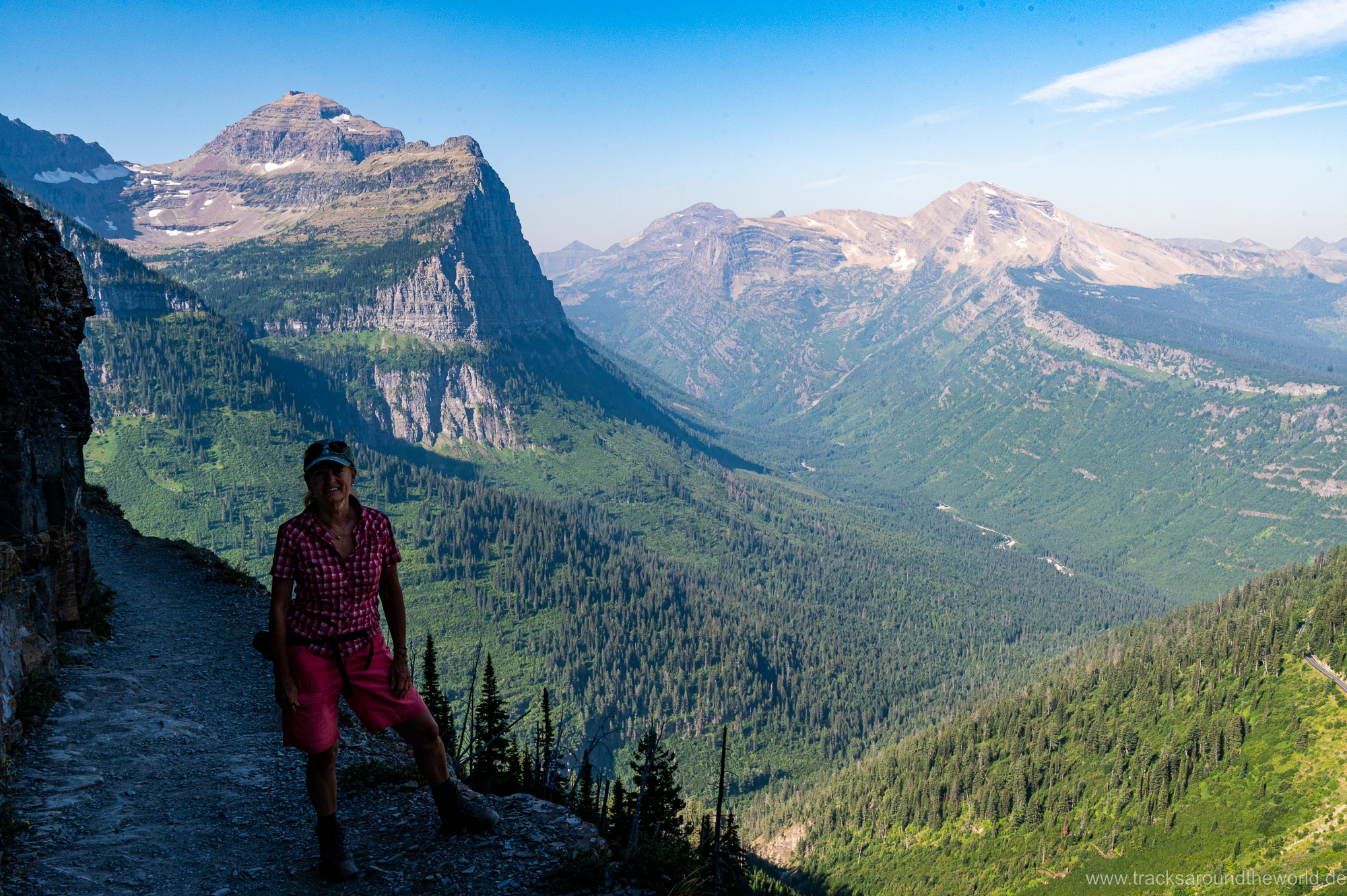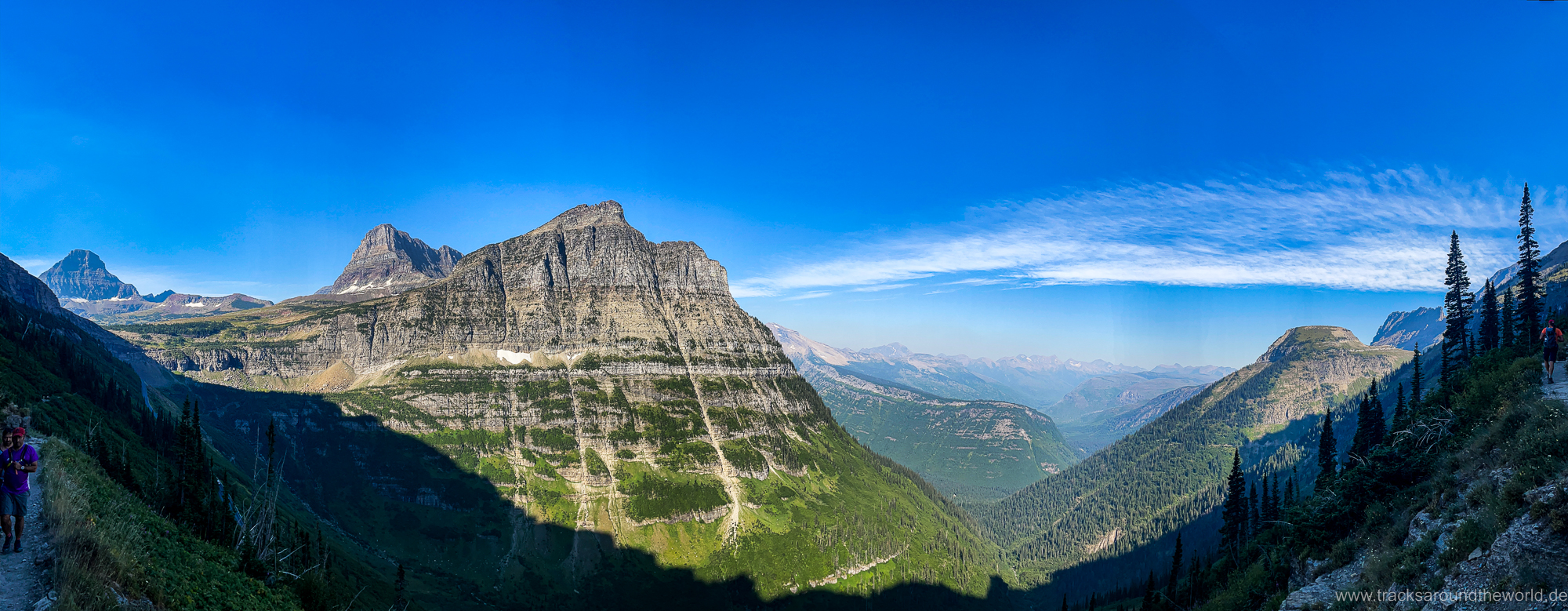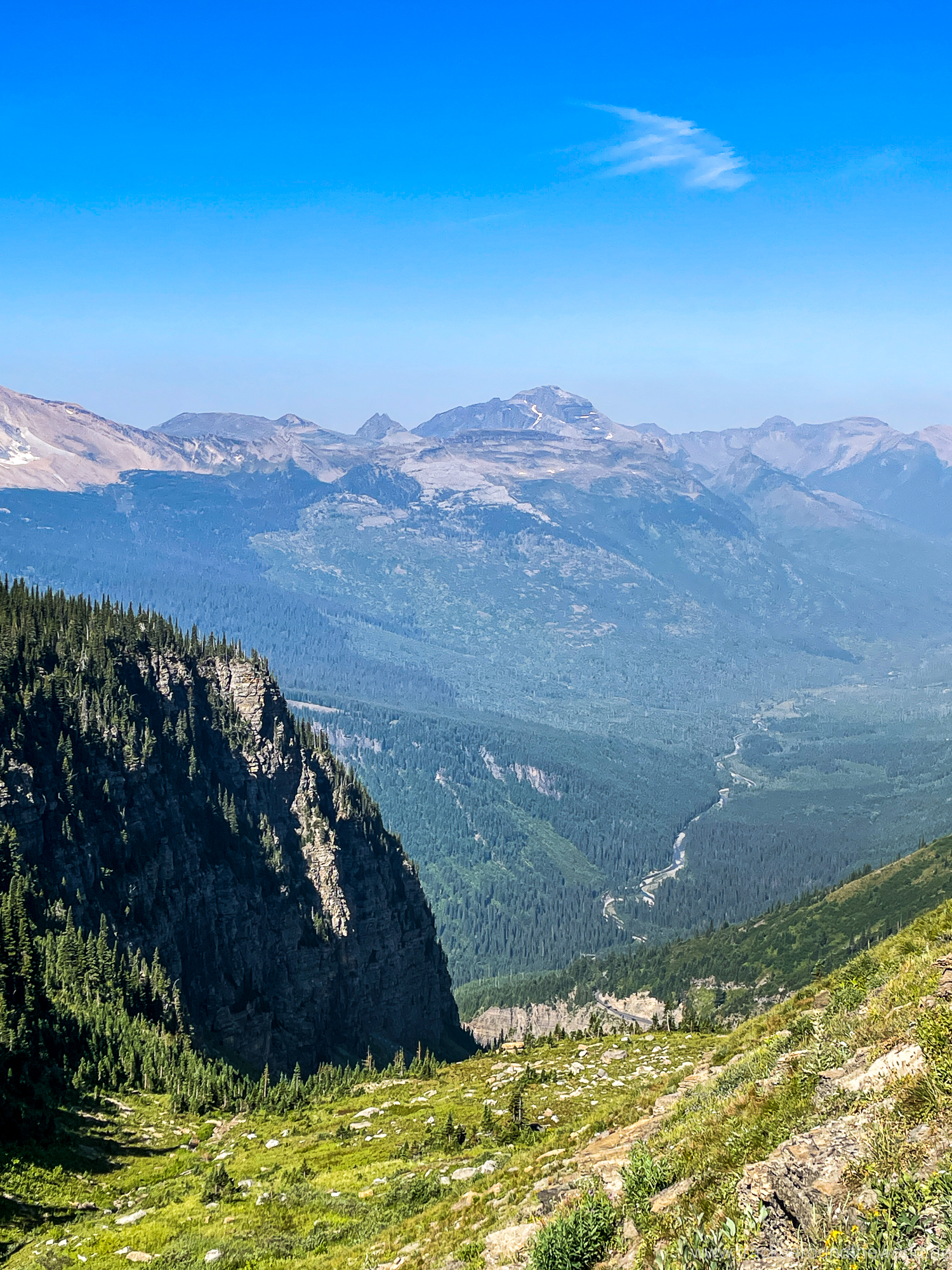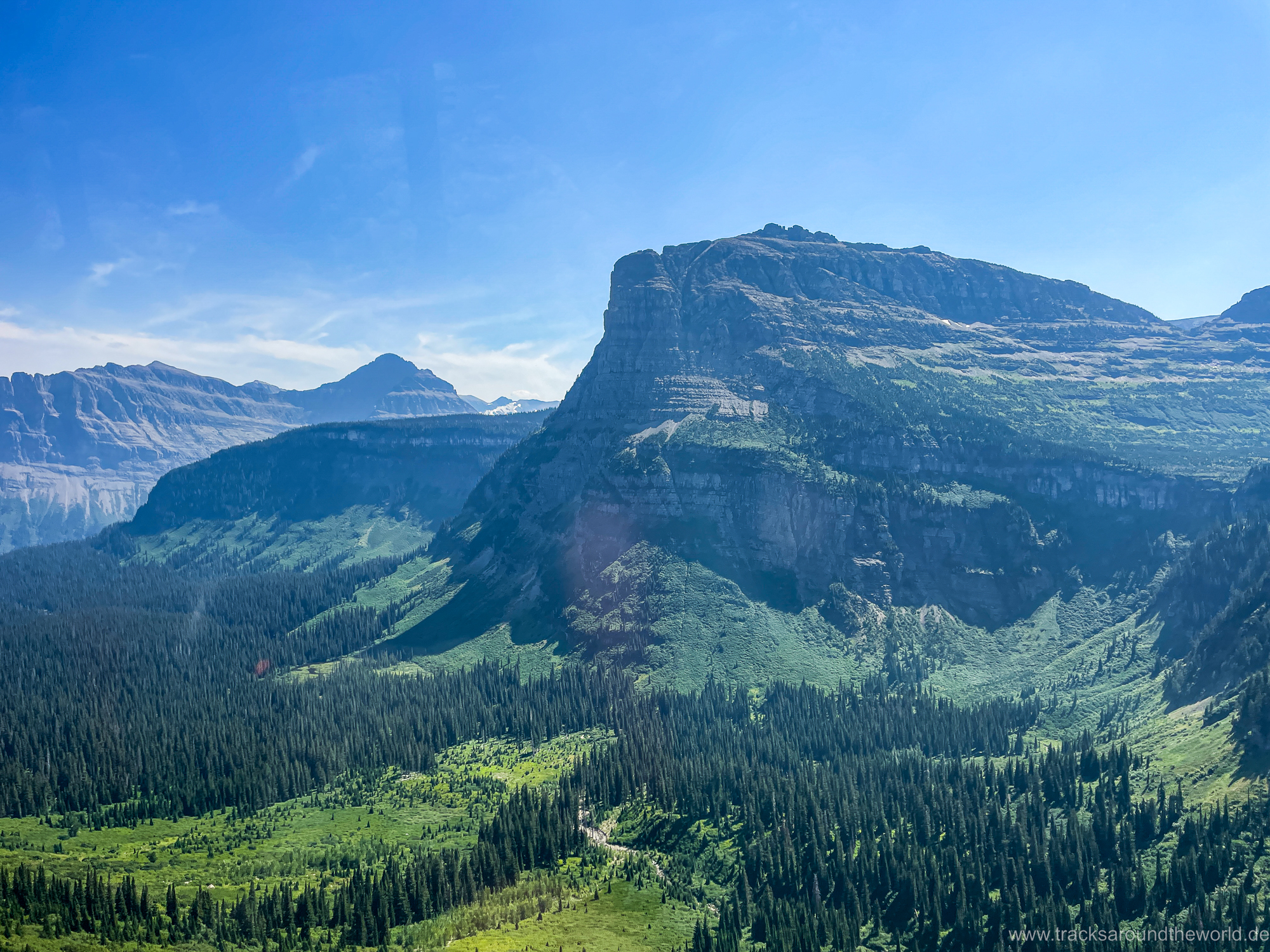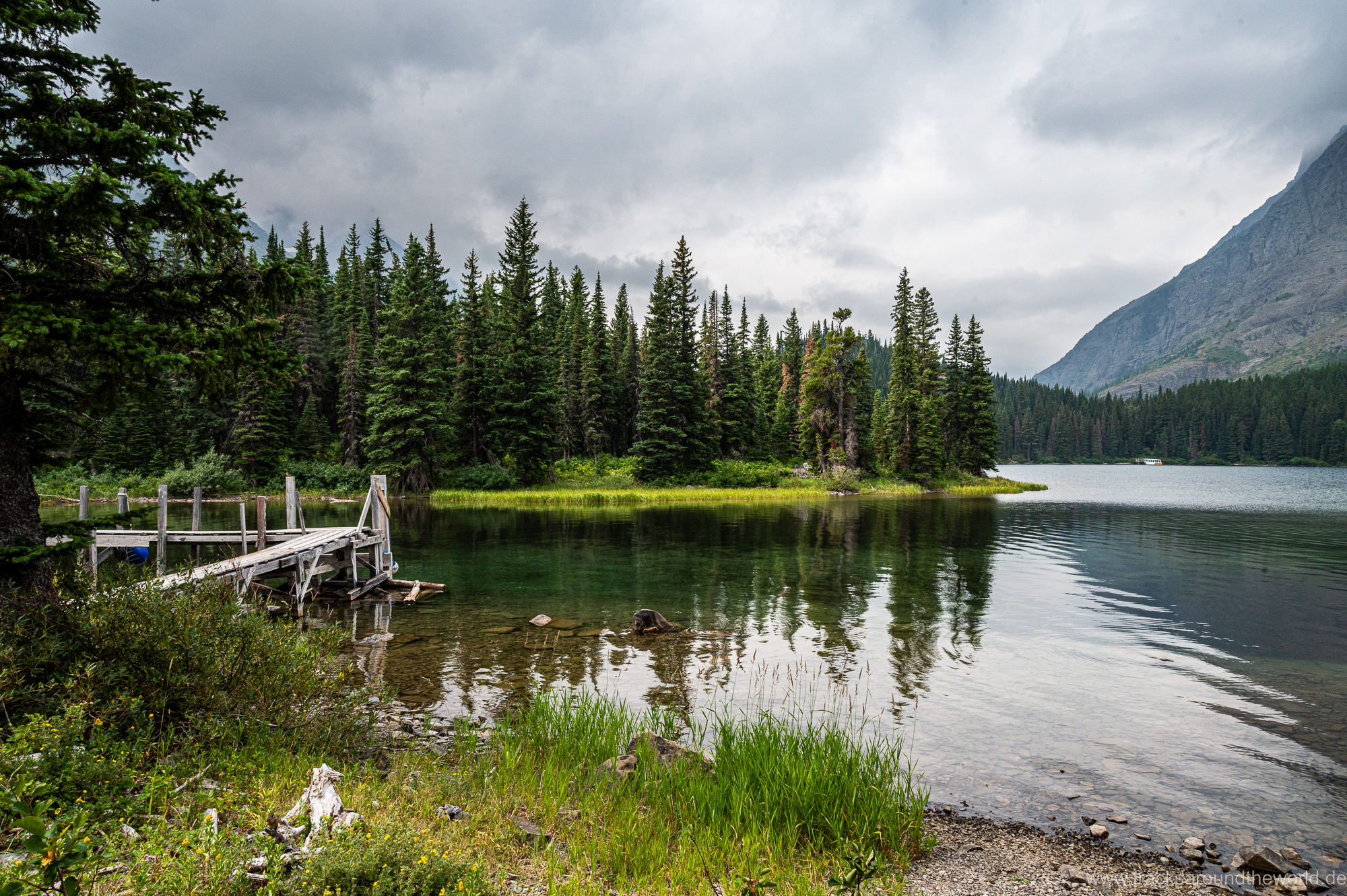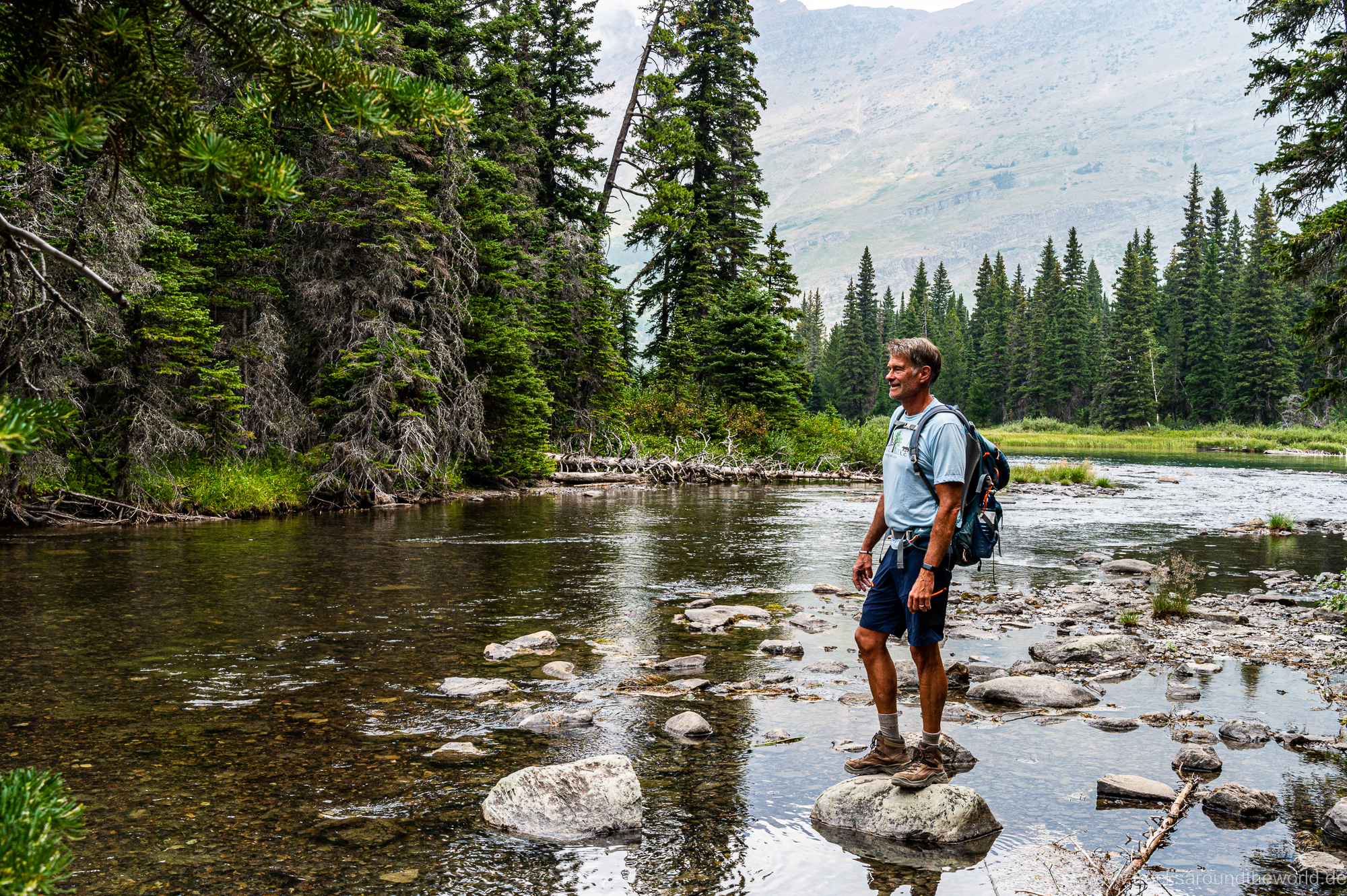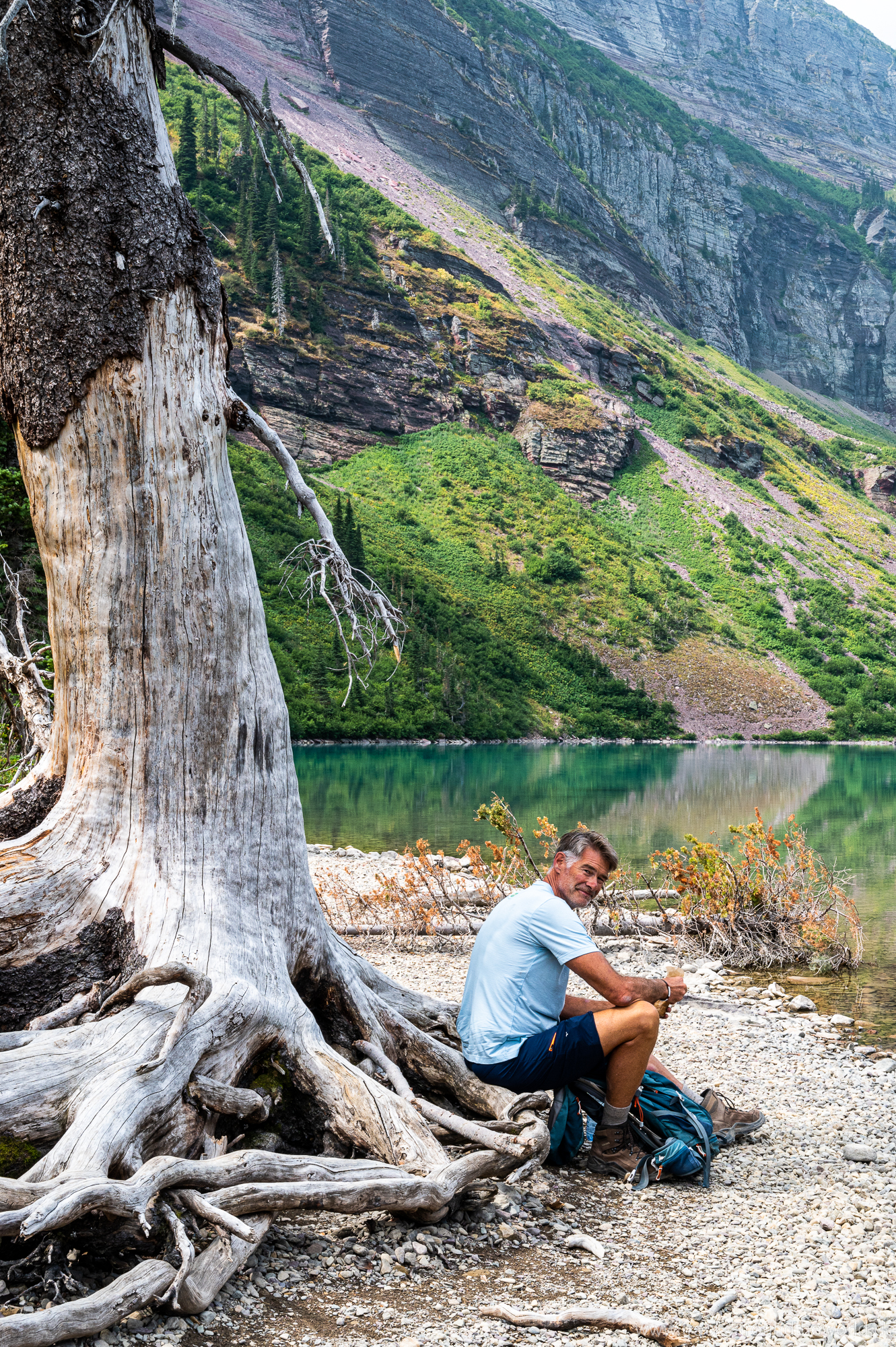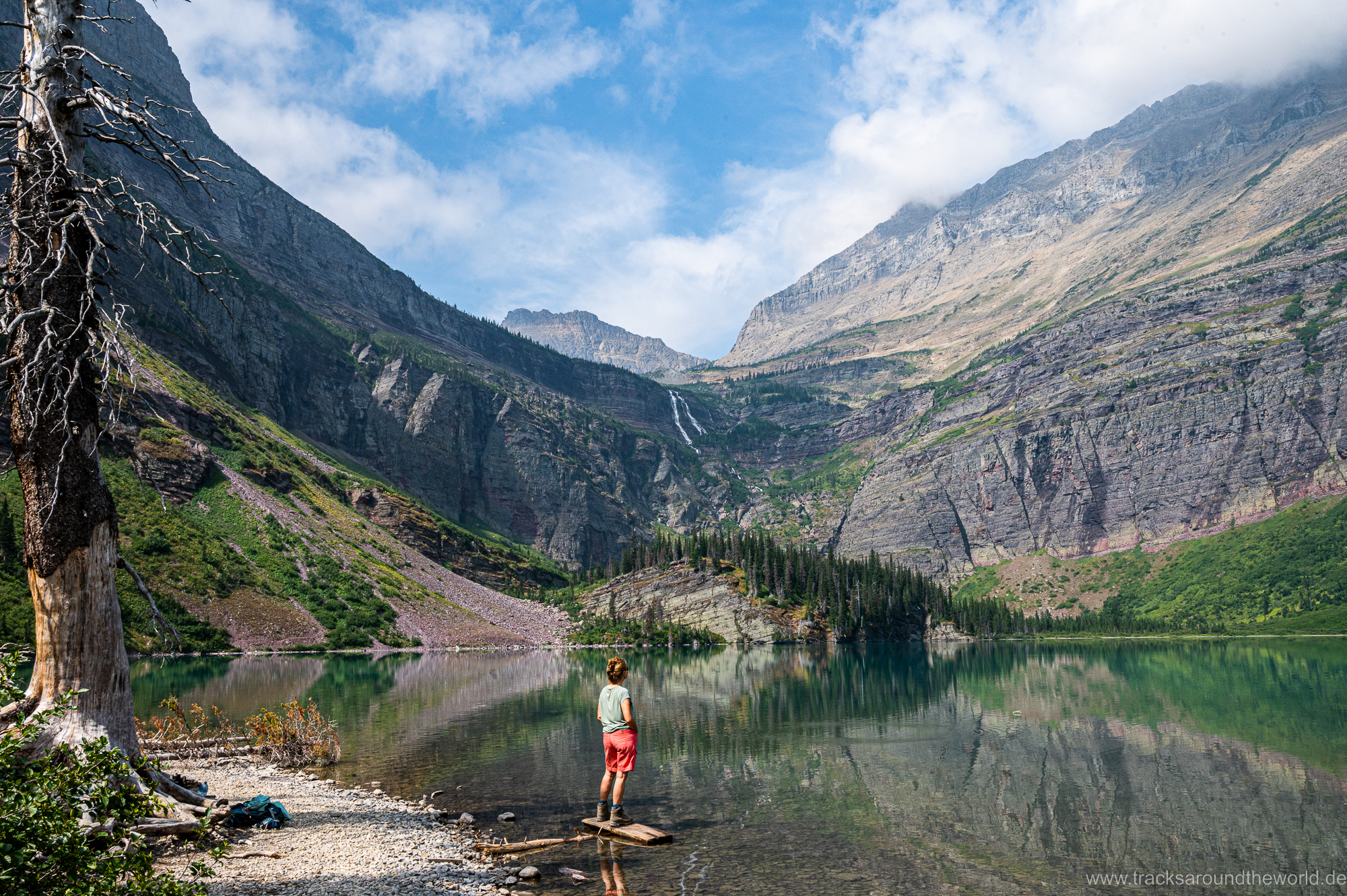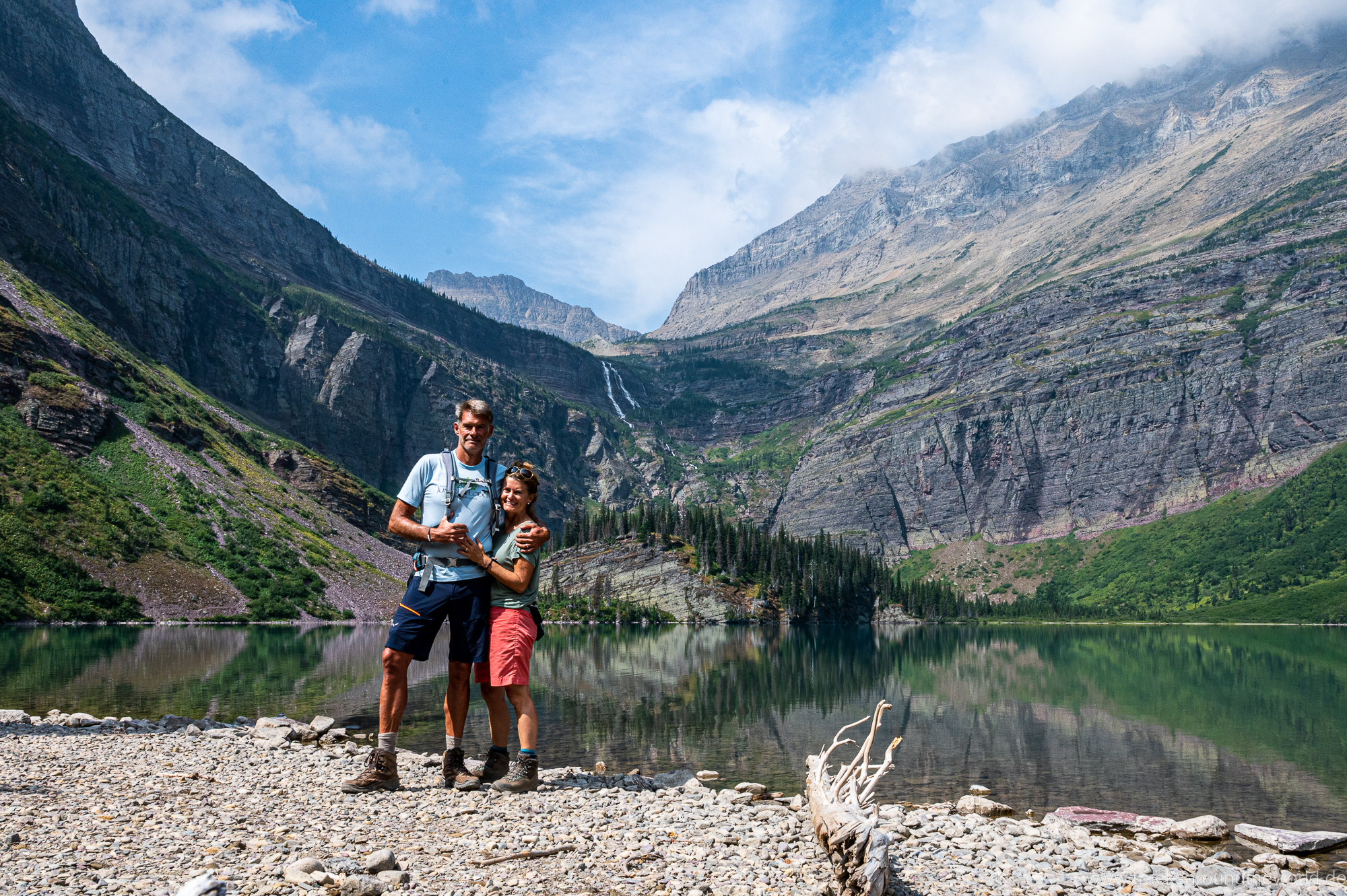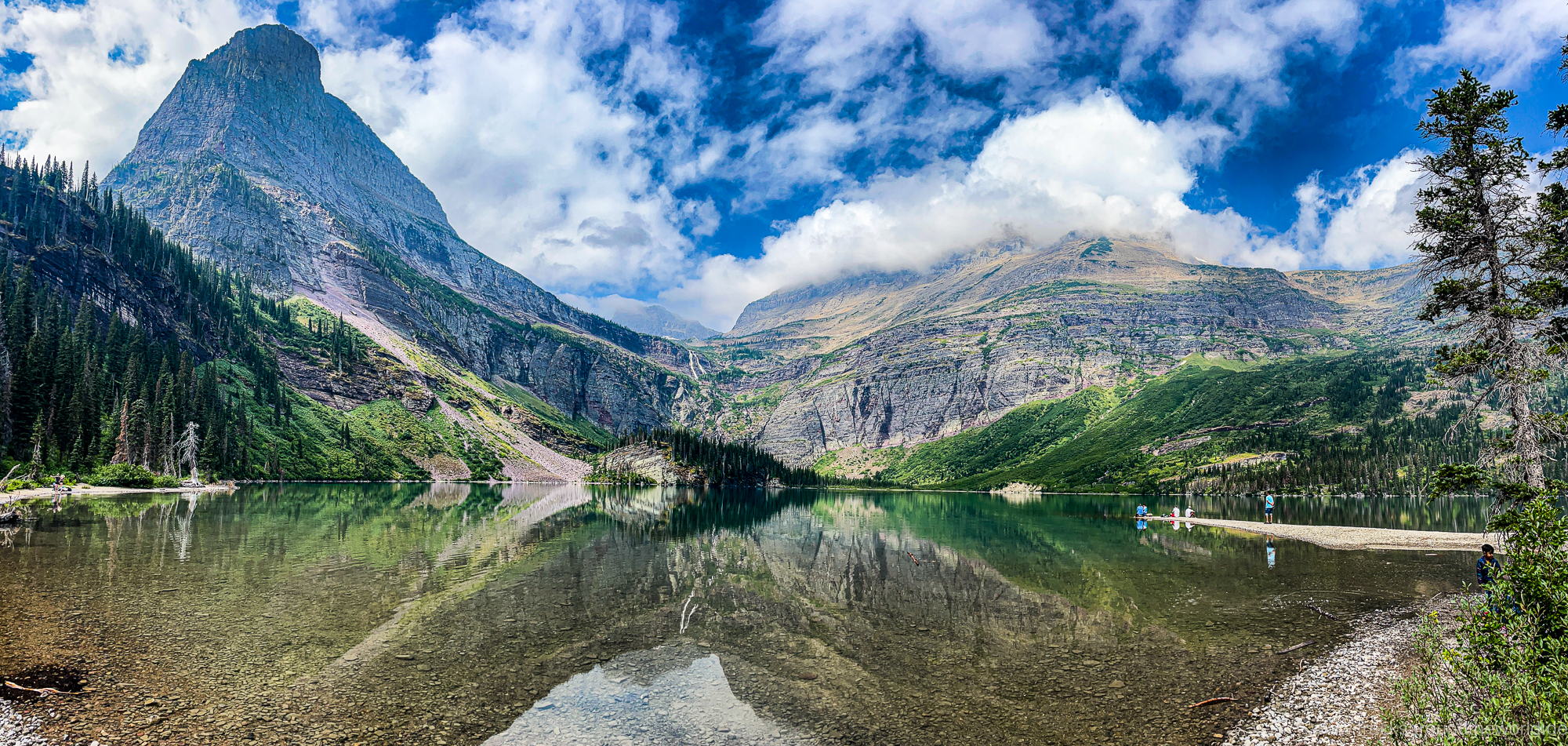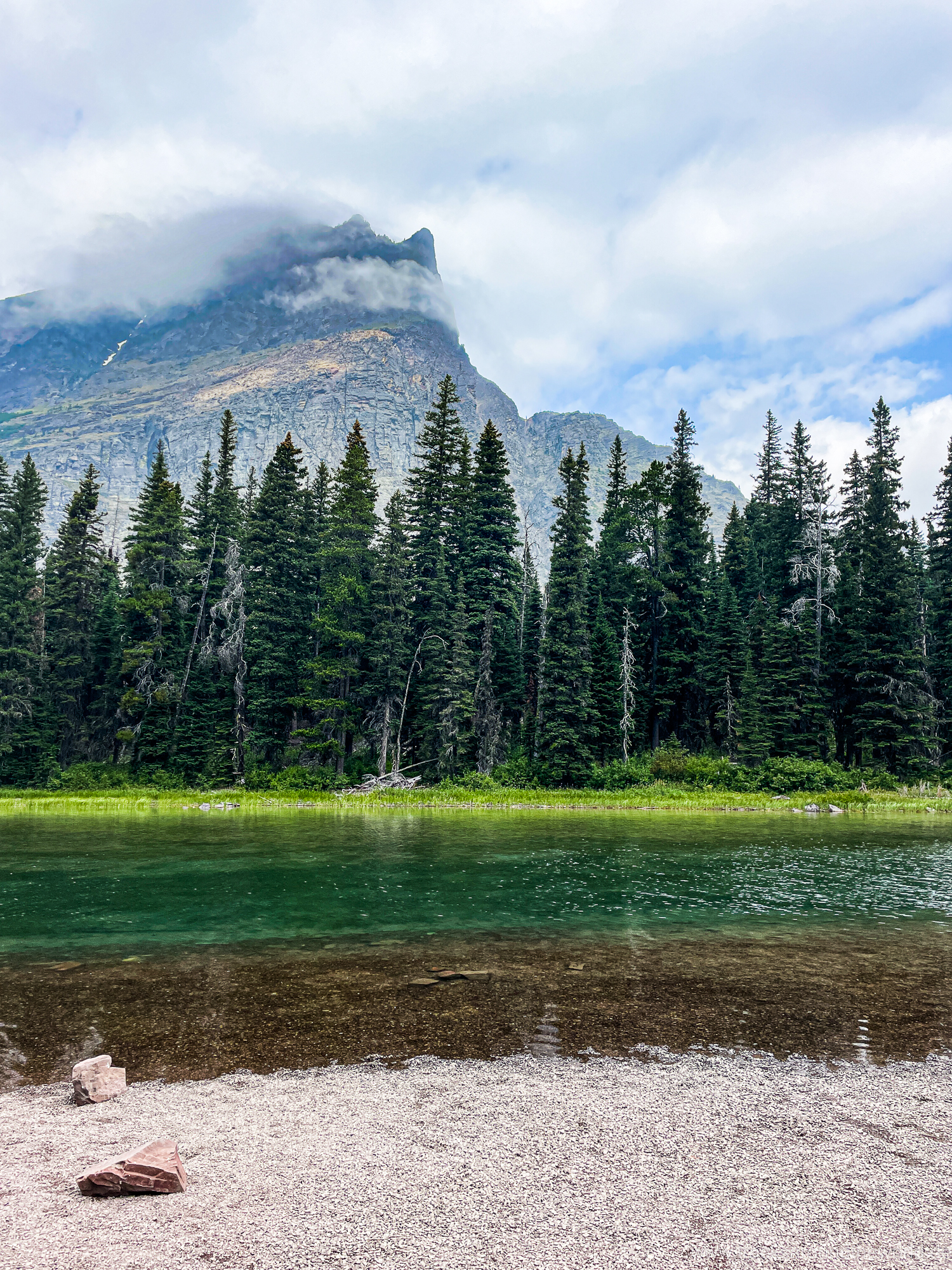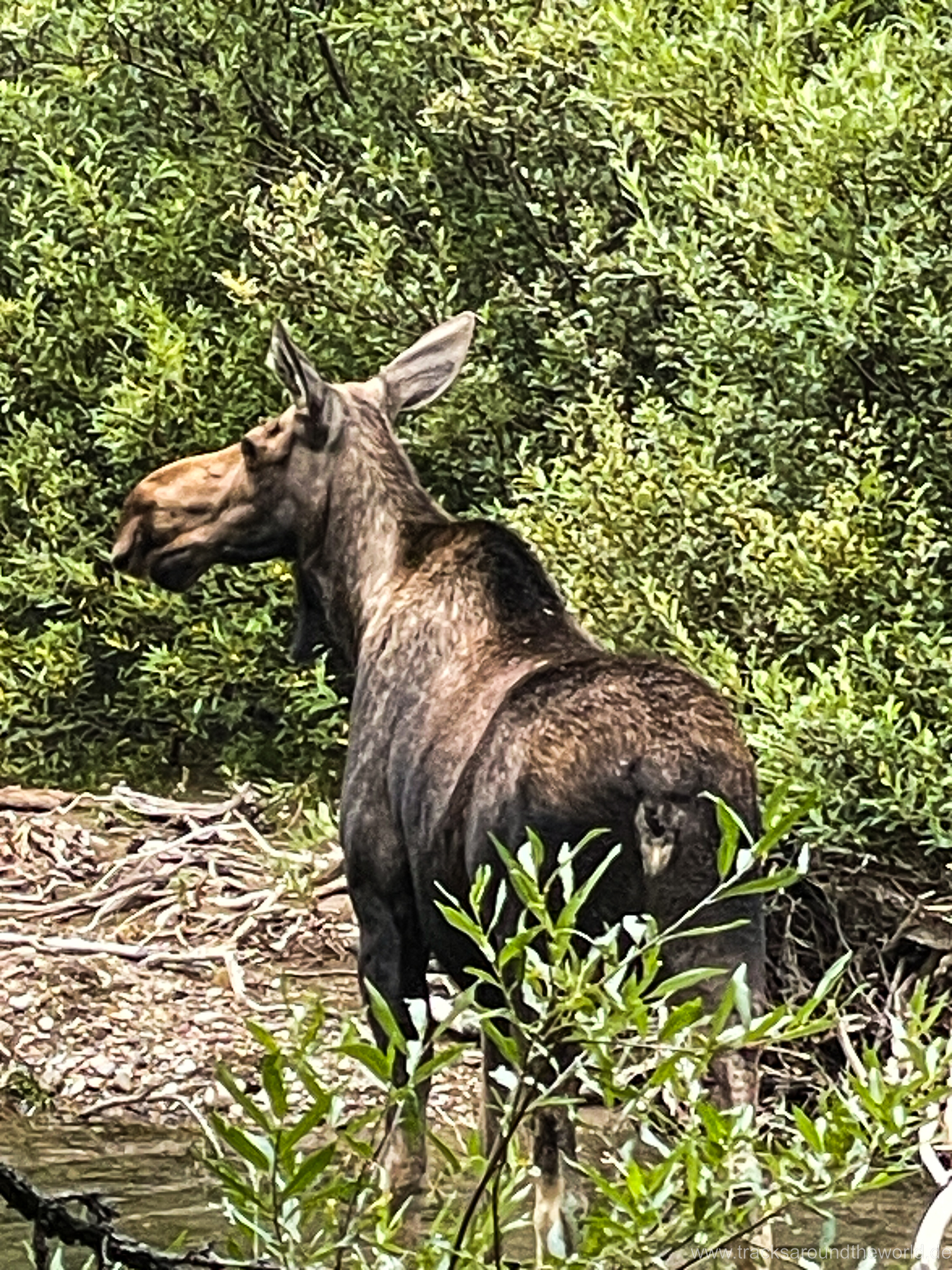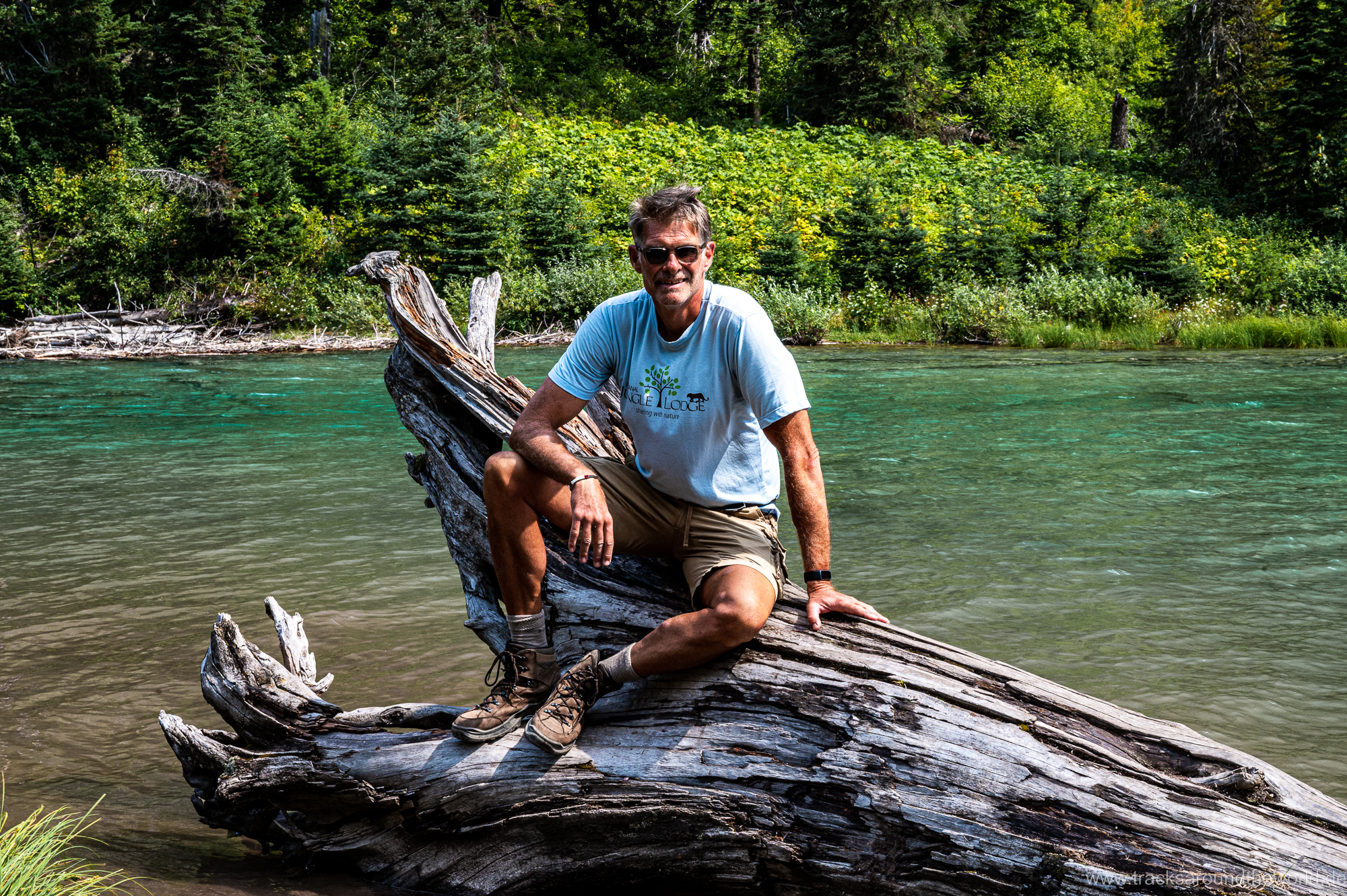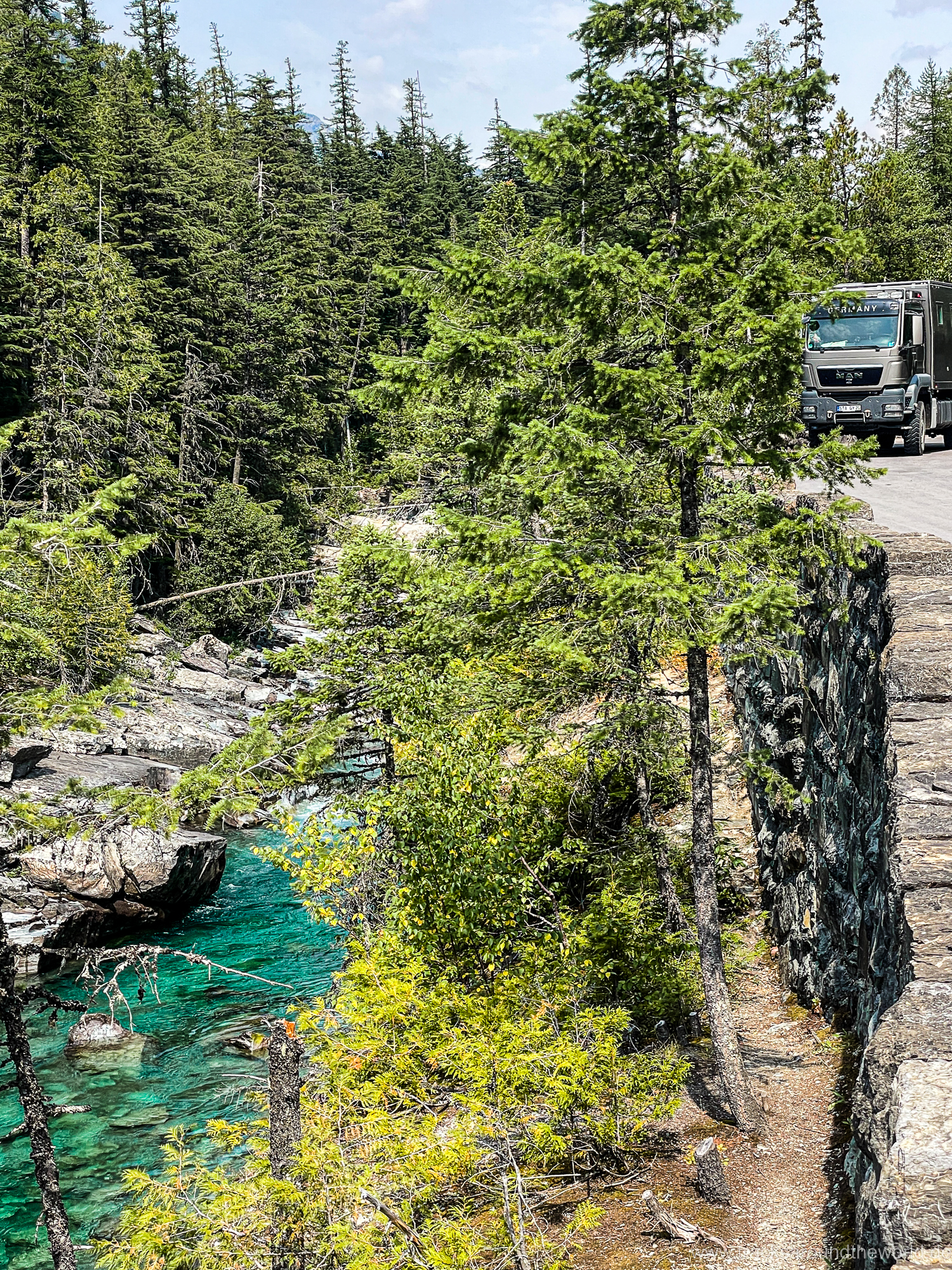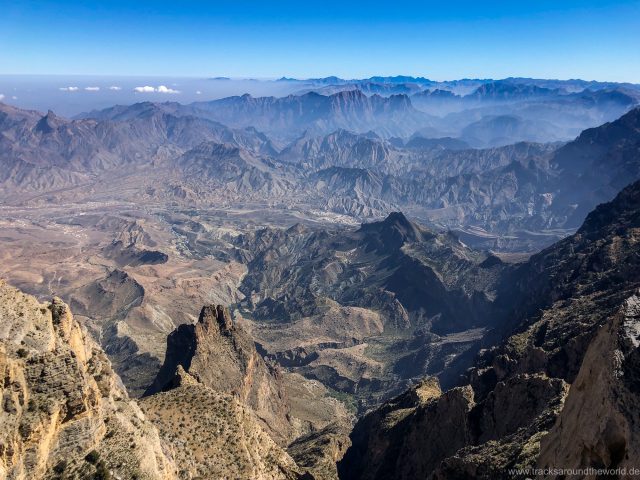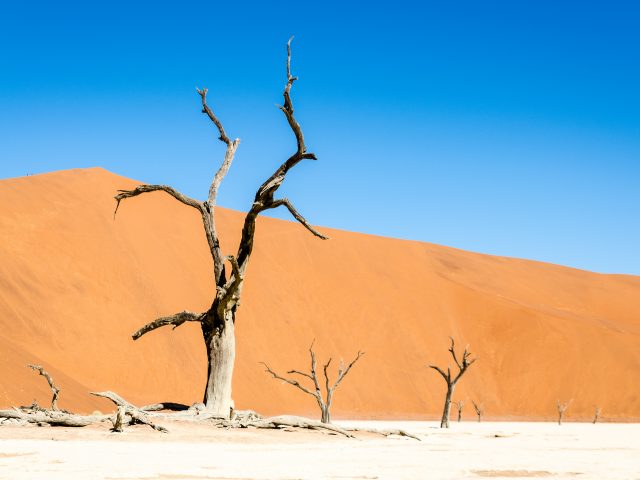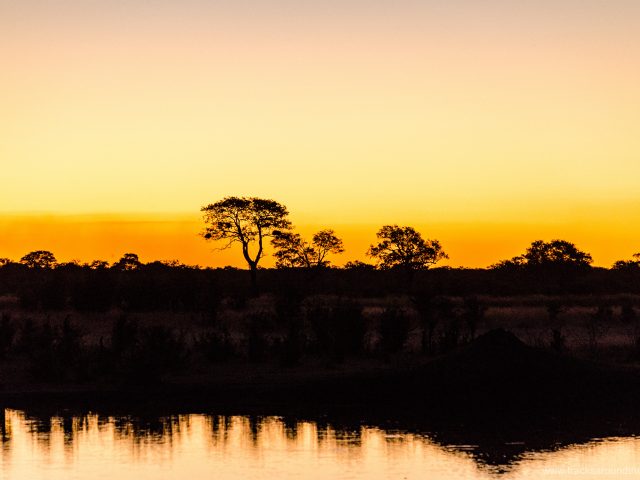After our great time at Jasper/Yoho and Banff N.P. we desperately have to replenish our supplies and want to combine this with sightseeing of the fastest growing Canadian city – Calgary. On the way out of the Rockies and into the Alberta Prairie we have the opportunity to visit a PowWow in the pretty town of Braggs Creek (PowWows are traditional First Nations festivals where you can see ancient customs, dances, costumes etc.). Karin had been researching for those events for a long time and so far, we have always been in the wrong place at the wrong time… but now it fits! It’s a small, very personal PowWow and we’re even asked to dance along with the First Nations😉. Tini and Peter get the first and second prize – a cash prize that is of course distributed directly to the participating First Nations children. Unfortunately, as an “old dancing bear”, I am going out without an award! Karin photographs and films.
In Calgary, along with shopping, a thorough car wash of Shujaa and various other things, there is also a tire change at Peter’s MAN “Mad Max”. I’m happy to help and after removing and installing the new tires on Beadlock Rims 6 times I now have enough experience to have my own opinion on the pros and cons of Beadlock vs. Split Ring Rims we use.
Calgary with its almost 1.5 million inhabitants is an impressive, very modern and cosmopolitan city: with the oil and gas boom in the 1980s, many immigrants came from India, Pakistan etc., so that nowadays one feels almost like in an Asian city. The city and the inhabitants are wealthy (thanks to the raw material boom!) and the skyline is modern with extraordinary architecture… interrupted with old buildings from the time of the first settlements in the “Wild West”. The hard, long winters have led to large, covered shopping centers that are “weatherproof” connected to each other by means of closed skywalks and, in some cases, have huge tropical botanical gardens. In contrast to San Francisco and also Vancouver, which seem to have passed the peak of their development, for us Calgary is an impressive city with still a dynamic development.
Along the scenically very beautiful so-called “Foothills” (the particularly lush farmland located on the eastern foothills of the Rockies) with many historic farms, we continue south before we return to the Rockies on side slopes… this time off the beaten track, but with no less beautiful scenery. After two weeks travelling together, it’s time to say goodbye to Tini, Peter and Mad Max: they are moving further north to the Dempster Highway and to Alaska, where the summers are known to be very short. We’re heading south and soon to the U.S. It was a really great time with the three of you and it won’t be the last time we travel together for sure!
The Waterton Lakes N.P., which is still relatively unknown even to local Canadians, is our last destination in Canada. We make a great hike to Bertha Lake and go biking and horseback riding. Unfortunately, a large part of the park burned down in 2017, which leads to great floral vegetation on the nutritious, burned ground but also makes the scenery a bit depressing after a while.
The neighboring Glacier National Park, already in Montana, is not only much better known and therefore more heavily frequented during the peak tourist season at the beginning of August, it also presents us with a few logistical challenges: The main attraction – which is the already in the 1920s built “Going to the Sun” pass road, may only be used by vehicles under seven meters in length. Also, at this time of year, each of the four sections of the N.P. require a separate “Vehicle Permit”, which you can either book months/years in advance or you bid for a few remaining lots for the following day at an online auction which takes place daily at 8:00 a.m. Conclusion: it takes a certain amount of planning for this national park, but we manage to find an optimal solution.
We explore the “Going to the Sun” pass road with the very well organized, free shuttle buses and then make one of our most beautiful high mountain hikes ever from Logan Pass: the “Highline Trail”. The challenge is not so much the 20 km long distance, but the extreme heat on the descent… Karin almost collapses and can only be “reactivated” by the cool water in a stream that we pass at the very last moment. We drive into the “Many Glaciers” section (for which we were not able to get a vehicle permit via the daily bidding process) before 6:00 a.m. (which is also possible without a permit) and then go back to sleep before we start the hike to the inspiring Grinnell Lake. And for the “McDonald Lake” section on the west side of the park we were able to get a permit via the bidding process.
Despite all the restrictions, which frankly speaking make perfect sense due to the influx of visitors, the very limited parking spaces and the narrow mountain roads, we managed to have three spectacular days in unique nature. As a fundamentally restriction-averse overlander, you should by no means be deterred from visiting this park. All in all great experiences and another highlight on our North America trip.


